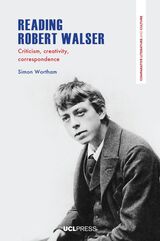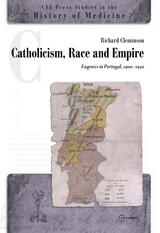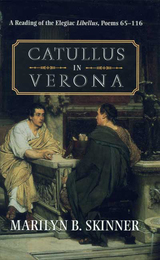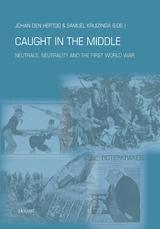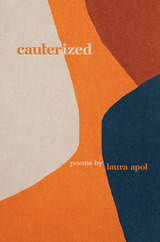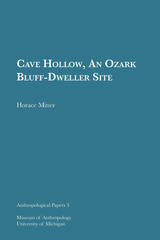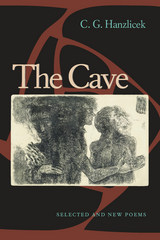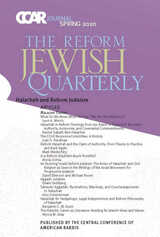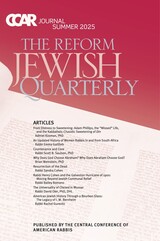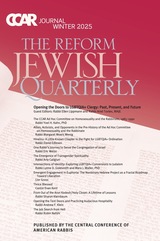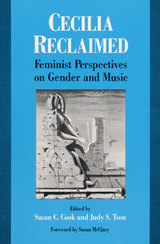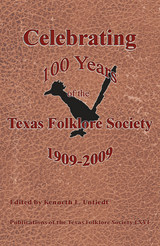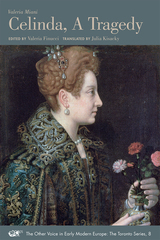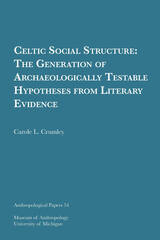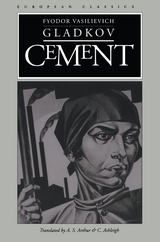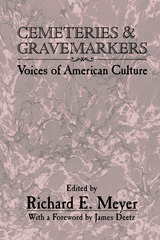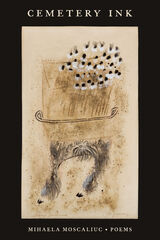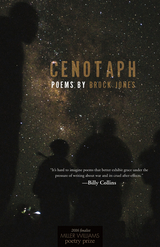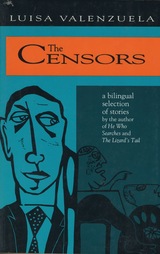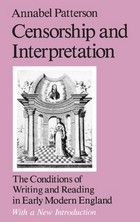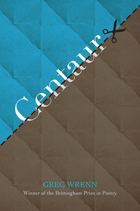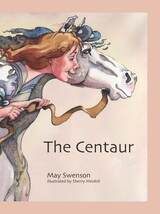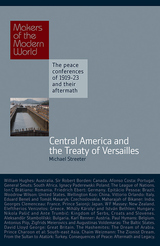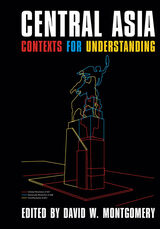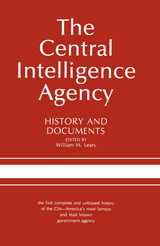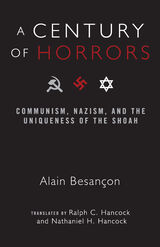 The Catholic Voter in American Politics: The Passing of the Democratic Monolith
William B. Prendergast
Georgetown University Press, 1999 Once a keystone of the Democratic Party, American Catholics are today helping to put Republicans in office. This book traces changes in party allegiance and voting behavior of Catholics in national elections over the course of 150 years and explains why much of the voting bloc that supported John F. Kennedy has deserted the Democratic coalition. William B. Prendergast analyzes the relationship between Catholics and the GOP from the 1840s to 1990s. He documents a developing attachment of Catholics to Republican candidates beginning early in this century and shows that, before Kennedy, Catholics helped elect Eisenhower, returned to the polls in support of Nixon and Reagan, and voted for a Republican Congress in 1994. To account for this shifting allegiance, Prendergast analyzes transformations in the Catholic population, the parties, and the political environment. He attributes these changes to the Americanization of immigrants, the socioeconomic and educational advancement of Catholics, and the emergence of new issues. He also cites the growth of ecumenicism, the influence of Vatican II, the abatement of Catholic-Protestant hostility, and the decline of anti-Catholicism in the Republican party. Clearly demonstrating a Catholic move toward political independence, Prendergast's work reveals both the realignment of voters and the influence of religious beliefs in the political arena. Provocative and informative, it confirms the opinion of pollsters that no candidate can take the vote of the largest and most diverse religious group in the nation for granted.
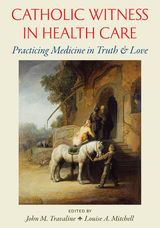 Catholic Witness in Health Care: Practicing Medicine in Truth and Love
John M. Travaline
Catholic University of America Press, 2017 Catholic health care is about ethics but also "ethos" – not only what we shouldn't do but a vision for what we should do with love. The issues it faces don't just concern academic bioethicists – they concern every faithful Catholic doctor, nurse, practitioner, and even patient. Modern medical practitioners on the ground, day-in, day-out, wrestling with medical moral matters, witnessing what is happening in American medicine today, while also striving to witness to their Catholic faith in living out their medical vocation – these are the primary authors of this unique book, and these are the readers it hopes to serve.
Catholic Witness in Health Care integrates the theoretical presentation of Catholic medical ethics with real life practice. It begins with fundamental elements of Catholic care, touching upon Scripture, moral philosophy, theology, Christian anthropology, and pastoral care. The second part features Catholic clinicians illuminating authentic Catholic medical care in their various medical disciplines: gynecology and reproductive medicine, fertility, pediatrics, geriatrics, critical care, surgery, rehabilitation, psychology, and pharmacy. Part three offers unique perspectives concerning medical education, research, and practice, with an eye toward creating a cultural shift to an authentically Catholic medical ethos.
Readers of this book will learn essential elements upon which the ethics of Catholic medical practice is founded and gain insights into practicing medicine and caring for others in an authentically Catholic way.
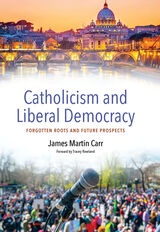 Catholicism and Liberal Democracy: Forgotten Roots and Future Prospects
James Martin Carr
Catholic University of America Press, 2022 Catholicism and Liberal Democracy seeks to clarify if there is a place for Catholicism in the public discourse of modern liberal democracy, bringing secular liberalism, as articulated by Jürgen Habermas, into conversation with the Catholic tradition.
James Martin Carr explores three aspects of the Catholic tradition relevant to this debate: the Church’s response to democracy from the nineteenth century up until the eve of the Second Vatican Council; the Council’s engagement with modernity, in particular through Gaudium et spes and Dignitatis humanae; and Joseph Ratzinger’s theology of politics as a particularly incisive (and influential) articulation of the Catholic tradition in this area.
Jürgen Habermas’s theorization of the place of religion in modern democracy, both in his earlier secularist phase and after his ‘post-secular’ turn, is evaluated. The adequacy of Habermas’s recent attempts to accommodate religious citizens are critically examined and it is argued that developments in his later thought logically require a more thoroughgoing revision of his earlier theory. These developments, it is argued, create tantalizing openings for fruitful dialogue between Habermas and the Catholic tradition.
Using analytical tools drawn from communications theory, the debates on same-sex marriage at Westminster and in the Irish referendum campaign are analyzed, assessing whether Catholic contributions to these debates comply with Habermasian rules of civic discourse. In light of this analysis, the prospects of, and impediments to, Catholic participation in public discourse are appraised.
Carr concludes by proposing a Ratzingerian critique of contemporary attempts to redefine marriage within a broader, more fundamental critique of the modern democratic state as currently configured. A political system founded upon secularist monism cannot but regard Christian Gelasianism, and its Catholic variant in particular, as an existential threat. Thus, Catholics, however Habermasian their political behavior, can never be more than uneasy bedfellows with modern liberal democracy.
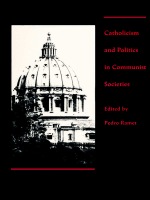 Catholicism and Politics in Communist Societies
Pedro Ramet, ed.
Duke University Press, 1990 This book is volume two of a three-volume work, Christianity Under Stress, which focuses on the experiences of Christian churches in contemporary communist and socialist societies. In this volume a distinguished group of experts examines the changing relationship of the Catholic church to contemporary communist and socialist societies in Eastern Europe, Latin America, and Asia. Catholicism has, on the one hand, traditionally regarded earthly life as of secondary importance—as an instrument of spiritual transformation—and, on the other, has ascribed great value to the early institutions of the church, taking great interest in temporal matters that affects its institutional concerns. Against the backdrop of this duality, the church has changed over the centuries, adapting to local and national conditions. Catholicism and Politics in Communist Societies surveys these local and national adaptations in their historical contexts, linking the past experience of the church to its present circumstances. Organized around themes of tradition vs. modernity, hierarchy vs. lower clergy, and institutional structure vs. grass-roots organization, this comprehensive volume presents a detailed, country-by-country portrait of the political and social status of the church today in communist and socialist settings. Contributors. Pedro Ramet, Arthur F. McGovern, Roman Solchanyk, Ivan Hvat, Robert F. Goeckel, C. Chrypinski, Milan J. Reban, Leslie Laszlo, Janice Broun, Eric O. Hanson, Stephen Denney, Thomas E. Quigley, Humberto Belli, Hansjakob Stehle, George H. Williams
Catholicism, Race and Empire: Eugenics in Portugal, 1900-1950
Richard Cleminson
Central European University Press, 2014 This monograph places the science and ideology of eugenics in early twentieth century Portugal in the context of manifestations in other countries in the same period. The author argues that three factors limited the impact of eugenics in Portugal: a low level of institutionalization, opposition from Catholics and the conservative nature of the Salazar regime. In Portugal the eugenic science and movement were confined to three expressions: individualized studies on mental health, often from a 'biotypological' perspective; a particular stance on racial miscegenation in the context of the substantial Portuguese colonial empire; and a diffuse model of social hygiene, maternity care and puericulture.
 Catholics and American Politics
Mary T. Hanna
Harvard University Press, 1979 Despite the constitutional division of church and state, the impact of Catholics on American politics in the 1960s and 1970s has been remarkable--as the names of the Kennedys, Eugene McCarthy, Thomas "Tip" O'Neill, Peter Rodino, Thomas Eagleton, the Berrigan brothers, and Cesar Chavez will attest. In this portrait of American Catholicism, Mary Hanna intensely analyzes the political influence of this enormously complex organization. She focuses on the role of the Church in providing the means for an ethnic group to challenge and contribute to the values of the larger society.
Hanna recognizes that the Church is constantly striving to maintain a balance between changing social conditions and the principles of faith. In her analysis of the dynamics of this balance, she asks, for example, why the Church has had such influence on its members on the question of abortion, but has been somewhat less effective on questions relating to minority welfare. Interviews with working-class leaders in Catholic "ethnic" communities provide a new understanding of the complexities of Catholic feeling on these timely issues. Hanna's chapter on the subtleties of the abortion issue, as interpreted by church leaders, Catholic politicians, and the lay population, is a model of scholarship.
This study applies the methods of quantification, survey research, and interviewing to public policy, and yields unexpected results. For example, despite Catholics' stereotyped image as conservative and antiprogressive, Hanna shows that Catholic voters are very liberal on the subject of government's role in solving problems related to the general welfare-health care, the environment, education, crime, drug addiction. She also finds upward mobility in Catholics' education and especially their income. This work combines data from national surveys with personal interviews of clergymen and other Catholic public figures. Hanna's comprehensiveness, documentation, and innovation make this a searching analysis of contemporary American Catholicism.
 The Catholics and German Unity: 1866-1871
George G. Windell
University of Minnesota Press, 1954 The Catholics and German Unity was first published in 1954. Minnesota Archive Editions uses digital technology to make long-unavailable books once again accessible, and are published unaltered from the original University of Minnesota Press editions. The period of German history between the overthrow of the old German Confederation in 1866 and the establishment of the Second Reich in 1871 was critical and far-reaching in its influence upon subsequent events in Germany and in Europe. It is, therefore, a period that still merits close scrutiny and analysis in all its aspects by historians. In this detailed study, Professor Windell traces the development of political movements among German Catholics during those years and explores the relationship of the various streams of Catholic political action to the larger questions of German history. The War of 1866, which ended Austrian predominance in Germany, was a shattering blow to German Catholics. During the next five years they gradually adjusted to the new situations and were responsible for a series of political movements which exerted a powerful and generally underestimated effects on state governments, on other political parties, and on the domestic and foreign policy of Bismarck. Although a substantial amount of material was available on Catholic political activity in the individual German states, it had not, until now, been synthesized into a comprehensive, single work placing these events in proper perspective against the broader canvas of history. Of this book Hans Rothfels, professor of history at the University of Chicago and the University of Tubingen, Germany, says: "Without being partial to any side, in fact with considerable circumspection, the author analyzes and interprets a great nineteenth century dilemma to which the foundation of the German Reich adds only a specific issue."
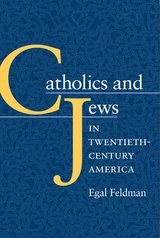 Catholics and Jews in Twentieth-Century America
Egal Feldman
University of Illinois Press, 2006 Rich with the insights of prominent Catholic and Jewish commentators and religious leaders, Catholics and Jews in Twentieth-Century America recounts the amazing transformation of a relationship of irreconcilable enmity to one of respectful coexistence and constructive dialogue. Focusing primarily on the Catholic doctrinal view of the Jews and its ramifications, Egal Feldman traces the historicalroots of anti-Semitism, examining tenacious Catholic beliefsincluding the idea that the Jews lost their place as the chosen people with the coming of Christianity, deicide, and the conviction that their purported responsibility for the Crucifixion justified subsequent Jewish misery. A new era of Catholic-Jewish relations opened in 1962 with Vatican II’s Declaration on the Jews, reversing the theology of contempt. Feldman explores the strides made in improving relations, such as the Vatican’s diplomatic recognition of the Jewish state, as well as a number of recent issues.
 Catholics and Politics: The Dynamic Tension Between Faith and Power
Kristin E. Heyer, Mark J. Rozell, and Michael A. Genovese, Editors
Georgetown University Press, 2008 Catholic political identity and engagement defy categorization. The complexities of political realities and the human nature of such institutions as church and government often produce a more fractured reality than the pure unity depicted in doctrine. Yet, in 2003 under the leadership of then-prefect Joseph Cardinal Ratzinger (now Pope Benedict XVI), the Congregation for the Doctrine of the Faith issued a "Doctrinal Note on Some Questions Regarding the Participation of Catholics in Political Life." The note explicitly asserts, "The Christian faith is an integral unity, and thus it is incoherent to isolate some particular element to the detriment of the whole of Catholic doctrine. A political commitment to a single isolated aspect of the Church's social doctrine does not exhaust one's responsibility toward the common good." Catholics and Politics takes up the political and theological significance of this "integral unity," the universal scope of Catholic concern that can make for strange political bedfellows, confound predictable voting patterns, and leave the church poised to critique narrowly partisan agendas across the spectrum. Catholics and Politics depicts the ambivalent character of Catholics' mainstream "arrival" in the U.S. over the past forty years, integrating social scientific, historical and moral accounts of persistent tensions between faith and power. Divided into four parts—Catholic Leaders in U.S. Politics; The Catholic Public; Catholics and the Federal Government; and International Policy and the Vatican—it describes the implications of Catholic universalism for voting patterns, international policymaking, and partisan alliances. The book reveals complex intersections of Catholicism and politics and the new opportunities for influence and risks of cooptation of political power produced by these shifts. Contributors include political scientists, ethicists, and theologians. The book will be of interest to scholars in political science, religious studies, and Christian ethics and all lay Catholics interested in gaining a deeper understanding of the tensions that can exist between church doctrine and partisan politics.
 Catholics, Anglicans, and Puritans: Seventeenth-Century Essays
Hugh Trevor-Roper
University of Chicago Press, 1988 Renaissance Essays, published in 1985, confirmed Hugh Trevor-Roper's reputation as one of the most distinguished writers of history and as an unequaled master of the historical essay. Received with critical acclaim in both England and the United States, the volume gathered wide-ranging essays on both British and European history from the fifteenth century to the early seventeenth centuries. This sequel, Catholics, Anglicans, and Puritans, is composed of five previously unpublished essays on the intellectual and religious movements which lay behind the Puritan revolution in England and Ireland.
The opening essay, a skillful work of historical detection, investigates the strange career of Nicholas Hill. In "Laudianism and Political Power," Trevor-Roper returns to the subject of his first, now classic, book. He analyzes the real significance of the ecclesiastical movement associated with Archbishop Laud and speculates on what might have happened if the Stuarts had not abandoned it. "James Ussher, Archbishop of Armagh" deals with a key figure in the intellectual and religious life of his time. A long essay on "The Great Tew Circle" reinstates Lord Falkland as an important influence on the continuity of ideas through the English revolution. The final essay reassesses the political ideology of Milton.
English intellectual history, as Trevor-Roper constructs it here for the seventeenth century, is conditioned by its social and political context. Always engaging and fresh, these essays deal with currently interesting historical topics and up-to-date controversies.
 Catholics, Slaveholders, and the Dilemma of American Evangelicalism, 1835-1860
W. Jason Wallace
University of Notre Dame Press, 2010
Although slaveholding southerners and Catholics in general had little in common, both groups found themselves relentlessly attacked in the northern evangelical press during the decades leading up to the Civil War. In Catholics, Slaveholders, and the Dilemma of American Evangelicalism, 1835-1860, W. Jason Wallace skillfully examines sermons, books, newspaper articles, and private correspondence of members of three antebellum groups--northern evangelicals, southern evangelicals, and Catholics--and argues that the divisions among them stemmed, at least in part, from disagreements over the role that religious convictions played in a free society.
Focusing on journals such as The Downfall of Babylon, Zion's Herald, The New York Evangelist, and The New York Observer, Wallace argues that northern evangelicals constructed a national narrative after their own image and, in the course of vigorous promotion of that narrative, attacked what they believed was the immoral authoritarianism of both the Catholic and the slaveholder. He then examines the response of both southerners and Catholics to northern evangelical attacks. As Wallace shows, leading Catholic intellectuals interpreted and defended the contributions made by the Catholic Church to American principles such as religious liberty and the separation of church and state. Proslavery southern evangelicals, while sharing with evangelicals in the North the belief that the United States was founded on Protestant values, rejected the attempts by northern evangelicals to associate Christianity with social egalitarianism and argued that northern evangelicals compromised both the Bible and Protestantism to fit their ideal of a good society. The American evangelical dilemma arose from conflicting opinions over what it meant to be an American and a Christian.
"Despite their obvious differences, antebellum American Catholics and pro-slavery Southern evangelicals had one feature in common: their powerful aversion to Northern evangelicals' transformation of the Christian faith into a crusading gospel of 'progress.' By exploring their respective critiques of Northern evangelical theology, with its overconfidence in individual and social perfectibility and its tendency to identify Christianity with American nationalism, W. Jason Wallace provides us with keen insight into American evangelicalism's characteristic dilemmas, many of which still bedevil it today." --Wilfred M. McClay, University of Tennessee at Chattanooga
"Jason Wallace makes a clear argument of why Northern evangelical Protestants were consistent in opposing both slavery and Catholicism. Although the general relationship between abolitionists and nativists has been well known, Wallace not only proves the connection but also shows the theological basis for that connection. This book will be of interest to the academic specialist and to a wider audience interested in American religious history." --Gerald Fogarty, S.J., University of Virginia
"For those who like their history complicated, Jason Wallace's book should be at the top of their reading list. In this book Wallace takes the familiar dispute between abolitionist and pro-slavery evangelical Protestants and throws in Roman Catholicism, not only as an intriguing voice in the debates about slavery but also as a related subject of debate, with Roman Catholicism representing to evangelicals another form of slavery. The result is an episode that opens the question of slavery to the larger political and economic context of European and American debates about freedom and tyranny after the eighteenth century revolutions. Wallace argues convincingly that these disputes produced no winners, and suggests just as plausibly that the reputed winners--the northern evangelicals--lost as much as they won." --D. G. Hart, Westminster Seminary California
 Cathonomics: How Catholic Tradition Can Create a More Just Economy
Anthony M. Annett. Foreword by Jeffrey D. Sachs
Georgetown University Press, 2024 Inequality is skyrocketing. In this world of vast riches, millions of people live in extreme poverty, barely surviving from day to day. All over the world, the wealthy's increasing political power is biasing policy away from the public interest and toward the financial interests of the rich. At the same time, many countries are facing financial fragility and diminished well-being. On top of it all, the global economy, driven by fossil fuels, has proven to be a collective act of self-sabotage with the poor on the front lines. In a new foreword to his book, Anthony M. Annett examines the Biden administration's economic policies and discusses reactions to Cathonomics. A growing chorus of economists and politicians is demanding a new paradigm to create a global economy that seeks the common good. In Cathonomics, Annett unites insights in economics with those from theology, philosophy, climate science, and psychology, exposing the failures of neoliberalism while offering us a new model rooted in the wisdom of Catholic social teaching and classical ethical traditions. Drawing from the work of Pope Leo XIII, Pope Francis, Thomas Aquinas, and Aristotle, Annett applies these teachings to discuss current economic challenges, such as inequality, unemployment and underemployment, climate change, and the roles of business and finance. Cathonomics is an ethical and practical guide for readers of all faiths and backgrounds seeking to create a world economy that is more prosperous, inclusive, and sustainable for all.
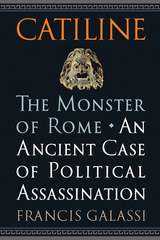 Catiline, The Monster of Rome: An Ancient Case of Political Assassination
Francis Galassi
Westholme Publishing, 2014 Leader of a Conspiracy to Overthrow the Roman Republic, a Reform-Minded Senator Whose Reputation, Life, and Legacy Were Destroyed to Maintain the Status Quo
In 62 BC, Roman Senator Lucius Sergius Catiline lay dead on a battlefield in Tuscany. He was slain along with his soldiers after his conspiracy to overthrow the Roman Republic had been exposed by his adversary Cicero. It was an ignominious end for a man described at the time as a perverted, insane monster who had attempted to return his family to fortune and social standing. Chroniclers were not kind to Catiline, and his name over the centuries was synonymous with treachery. Recently, scholars have been reappraising the life and influence of this ancient Roman. In Catiline, The Monster of Rome: An Ancient Case of Political Assassination, economic historian Francis Galassi provides the first book-length account of Catiline in more than a generation.
Rome first achieved a status as an empire during Catiline’s lifetime. The republic was, however, constantly at war with foreign powers and occasionally its own allies, and the disparity between the wealthy and the poor threatened to destabilize society. Catiline was from an aristocratic but impoverished family and first served as an officer with Cornelius Sulla during that general’s purges against Gaius Marius, the supposed champion of the oppressed masses. Catiline’s goal was to serve Sulla and then use that as a springboard to public office where he could recover his family’s former wealth and honor. However, the senatorial elite became suspicious if not threatened by the upstart Catiline and blocked his ambitions. Catiline was dogged by trumped-up charges, including raping a Vestal virgin and murdering his brother-in-law; he was acquitted each time, but his political life was ruined. With citizens demanding land and agrarian reform, Catiline genuinely embraced their dissatisfaction, and realizing that the elite would stop his attempt to gain status through elections, he organized a conspiracy to take control of Roman government through arms. Once his actions had been made public, many of his supporters and co-conspirators left him; but honoring the course he had chosen, he and his remaining soldiers fought a Roman army to their deaths. Rather than the “monster” as portrayed by his contemporaries, the author contends that Catiline was compelled to act for the benefit of common Romans to save Rome even if it meant overthrowing the government. As Galassi notes, Catiline’s contemporary, the slave Spartacus, has been a symbol of social reform for centuries, but it was actually Catiline, not Spartacus, who attempted to change Rome.
 Catina’s Haircut: A Novel in Stories
Paola Corso
University of Wisconsin Press, 2010 Catina’s Haircut: A Novel in Stories spans four generations of a peasant family in the brutal poverty of post-Unification southern Italy and in an immigrant’s United States. The women in these tales dare to cross boundaries by discovering magical leaps inherent in the landscape, in themselves, and in the stories they tell and retell of family tragedy at a time of political unrest. Through an oral tradition embedded in the stone of memory and the flow of its reinvention, their passionate tale of resistance and transformation courses forward into new generations in a new world.
A woman threatens to join the land reform struggle in her Calabrian hill town, against her husband’s will, during a call for revolution in 1919. A brother and sister turn to the village sorceress in Fascist Italy to bring rain to their father’s drought-stricken farm. In Pittsburgh, new immigrants witness a miraculous rescue during the Great Flood of 1936. A young girl courageously dives into the Allegheny River to save her grandfather’s only memento of the old country. With only broken English to guide her, a widow hops a bus in search of live chickens to cook for Easter dinner in her husband’s memory. An aging woman in the title story is on a quest to cut the ankle-length hair as hard as the rocky soil of Calabria in a drought. A lonely woman who survived World War II bombings in her close-knit village, struggles to find community as a recent immigrant. A daughter visits her mother’s hill town to try and fulfill a wish for her to see the Fata Morgana. These haunting images permeate Corso’s linked stories of loss, hope, struggle, and freedom. An official selection of The Sons of Italy® Book Club Best Books for General Audiences, selected by the Public Library Association
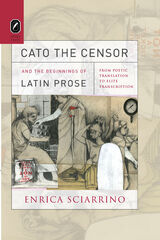 Cato the Censor and the Beginnings of Latin Prose: From Poetic Translation to Elite Transcription
Enrica Sciarrino
Ohio State University Press, 2011 In the past decade, classical scholarship has been polarized by questions concerning the establishment of a literary tradition in Latin in the late third century BCE. On one side of the divide, there are those scholars who insist on the primacy of literature as a hermeneutical category and who, consequently, maintain a focus on poetic texts and their relationship with Hellenistic precedents. On the other side are those who prefer to rely on a pool of Latin terms as pointers to larger sociohistorical dynamics, and who see the emergence of Latin literature as one expression of these dynamics. Through a methodologically innovative exploration of the interlacing of genre and form with practice, Enrica Sciarrinobridges the gap between these two scholarly camps and develops new areas of inquiry by rescuing from the margins of scholarship the earliest remnants of Latin prose associated with Cato the Censor—a “new man” and one of the most influential politicians of his day. By systematically analyzing poetic and prose texts in relation to one another and to diverse authorial subjectivities, Cato the Censor and the Beginnings of Latin Prose: From Poetic Translation to Elite Transcription offers an entirely new perspective on the formation of Latin literature, challenges current assumptions about Roman cultural hierarchies, and sheds light on the social value attributed to different types of writing practices in mid-Republican Rome.
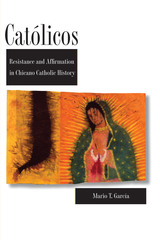 Católicos: Resistance and Affirmation in Chicano Catholic History
By Mario T. García
University of Texas Press, 2008 Chicano Catholicism—both as a popular religion and a foundation for community organizing—has, over the past century, inspired Chicano resistance to external forces of oppression and discrimination including from other non-Mexican Catholics and even the institutionalized church. Chicano Catholics have also used their faith to assert their particular identity and establish a kind of cultural citizenship. Based exclusively on original research and sources, Mario T. García here offers the first major historical study to explore the various dimensions of the role of Catholicism in Chicano history in the twentieth century. This is also one of the first significant studies in the still limited field of Chicano religious history. Topics range from how early Chicano Catholic intellectuals and civil rights leaders were influenced by Catholic Social Doctrine, to the role that popular religion has played in the lives of ordinary men and women in both rural and urban areas. García also examines faith-based Chicano community movements like Católicos Por La Raza in the 1960s and the Sanctuary movement in Los Angeles in the 1980s. While Latino/a history and culture has been, for the most part, inextricably linked with the tenets and practices of Catholicism, there has been very little written, until recently, about Chicano Catholic history. García helps to fill that void and explore the impact—both positive and negative—that the Catholic experience has had on the Chicano community.
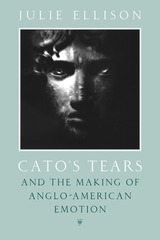 Cato's Tears and the Making of Anglo-American Emotion
Julie Ellison
University of Chicago Press, 1999 How did the public expression of feeling become central to political culture in England and the United States? In this ambitious revisionist account of a much expanded "Age of Sensibility," Julie Ellison traces the evolution of the politics of emotion on both sides of the Atlantic from the late seventeenth to the early nineteenth century.
Early popular dramas of this time, Ellison shows, linked male stoicism with sentimentality through portrayals of stoic figures whose civic sacrifices bring other men to tears. Later works develop a different model of sensibility, drawing their objects of sympathy from other races and classes—Native Americans, African slaves, servants. Only by examining these texts in light of the complex masculine tradition of stoic sentimentality, Ellison argues, can one interpret women's roles in the culture of sensibility.
In her conclusion, Ellison offers "a short history of liberal guilt," exploring the enduring link between male stoicism and male sensibility in political and cultural life from the late seventeenth century to today.
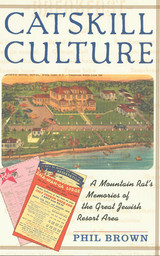 Catskill Culture: A Mountain Rat'S Memories Of
Phil Brown
Temple University Press, 2003 A century ago, New Yorkers, hungry for mountain air, good food, and a Jewish environment combined with an American way of leisure, began to develop a resort area unique in the world. By the 1950s, this summer Eden of bungalow colonies, summer camps, and over 900 hotels had attracted over a million people a year. This was the Jewish Catskills of Sullivan and Ulster Counties.
Born to a small hotel-owning family who worked for decades in hotels after losing their own, Phil Brown tells a story of the many elements of this magical environment. His own waiter's tales, his mother's culinary exploits as a chef, and his father's jobs as maitre d' and coffee shop operator offer a backdrop to the vital life of Catskills summers. Catskill Culture recounts the life of guests, staff, resort owners,entertainers, and local residents through the author's memories and archival research and the memories of 120 others.
The Catskills resorts shaped American Jewish culture, enabling Jews to become more American while at the same time introducing the American public to immigrant Jewish culture. Catskills entertainment provided the nation with a rich supply of comedians, musicians, and singers. Legions of young men and women used the Catskills as a springboard to successful careers and marriages.
A decline for the resort area beginning in the 1970s has led to many changes. Today most of the hotels and bungalow colonies are gone or in ruins, while other communities, notably those of the Hasidim, have appeared. The author includes an appendix listing over 900 hotels he has been able to document and invites readers to contact him with additional entries.
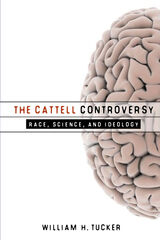 The Cattell Controversy: Race, Science, and Ideology
William H. Tucker
University of Illinois Press, 2008 Raymond Cattell, the father of personality trait measurement, was one of the most influential psychologists in the twentieth century, the author of fifty-six books, more than five hundred journal articles and book chapters, and some thirty standardized instruments for assessing personality and intelligence in a professional career that spanned almost seventy years. In August 1997, the American Psychological Association announced that Cattell had been selected the recipient of the American Psychological Foundation Gold Medal Award for Life Achievement in Psychological Science. Then, only two days before the scheduled ceremony, the APF abruptly postponed the presentation of the award due to concerns involving Cattell's views on racial segregation and eugenics. In addition to his mainstream research, Cattell had also authored a series of publications that posited evolutionary progress as the ultimate goal of human existence and argued that scientifically measurable criteria should be used to distinguish "successful" from "failing" racial groups so that the latter might be gradually "phased out" by non-violent methods such as regulation of birth control. Derived from science, Cattell's evolutionary philosophy was intended to be the basis of a full-blown religion. Although the earliest of these works had been published in the 1930s, near the end of an era in which eugenically based policies for human improvement were much more acceptable, Cattell promoted similar ideas well into the 1980s and '90s. The Cattell Controversy describes Cattell's socio-religious beliefs in detail and analyzes their relationship to his scientific contributions. William H. Tucker discusses the controversy that arose within the field in response to the award's postponement, after which Cattell withdrew his name from consideration for the award but insisted that his position had been distorted by taking statements out of context. Reflecting on these events, Tucker concludes with a discussion of the complex question of whether and how a scientist's ideological views should ever be a relevant factor in determining the value of his or her contributions to the field.
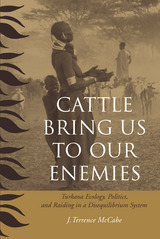 Cattle Bring Us to Our Enemies: Turkana Ecology, Politics, and Raiding in a Disequilibrium System
J. Terrence McCabe
University of Michigan Press, 2004 An in-depth look at the ecology, history, and politics of land use among the Turkana pastoral people in Northern Kenya
Based on sixteen years of fieldwork among the pastoral Turkana people, McCabe examines how individuals use the land and make decisions about mobility, livestock, and the use of natural resources in an environment characterized by aridity, unpredictability, insecurity, and violence. The Turkana are one of the world's most mobile peoples, but understanding why and how they move is a complex task influenced by politics, violence, historical relations among ethnic groups, and the government, as well as by the arid land they call home.
As one of the original members of the South Turkana Ecosystem Project, McCabe draws on a wealth of ecological data in his analysis. His long-standing relationship with four Turkana families personalize his insights and conclusions, inviting readers into the lives of these individuals, their families, and the way they cope with their environment and political events in daily life.
J. Terrence McCabe is Associate Professor of Anthropology, University of Colorado at Boulder.
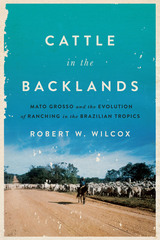 Cattle in the Backlands: Mato Grosso and the Evolution of Ranching in the Brazilian Tropics
By Robert W. Wilcox
University of Texas Press, 2017 Henry A. Wallace Award, The Agricultural History Society, 2018 Brazil has the second-largest cattle herd in the world and is a major exporter of beef. While ranching in the Amazon—and its destructive environmental consequences—receives attention from both the media and scholars, the states of Mato Grosso and Mato Grosso do Sul actually host the most cattle. A significant beef producer in Brazil beginning in the late nineteenth century, the region served as a laboratory for raising cattle in the tropics, where temperate zone ranching practices do not work. Mato Grosso ranchers and cowboys transformed ranching’s relationship with the environment, including the introduction of an exotic cattle breed—the Zebu—that now dominates Latin American tropical ranching. Cattle in the Backlands presents a comprehensive history of ranching in Mato Grosso. Using extensive primary sources, Robert W. Wilcox explores three key aspects: the economic transformation of a remote frontier region through modern technical inputs; the resulting social changes, especially in labor structures and land tenure; and environmental factors, including the long-term impact of ranching on ecosystems, which, he contends, was not as detrimental as might be assumed. Wilcox demonstrates that ranching practices in Mato Grosso set the parameters for tropical beef production in Brazil and throughout Latin America. As the region was incorporated into national and international economic structures, its ranching industry experienced the entry of foreign investment, the introduction of capitalized processing facilities, and nascent discussions of ecological impacts—developments that later affected many sectors of the Brazilian economy.
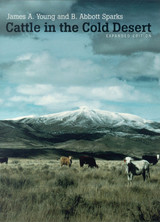 Cattle In The Cold Desert, Expanded Edition
James A. Young
University of Nevada Press, 2002 A sophisticated ecological analysis of ranching in northern Nevada featuring a new chapter and new epilogue by the authors.First published in 1985, Cattle in the Cold Desert has become a classic in the environmental history of the Great Basin, brilliantly combining a lively account of the development of the Great Basin grazing industry with a detailed scientific discussion of the ecology of its sagebrush/grassland plant communities. The volume traces the history of white settlement in the Great Basin from about 1860, along with the arrival of herds of cattle and sheep to exploit the forage resources of a pristine environment and, through the history of John Sparks, a pioneer cattleman, illustrates how the herdsmen interacted with the sagebrush/grasslands of the cold desert West. As the story unfolds on two levels—that of the herdsmen adapting their livelihood to the challenging conditions of the Great Basin's scanty forage, aridity, and fierce winters, and that of the fragile ecology of the desert plant communities responding to the presence of huge herds of livestock—we see the results of a grand experiment initiated by men willing to venture beyond the limits of accepted environmental potential to settle the Great Basin, as well as the often ruinous consequences of the introduction of domestic livestock into the plant communities of the region. The result is a remarkably balanced and insightful discussion of the grazing industry in the Intermountain West. This new paperback edition includes an additional chapter that addresses the impact of wild mustangs on the Great Basin rangelands, and an epilogue that discusses changes in rangeland management and in rangeland conditions, especially the impact of recent wildfires. As concern over the future of the Great Basin's unique rangeland environment and its principal agricultural industry grows, Cattle in the Cold Desert remains essential reading for everyone who cares about this underappreciated region of the American West.
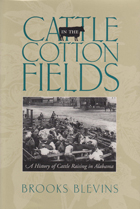 Cattle in the Cotton Fields: A History of Cattle Raising in Alabama
Brooks Blevins
University of Alabama Press, 2013 This first history of cattle raising in a southern state documents the development of the industry within Alabama from colonial times to the present within the broader contexts of southern and American agricultural history
Cattle raising today is the most widely practiced form of agriculture in Alabama and ranks second only to the poultry industry in terms of revenue. Brooks Blevins not only relates the development and importance of the industry to agricultural practices but also presents it as an integral component of southern history, inextricably linked to issues of sectional politics, progressivism, race and class struggles, and rural depopulation. Most historians believe cattle were first introduced by the Spanish explorers and missionaries during the early decades of the 16th century. Native Americans quickly took up cattle raising, and the practice was reinforced with the arrival of the French and the British. By 1819--after massive immigration of Anglo-American herders, farmers, and planters--cattle played an integral role in the territory's agriculture and economy. Despite the dominance of the cotton industry during the antebellum period, cattle herding continued to grow and to become identified as an important part of the region's agriculture.
In the early decades of the 20th century, the boll weevil drove many planters out of the cotton business. These planters adopted a midwestern model of cattle raising consisting of purebred English breeds, enclosed pastures, scientific breeding and feeding practices, and intimate cooperation among cattlemen, government agents, and business interests. This model of farming gradually replaced the open range herding tradition.
Cattle Lords and Clansmen: The Social Structure of Early Ireland
Nerys Patterson
University of Notre Dame Press, 1994 In Cattle Lords and Clansmen, Nerys Patterson provides an analysis of the social structure of medieval Ireland, focusing on the pre-Norman period. By combining difficult, often fragmentary primary sources with sociological and anthropological methods, Patterson produces a unique approach to the study of early Ireland—one that challenges previous scholarship. The second edition includes a chapter on seasonal rhythm, material derived from Patterson’s post-1991 publications, and an updated bibliography.
 Cattle, Priests, and Progress in Medicine
Calvin W. Schwabe
University of Minnesota Press, 1978 Cattle, Priests, and Progress in Medicine was first published in 1978. Minnesota Archive Editions uses digital technology to make long-unavailable books once again accessible, and are published unaltered from the original University of Minnesota Press editions. The author shows that over the centuries many of the most significant breakthroughs in improving humans health have been closely associated with observations and experiments on animals other than man. Because human medical progress has been so dependent on veterinary studies, he urges that schools of veterinary medicine assume a much greater role in the training of persons for research in human medicine. To illuminate the historical link between animals and man in medical progress, Professor Schwabe recounts highlights in the history of medicine from ancient times onward. He describes the early history of man in terms of animal cultures, focusing on the prehistoric Nile Valley, and points to similarities in medical knowledge between present-day "cattle" societies in Northeastern Africa and the ancient people of the Nile. He discusses the comparative healers of ancient Egypt, the comparative foundations of Greek medicine, the Arabic contribution, Sicily and the beginnings of modern medicine, and subsequent developments through the Renaissance .Bringing the history down to modern times, Professor Schwabe emphasizes the role of veterinary medicine in medical research. He outlines specific reforms in the curricula of schools and colleges of veterinary medicine which would provide for the education of medical investigators.
 Catullus. Tibullus. Pervigilium Veneris
Catullus and Tibullus
Harvard University Press, 1988 Polymetric gems, wistful elegies, and a lover’s prayer.
Catullus (Gaius Valerius, 84–54 BC), of Verona, went early to Rome, where he associated not only with other literary men from Cisalpine Gaul but also with Cicero and Hortensius. His surviving poems consist of nearly sixty short lyrics, eight longer poems in various metres, and almost fifty epigrams. All exemplify a strict technique of studied composition inherited from early Greek lyric and the poets of Alexandria. In his work we can trace his unhappy love for a woman he calls Lesbia; the death of his brother; his visits to Bithynia; and his emotional friendships and enmities at Rome. For consummate poetic artistry coupled with intensity of feeling, Catullus’ poems have no rival in Latin literature.
Tibullus (Albius, ca. 54–19 BC), of equestrian rank and a friend of Horace, enjoyed the patronage of Marcus Valerius Messalla Corvinus, whom he several times apostrophizes. Three books of elegies have come down to us under his name, of which only the first two are authentic. Book 1 mostly proclaims his love for “Delia,” Book 2 his passion for “Nemesis.” The third book consists of a miscellany of poems from the archives of Messalla; it is very doubtful whether any come from the pen of Tibullus himself. But a special interest attaches to a group of them which concern a girl called Sulpicia: some of the poems are written by her lover Cerinthus, while others purport to be her own composition.
The Pervigilium Veneris, a poem of not quite a hundred lines celebrating a spring festival in honor of the goddess of love, is remarkable both for its beauty and as the first clear note of romanticism which transformed classical into medieval literature. The manuscripts give no clue to its author, but recent scholarship has made a strong case for attributing it to the early fourth-century poet Tiberianus.
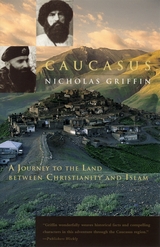 Caucasus: A Journey to the Land between Christianity and Islam
Nicholas Griffin
University of Chicago Press, 2004 A rugged land between the Black and Caspian seas, the Caucasus is a battle ground for a fascinating and formidable clash of cultures: Russia on one side, the predominantly Muslim mountains on the other. In Caucasus, award-winning author Nicholas Griffin recounts his journey to this war torn region to explore the roots of today's conflict, centering his travelogue on Imam Shamil, the great nineteenth century Muslim warrior who commanded a quarter-century resistance against invading Russian forces.
Delving deep into the Caucasus, Griffin transcends the headlines trumpeting Chechen insurgency to give the land and its conflicts dimension: evoking the weather, terrain, and geography alongside national traditions, religious affiliations, and personal legends as barriers to peaceful co-existence. In focusing his tale on Shamil while retracing his steps, Griffin compellingly demonstrates the way history repeats itself.
 Caught Between the Dog and the Fireplug, or How to Survive Public Service
Kenneth Ashworth
Georgetown University Press, 2001 Replete with practical advice for anyone considering a career in federal, state, or local government, Caught between the Dog and the Fireplug, or How to Survive Public Service conveys what life is really like in a public service job. The book is written as a series of lively, entertaining letters of advice from a sympathetic uncle to a niece or nephew embarking on a government career. Kenneth Ashworth draws on more than forty years of public sector experience to provide advice on the daily challenges that future public servants can expect to face: working with politicians, bureaucracy, and the press; dealing with unpleasant and difficult people; leading supervisors as well as subordinates; and maintaining high ethical standards. Ashworth relates anecdotes from his jobs in Texas, California, and Washington, D.C., that illustrate with humor and wit fundamental concepts of public administration. Be prepared, says Ashworth, to encounter all sorts of unexpected situations, from the hostile to the bizarre, from the intimidating to the outrageous. He shows that in the confrontational world of public policymaking and program implementation, a successful career demands disciplined, informed thought, intellectual and personal growth, and broad reading. He demonstrates how, despite the inevitable inefficiencies of a democratic society, those working to shape policy in large organizations can nonetheless effect significant change-and even have fun along the way. The book will interest students and teachers of public administration, public affairs, policy development, leadership, or higher education administration. Ashworth's advice will also appeal to anyone who has ever been caught in a tight spot while working in government service.
Caught in the Middle: Neutrals, Neutrality and the First World War
Edited by Johan Den Hertog and Samuel Kruizinga
Amsterdam University Press, 2011
During World War I, aggressive countries infringed on the rights and privileges of neutral nations such as the Netherlands and Switzerland as they had been defined in prior international agreements. The essays in this critical collection provide comparisons of the history of neutrality in several countries involved in World War I and analyze the concept of neutrality from multiple perspectives: political, economic, cultural, and legal.
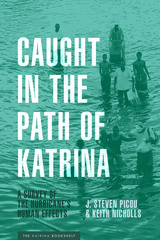 Caught in the Path of Katrina: A Survey of the Hurricane's Human Effects
By J. Steven Picou and Keith Nicholls
University of Texas Press, 2019 In 2008, three years after Hurricane Katrina cut a deadly path along the northern coast of the Gulf of Mexico, researchers J. Steven Picou and Keith Nicholls conducted a survey of the survivors in Louisiana and Mississippi, receiving more than twenty-five hundred responses, and followed up two years later with their than five hundred of the initial respondents. Showcasing these landmark findings, Caught in the Path of Katrina: A Survey of the Hurricane's Human Effects yields a more complete understanding of the traumas endured as a result of the Storm of the Century. The authors report on evacuation behaviors, separations from family, damage to homes, and physical and psychological conditions among residents of seven of the parishes and counties that bore the brunt of Katrina. The findings underscore the frequently disproportionate suffering of African Americans and the agonizingly slow pace of recovery. Highlighting the lessons learned, the book offers suggestions for improved governmental emergency management techniques to increase preparedness, better mitigate storm damage, and reduce the level of trauma in future disasters. Multiple major hurricanes have unleashed their destruction in the years since Katrina, making this a crucial study whose importance only continues to grow.
 The Cauldron of Ethnicity in the Modern World
Manning Nash
University of Chicago Press, 1989 The "melting pot" metaphor conveys an image of individuals from varied origins blending imperceptibly together. But when such ingredients as inequality, nationalism, or perceived injustice are added to the mix, the melting pot can become a seething cauldron. Manning Nash's examination of ethnicity in the postcolonial world offers insights into the ways that ethnic tensions are engendered and sustained.
Ethnicity, Nash suggests, is formed by historical processes based on preexisting elements of society and culture. Notions of ethnicity have at their core the recursive metaphor of "blood, bed, and cult"—body substance, kinship, and religious belief. When individuals who perceive themselves bound by these ties are threatened in some way, ethnicity becomes a unifying call to action. Nash identifies a number of concepts—political self-rule, economic opportunity, cultural identity, religious freedom—that have been rallying cries for ethnic struggles in the twentieth century. He offers a novel analysis of the ways that ethnic groups identify themselves and maintain "boundaries," and he assesses the circumstances under which ethnicity may be relevant or nearly irrelevant to political, economic, and cultural dynamics.
Nash presents three case studies that highlight the multifaceted nature of ethnicity and that each demonstrate a particular mode of comparative method. He compares a situation of conquest (Ladino and Maya in Mexico and Guatemala), a new, excolonial nation with nearly equally sized groups (Chinese and Malays in Malaysia), and a small immigrant group in a large nation (Jews in the United States), pointing out the many possible combinations of political, economic, or cultural struggles in ethnic conflicts. Even in nations where such conflict is minimal, Nash warns, ethnicity remains a reservoir of turbulence in a world where power, wealth, and dignity are unevenly and illegitimately distributed.
 Cauldrons in the Cosmos: Nuclear Astrophysics
Claus E. Rolfs and William S. Rodney
University of Chicago Press, 1988 Nuclear astrophysics is, in essence, a science that attempts to understand and explain the physical universe beyond the Earth by studying its smallest particles. Cauldrons in the Cosmos, by Claus E. Rolfs and William S. Rodney, serves as a basic introduction to these endeavors. From the major discoveries in the field to a discussion of the makeup of stars to an explanation of standard lab techniques, this text provides students and scientists alike a thorough and fascinating survey of the accomplishments, goals, and methods of nuclear astrophysics. A classic in its field, Cauldrons in the Cosmos will surely remain an important reference in nuclear astrophysics for years to come.
"One could not wish for a better account of the current state of knowledge (and uncertainty) about nuclear reactions in stars."—B. E. J. Pagel, Nature
"Written in an informal style that those uninitiated into the jargon of nuclear astrophysics and astronomy will find readable and illuminating. . . . A useful and long-awaited introduction to nuclear astrophysics."—G. J. Mathews, Science
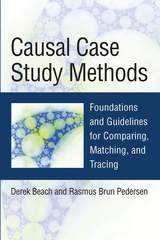 Causal Case Study Methods: Foundations and Guidelines for Comparing, Matching, and Tracing
Derek Beach and Rasmus Brun Pedersen
University of Michigan Press, 2016 In this comprehensive reconstruction of causal case study methods, Derek Beach, Rasmus Brun Pedersen, and their coauthors delineate the ontological and epistemological differences among these methods, offer suggestions for determining the appropriate methods for a given research project, and explain the step-by-step application of selected methods.
Causal Case Study Methods begins with the cohesive, logical foundations for small-n comparative methods, congruence methods, and process tracing, then delineate the distinctive types of causal relationships for which each method is appropriate. Next, the authors provide practical instruction for deploying each of the methods individually and in combination. They walk the researcher through each stage of the research process, starting with issues of concept formation and the formulation of causal claims in ways that are compatible with case-based research. They then develop guidelines for using Bayesian logic as a set of practical questions for translating empirical data into evidence that may or may not confirm causal inferences.
Widely acclaimed instructors, the authors draw upon their extensive experience at the graduate level in university classrooms, summer and winter school courses, and professional workshops, around the globe.
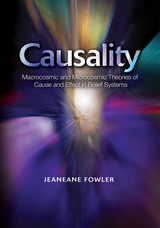 Causality: Macrocosmic and Microcosmic Theories of Cause and Effect in Belief Systems
Jeaneane Fowler
Sussex Academic Press, 2022 This book examines the concepts of cause and effect from two dimensions. The first concerns the macrocosm of the Universe and how each belief system views creation. The second dimension explores the ways in which beliefs about creation influence the microcosmic world in terms of the nature of the self, the proximate goals within each system, the answers each belief system offers to the presence of evil and suffering in existence, and ideas about the ultimate goal of release from them. All these ideas inform and are fundamental to the understanding of the present-day practices of different faiths, presenting challenges for scriptural testimony balanced with existential living. The final two chapters explore current research in physics concerning the beginnings of the cosmos and what implications such research might have for existence within it, with the final chapter examining scientific views of the nature of the self.
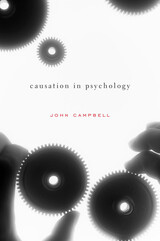 Causation in Psychology
John Campbell
Harvard University Press, 2020 A renowned philosopher argues that singular causation in the mind is not grounded in general patterns of causation, a claim on behalf of human distinctiveness, which has implications for the future of social robots.
A blab droid is a robot with a body shaped like a pizza box, a pair of treads, and a smiley face. Guided by an onboard video camera, it roams hotel lobbies and conference centers, asking questions in the voice of a seven-year-old. “Can you help me?” “What is the worst thing you’ve ever done?” “Who in the world do you love most?” People pour their hearts out in response.
This droid prompts the question of what we can hope from social robots. Might they provide humanlike friendship? Philosopher John Campbell doesn’t think so. He argues that, while a social robot can remember the details of a person’s history better than some spouses can, it cannot empathize with the human mind, because it lacks the faculty for thinking in terms of singular causation.
Causation in Psychology makes the case that singular causation is essential and unique to the human species. From the point of view of practical action, knowledge of what generally causes what is often all one needs. But humans are capable of more. We have a capacity to imagine singular causation. Unlike robots and nonhuman animals, we don’t have to rely on axioms about pain to know how ongoing suffering is affecting someone’s ability to make decisions, for example, and this knowledge is not a derivative of general rules. The capacity to imagine singular causation, Campbell contends, is a core element of human freedom and of the ability to empathize with human thoughts and feelings.
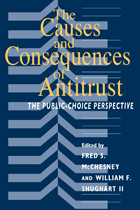 The Causes and Consequences of Antitrust: The Public-Choice Perspective
Edited by Fred S. McChesney and William F. Shughart II
University of Chicago Press, 1995 Why has antitrust legislation not lived up to its promise of promoting free-market competition and protecting consumers? Assessing 100 years of antitrust policy in the United States, this book shows that while the antitrust laws claim to serve the public good, they are as vulnerable to the influence of special interest groups as are agricultural, welfare, or health care policies. Presenting classic studies and new empirical research, the authors explain how antitrust caters to self-serving business interests at the expense of the consumer.
The contributors are Peter Asch, George Bittlingmayer, Donald J. Boudreaux, Malcolm B. Coate, Louis De Alessi, Thomas J. DiLorenzo, B. Epsen Eckbo, Robert B. Ekelund, Jr., Roger L. Faith, Richard S. Higgins, William E. Kovacic, Donald R. Leavens, William F. Long, Fred S. McChesney, Mike McDonald, Stephen Parker, Richard A. Posner, Paul H. Rubin, Richard Schramm, Joseph J. Seneca, William F. Shughart II, Jon Silverman, George J. Stigler, Robert D. Tollison, Charlie M. Weir, Peggy Wier, and Bruce Yandle.
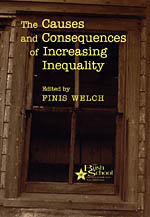 The Causes and Consequences of Increasing Inequality
Edited by Finis Welch
University of Chicago Press, 2001 Despite the economic boom of the 1990s, the gap between the wealthy and the poor in the United States is growing larger. While ample evidence exists to validate perceived trends in wage, income, and overall wealth disparity, there is little agreement on the causes of such inequality and what might be done to alleviate it.
This volume draws together a panel of distinguished scholars who address these issues in terms comprehensible to noneconomists. Their findings are surprising, suggesting that factors such as trade imbalances, immigration rates, and differences in educational resources do not account for recent increases in the inequality of wealth and earnings. Rather, the contributors maintain that these discrepancies can be attributed to workplace demand for high-skilled labor. They also insist that further research must examine the organization of industry in order to better understand the concurrent devaluation of manual labor.
Addressing a topic that is of considerable public interest, this collection helps move the issue of increasing economic inequality in America to the center of the public policy arena.
Contributors: Donald R. Deere, Claudia Goldin, Lawrence F. Katz, James P. Smith, Franco Peracchi, Gary Solon, Eric A. Hanushek, Julie A. Somers, Marvin H. Kosters, William Cline, Finis Welch, Angus Deaton, Charles Murray, Kevin Murphy
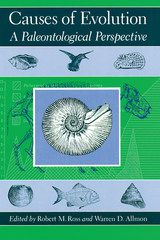 Causes of Evolution: A Paleontological Perspective
Edited by Robert M. Ross and Warren D. Allmon
University of Chicago Press, 1990 By studying evolution across geological time, paleontologists gain a perspective that sometimes complements and sometimes conflicts with views based solely on studies of extant species. The contributors to Causes of Evolution consider whether factors exerting major influences on evolution are biotic or abiotic, intrinsic or extrinsic.
Causes of Evolution presents a broad sampling of paleontological research programs encompassing vertebrates, invertebrates, and vascular plants; empirical work and theoretical models; organisms ranging in age from Cambrian to Recent; and temporal scales from ecological time to hundreds of millions of years. The diverse array of research styles and opinions presented will acquaint scientists in related fields with the strengths and weaknesses of paleontology as an approach to evolutionary studies and will give evolutionary biologists of every stripe new bases for evaluating the scope and bias of their own work.
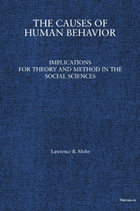 The Causes of Human Behavior: Implications for Theory and Method in the Social Sciences
Lawrence B. Mohr
University of Michigan Press, 1996 Acknowledging that though the disciplines are supposed to be cumulative, there is little in the way of accumulated, general theory, this work opens a dialogue about the appropriate means and ends of social research based in analysis of fundamental issues.
This book examines two root issues in the methodology of explanatory social research--the meaning of the idea of causation in social science and the question of the physiological mechanism that generates intentional behavior. Conclusions on these as well as on several derived problems emerge through the analysis. Among the latter, the analysis shows that neither universal nor probabilistic laws governing human behavior are possible, even within the positivist or empiricist traditions in which laws are a central feature. Instead, the analysis reveals a more modest view of what an explanatory social theory can be and do. In this view, the kind of theory that can be produced is basically the same in form and content across quantitative and qualitative research approaches, and similarly across different disciplines. The two streams of analysis are combined with resulting implications for large-sample, small-sample, and case study research design as well as for laws and theory.
Written for the practicing empirical researcher in political science and organization theory, whether quantitative or qualitative, the major issuesand findings are meant to hold identically, however, for history, sociology, and other social science disciplines.
Lawrence B. Mohr is Professor of Political Science and Public Policy, University of Michigan.
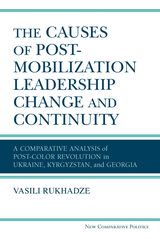 The Causes of Post-Mobilization Leadership Change and Continuity: A Comparative Analysis of Post-Color Revolution in Ukraine, Kyrgyzstan, and Georgia
Vasili Rukhadze
University of Michigan Press, 2021 Vasili Rukhadze examines the factors that contributed to post-uprising leadership durability in the Ukraine, Kyrgyzstan, and Georgia in 2004–12, after these countries underwent their so-called “Color Revolutions.” Using structured, focused comparison and process tracing, he argues that the key independent variable influencing post-mobilization leadership durability is ruling coalition size and cohesion. He demonstrates that if the ruling coalitions are large and fragmented, as in the Ukraine and Kyrgyzstan, the coalitions disintegrate, thus facilitating the downfall of the governments. Alternatively, if the ruling coalition is small and cohesive, as in Georgia, the coalition maintains unity, hence helping the government to stay in power. This study advances the debate on regime changes. By drawing a clear distinction between political leaderships that come to power as a result of popular uprisings and governments that take power through normal democratic processes, military coup, or any other means, the research offers one of the first studies on post-mobilization leadership. Rukhadze helps scholars differentiate between the factors that affect durability of post-uprising leadership from those factors that impact durability of all other political leadership, in turn equipping researchers with new tools to study power politics.
The Causes of Wars: And Other Essays
Michael Howard
Harvard University Press, 1983 Public consciousness of the threat of nuclear war is rising steadily. Responses to the nuclear dilemma are conflicting and often confusing. Never have we been more in need of information and perspective, for if we wish to avoid war we must understand it. Michael Howard offers an analysis of our present predicament by discussing those issues that cause war and make peace. His book includes an examination of nuclear strategy today, views of the past about the conduct of international relations, ethics, modes of defense, and studies of military thinkers and leaders. The Causes of Wars illuminates the interrelationship between men and ideas, between war and other social forces, and between our present situation and its roots in the past.
The Causes of Wars: And Other Essays, Second Edition, Enlarged
Michael Howard
Harvard University Press, 1984 Public consciousness of the threat of nuclear war is rising steadily. Responses to the nuclear dilemma are conflicting and often confusing. Never have we been more in need of information and perspective, for if we wish to avoid war we must understand it.
Michael Howard offers an analysis of our present predicament by discussing those issues that cause war and make peace. His book includes an examination of nuclear strategy today, views of the past about the conduct of international relations, ethics, modes of defense, and studies of military thinkers and leaders. The Causes of Wars illuminates the interrelationship between men and ideas, between war and other social forces, and between our present situation and its roots in the past.
Cauterized
Laura Apol
Michigan State University Press, 2024 Cauterize: to burn or freeze the flesh around a wound to stop heavy bleeding. In her sixth full-length collection, award-winning poet Laura Apol returns to themes of loss that are, at least partly, cauterized: her struggles with a conservative religious upbringing, her mother’s illness and death, children growing up and leaving home, losing her adult daughter to suicide, a worldwide pandemic, the casualties of age. With startling honesty, empathy, and lyrical precision, Apol offers insight into the ways some wounds need cautery to begin to heal. This is a book that will resonate with anyone who has grappled with the complexities of grief, forgiveness, resilience, and healing across time.
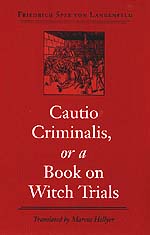 Cautio Criminalis, or a Book on Witch Trials
Friedrich Spee von Langenfeld
University of Virginia Press, 2003 In 1631, at the epicenter of the worst excesses of the European witch-hunts, Friedrich Spee, a Jesuit priest, published the Cautio Criminalis, a book speaking out against the trials that were sending thousands of innocent people to gruesome deaths. Spee, who had himself ministered to women accused of witchcraft in Germany, had witnessed firsthand the twisted logic and brutal torture used by judges and inquisitors. Combined, these harsh prosecutorial measures led inevitably not only to a confession but to denunciations of supposed accomplices, spreading the circle of torture and execution ever wider.
Driven by his priestly charge of enacting Christian charity, or love, Spee sought to expose the flawed arguments and methods used by the witch-hunters. His logic is relentless as he reveals the contradictions inherent in their arguments, showing there is no way for an innocent person to prove her innocence. And, he questions, if the condemned witches truly are guilty, how could the testimony of these servants and allies of Satan be reliable? Spee's insistence that suspects, no matter how heinous the crimes of which they are accused, possess certain inalienable rights is a timeless reminder for the present day.
The Cautio Criminalis is one of the most important and moving works in the history of witch trials and a revealing documentation of one man's unexpected humanity in a brutal age. Marcus Hellyer's accessible translation from the Latin makes it available to English-speaking audiences for the first time.
Marcus Hellyer is the Dibner Fund Assistant Professor for the History of Science at Brandeis University.
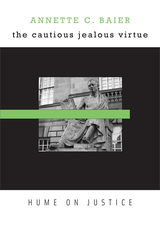 The Cautious Jealous Virtue: Hume on Justice
Annette C. Baier
Harvard University Press, 2010 Like David Hume, whose work on justice she engages here, Annette C. Baier is a consummate essayist: her spirited, witty prose captures nuances and telling examples in order to elucidate important philosophical ideas.Baier is also one of Hume’s most sensitive and insightful readers. In The Cautious Jealous Virtue, she deepens our understanding of Hume by examining what he meant by “justice.” In Baier’s account, Hume always understood justice to be closely linked to self-interest (hence his description of it in An Enquiry Concerning the Principles of Morals as “the cautious jealous virtue”), but his understanding of the virtue expanded over time, as evidenced by later works, including his History of England.Along with justice, Baier investigates the role of the natural virtue of equity (which Hume always understood to constrain justice) in Hume’s thought, arguing that Hume’s view of equity can serve to balance his account of the artificial virtue of justice. The Cautious Jealous Virtue is an illuminating meditation that will interest not only Hume scholars but also those interested in the issues of justice and in ethics more generally.
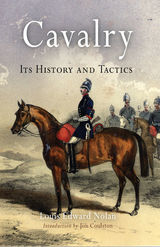 Cavalry: Its History and Tactics
Louis Edward Nolan
Westholme Publishing, 2020 A New Edition of One of the Great Military Treatises of the Nineteenth Century
First published in 1853, Cavalry: Its History and Tactics had a major impact on military theorists and officers for decades—it was reprinted as a manual during the American Civil War—and its influence on European cavalry performance can be traced into World War I. It is an intelligent work which discusses the history and development of cavalry over the ages, advocates a program of reform for Britain’s horsed troops, and covers many aspects of equipment, training, drill, organization, formation, and battlefield tactics. The author, an experienced and gifted cavalryman, first served in the Austrian army, then joined the British army’s 15th Hussars in 1839, fought in India, and became the regimental riding master. Captain Nolan’s 1852 tour of European armies, wide reading in many languages, and service in Europe and India makes Cavalry an extraordinary statement on mid-nineteenth-century theory and practice. As historian Jon Coulston explains in his introduction, Nolan was writing at the cusp of technological change, drawing upon the experiences of the Napoleonic Wars, continental suppression of the 1848 Revolutions, and Britain’s wars in India, but with an eye to firepower developments on the eve of the Crimean War. In 1854, at the Battle of Balaklava, Nolan rode with the written order which unleashed the Charge of the Light Brigade, an action in which he lost his life. Presented here as the first modern reprint, complete with a new introduction and further reading, Nolan’s Cavalry remains a hallmark of military history.
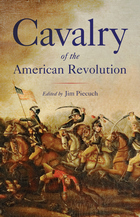 Cavalry of the American Revolution
Jim Piecuch
Westholme Publishing, 2012 Nine Historians and Writers Investigate the Role of Cavalry in the War for Independence From the bitterly contested no-man’s-land between American and British lines in New York and New Jersey to the scorching pine forests of the South, the cavalry of both armies fought valiantly throughout the American Revolution. This volume explores several aspects of cavalry’s role in the war, which has often been overlooked in general histories. The topics covered include the development of the Continental Army’s cavalry arm, European influences on American cavalry training and tactics, accounts of several important cavalry raids and battles, and histories of mounted units such as the Continental Light Dragoons, American rangers in the South Carolina backcountry, and the British army’s Queen’s Rangers and “Black Dragoons,” the latter force composed entirely of former slaves. The essays also examine the roles of important commanders, including Brigadier General Francis “Swamp Fox” Marion, Lieutenant Colonel William Washington, and Colonel Anthony Walton White of the American army, and British cavalry leaders Banastre “Bloody Ban” Tarleton and John Graves Simcoe, as well as the American prisoners of war who switched sides and served in the “British Legion.” The authors of the essays include acclaimed military historians Gregory J. W. Urwin and Lawrence E. Babits. Readers with a general interest in military history, as well as those with more specific interests in the American Revolution or the history of the cavalry arm, and anyone who wishes to undertake further study of these subjects, will find the essays fresh, engaging, and informative. @font-face { font-family: "Times New Roman";}@font-face { font-family: "HelveticaNeue-LightCond";}p.MsoNormal, li.MsoNormal, div.MsoNormal { margin: 0in 0in 0.0001pt; font-size: 12pt; font-family: "Times New Roman"; }table.MsoNormalTable { font-size: 10pt; font-family: "Times New Roman"; }div.Section1 { page: Section1; } Contents Gregory J. W. Urwin: The Continental Light Dragoons, 1776-1783 Lee F. McGee: European Influences on Continental Cavalry John M. Hutchins: Cavalry Action at Poundridge, New York Donald J. Gara: Cavalry Battles in New York and New Jersey Scott A. Miskimon: Anthony Walton White: A Revolutionary Dragoon Michael C. Scoggins: South Carolina’s Backcountry Rangers Lawrence E. Babits and Joshua B. Howard: Continentals in Tarleton’s British Legion Charles F. Price: Cavalry Operations at Eutaw Springs Jim Piecuch: The “Black Dragoons”
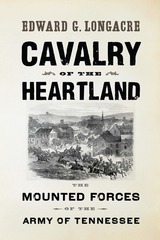 Cavalry of the Heartland: The Mounted Forces of the Army of Tennessee
Edward G. Longacre
Westholme Publishing, 2009 A History of the Finest and Most Flamboyant Cavalry Arm of the Civil War While Robert E. Lee’s Army of Northern Virginia prosecuted the war in the East for the Confederacy, the Army of Tennessee fought in the West, ranging over a tremendous expanse during the course of the Civil War, from southern Ohio and eastern Kentucky all the way to Georgia and the Carolinas. Unlike Lee’s army, however, the Army of Tennessee suffered at the hands of a series of uninspired commanders and had few impressive victories. It did have, however, arguably the best cavalry of any army in the war in terms of numbers and leadership. Led by some of the most colorful officers of the Civil War—the brilliant, passionate Nathan Bedford Forrest, the flamboyant but erratic John Hunt Morgan, and the quietly competent “Fightin’ Joe” Wheeler—and grabbing headlines for daring raids, such as Morgan’s foray into Ohio, the mounted forces of the Army of Tennessee developed a strategy of a highly mobile fighting unit that could be deployed rapidly in strength to strike deep behind enemy lines and maneuver at a moment’s notice during a battle, tactics that were to have the most impact on military operations in the future. As distinguished historian Edward G. Longacre chronicles in Cavalry of the Heartland: The Mounted Forces of the Army of Tennessee, the army’s top generals failed to recognize the battle-winning potential of their cavalry and instead sent them off on sideshow operations rather than deploying them consistently to assist the main body’s efforts. Based on a wide array of research materials, Cavalry of the Heartland is the only book-length study of the strategy and tactics of the Army of Tennessee’s mounted forces from its inception in the spring of 1861 to its final bow at Bentonville, North Carolina, four years later. Throughout, numerous campaigns and battles are described in full detail, including Fort Donelson, Shiloh, Perryville, Murfreesboro (Stones River), Tullahoma, Chickamauga, Chattanooga, Atlanta, Nashville, and the Carolinas.
Cave Hollow, An Ozark Bluff-Dweller Site
Horace Miner
University of Michigan Press, 1950 In north-central Arkansas, Horace Miner excavated an ash bed at the mouth of Cave Hollow. In this report, he discusses the artifacts found during excavation—stone tools, animal bone, and pottery—and the site’s possible cultural connections.
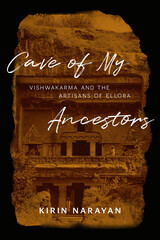 Cave of My Ancestors: Vishwakarma and the Artisans of Ellora
Kirin Narayan
University of Chicago Press, 2024 Exploring family stories reveals the rich history of a seventh-century Buddhist shrine.
As a young girl in Bombay, Kirin Narayan was enthralled by her father’s stories about how their ancestors had made the ancient rock-cut cave temples at Ellora. Recalling those stories as an adult, she was inspired to learn more about the caves, especially the Buddhist worship hall known as the “Vishwakarma cave.” Immersing herself in family history, oral traditions, and works by archaeologists, art historians, scholars of Buddhism, Indologists, and Sanskritists, Narayan set out to answer the question of how this cave came to be venerated as the home of Vishwakarma, the god of making in Hindu and Buddhist traditions.
Cave of My Ancestors represents the perfect blend of Narayan’s skills as a researcher and writer. Her quest to trace her family’s stories took her to Ellora; through libraries, archives, and museums around the world; and across disciplinary borders. Equal parts scholarship, detective story, and memoir, Narayan’s book ably leads readers through centuries of history, offering a sensitive meditation on devotion, wonder, and all that connects us to place, family, the past, and the divine.
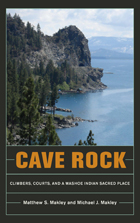 Cave Rock: Climbers, Courts, and a Washoe Indian Sacred Place
Matthew S. Makley
University of Nevada Press, 2010 On August 27, 2007, the U.S. Ninth Circuit Court of Appeals upheld an earlier district court ruling that sport climbing on a Washoe Indian sacred site in western Nevada must cease. Cave Rock, a towering monolith jutting over the shore of Lake Tahoe, has been sacred to the Washoe people for over five thousand years. Long abused by road builders and vandals, it earned new fame in the late twentieth century as a world-class sport rock-climbing site. Over twenty years of bitter disputes and confrontation between the Washoe and the climbers ensued. The Washoe are a small community of fewer than 2,000 members; the climbers were backed by a national advocacy and lobbying group and over a hundred powerful corporations. Cave Rock follows the history of the fight between these two groups and examines the legal challenges and administrative actions that ultimately resulted in a climbing ban. After over two centuries of judicial decisions allowing federal control, economic development, or public interests to outweigh Indian claims to their sacred places, the Court’s ruling was both unprecedented and highly significant. As the authors conclude, the long-term implications of the ruling for the protection of Native rights are of equal consequence.
The Cave: Selected And New Poems
C.G. Hanzlicek
University of Pittsburgh Press, 2001 This collection spans twenty-five years in the career of this highly regarded poet. It features poems from the books Stars, Calling the Dead,When There Are No Secrets, and Against Dreaming, along with seventeen new poems.
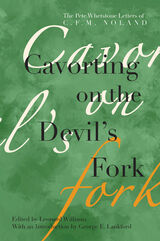 Cavorting on the Devil's Fork: The Pete Whetstone Letters of C. F. M. Noland
Leonard Williams
University of Arkansas Press, 2006 By the 1840s American literature tradition had become fascinated with the frontier. The rural folk humor of the “Devil’s Fork” letters that a young Charles Fenton Mercer Noland (1810–1858) of central Arkansas began writing in 1837 was something the country wanted. His pieces were published regularly in New York’s Spirit of the Times, and he quickly achieved a reputation as one of the southwest’s best humorists. His tall tales told in dialect reflected the peculiar characteristics of the people of a backwoods region. Noland’s semiautobiographical “Letters” were built around the experiences of Pete Whetstone, who, along with his neighbors, devoted himself to hunting, fishing, and an outdoors lifestyle. Through his first-person narration readers were able to experience an ideal southwest frontier existence. Here was a land of natural beauty, with clear rivers, forested mountains, and abundant game, a place where a person could live a free and rustic lifestyle. Here too were horse races and bear fights, politics and balls. Unfortunately for Noland, an early death cut short a promising career. Had he lived longer and written more, he could have become one of America’s great nineteenth-century humorists. Midcentury America was certainly looking for one.
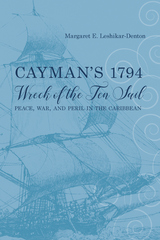 Cayman's 1794 Wreck of the Ten Sail: Peace, War, and Peril in the Caribbean
Margaret E. Leshikar-Denton
University of Alabama Press, 2020 The greatest shipwreck disaster in the history of the Cayman Islands
The story has been passed through generations for more than two centuries. Details vary depending on who is doing the telling, but all refer to this momentous maritime event as the Wreck of the Ten Sail. Sometimes misunderstood as the loss of a single ship, it was in fact the wreck of ten vessels at once, comprising one of the most dramatic maritime disasters in all of Caribbean naval history. Surviving historical documents and the remains of the wrecked ships in the sea confirm that the narrative is more than folklore. It is a legend based on a historical event in which HMS Convert, formerly L’Inconstante, a recent prize from the French, and 9 of her 58-ship merchant convoy sailing from Jamaica to Britain, wrecked on the jagged eastern reefs of Grand Cayman in 1794.
The incident has historical significance far beyond the boundaries of the Cayman Islands. It is tied to British and French history during the French Revolution, when these and other European nations were competing for military and commercial dominance around the globe. The Wreck of the Ten Sail attests to the worldwide distribution of European war and trade at the close of the eighteenth century.
In Cayman’s 1794 Wreck of the Ten Sail: Peace, War, and Peril in the Caribbean, Margaret E. Leshikar-Denton focuses on the ships, the people, and the wreck itself to define their place in Caymanian, Caribbean, and European history. This well-researched volume weaves together rich oral folklore accounts, invaluable supporting documents found in archives in the United Kingdom, Jamaica, and France, and tangible evidence of the disaster from archaeological sites on the reefs of the East End.
CCAR Journal - Winter 2025: Opening the Doors to LGBTQIA+ Clergy: Past, Present, and Furture
Rabbi Edwin C. Goldberg
Central Conference of American Rabbis, 2025 This issue focuses on the journey of LGBTQIA+ clergy, from early struggles to present-day progress and visions for the future. The essays and reflections examine the milestones, challenges, and triumphs of LGBTQIA+ clergy, offering insight into the evolving landscape of Jewish leadership and inclusion. The issue also contains new book reviews and poetry.
Cease
Beth Bachmann
University of Pittsburgh Press, 2018 A Plea and an Awakening to Peace as a Process and a Transient State
CEASE begins with the words, “to keep the peace/we need a wall/to fall to our knees before….” Framed by the long poem, “wall,” Beth Bachmann’s new collection of poetry wildly upturns the boundaries between bodies at peace and bodies at war, between the human territory of border walls and the effects of war on the environment and landscape, between the movements of soldiers and of refugees, between terror as an interior state and violences performed on the body, and between the words of politicians and the breath of a poem. Taking up Muriel Rukeyser’s call for women poets to respond to war, “Women and poets see the truth arrive,” the poems in CEASE are almost breathless in their speed and presence on the page. CEASE is both a plea and an awakening to peace as a process and a transient state.
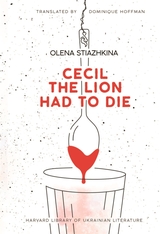 Cecil the Lion Had to Die
Olena Stiazhkina
Harvard University Press, 2024 In 1986 Soviet Ukraine, two boys and two girls are welcomed into the world in a Donetsk maternity ward. Following a Soviet tradition of naming things after prominent Communist leaders from far away, a local party functionary offers great material benefits for naming children after Ernst Thälmann, the leader of the German Communist Party from 1925 to 1933. The fateful decision is made, and the local newspaper presents the newly born Ernsts and Thälmas in a photo on the front page, forever tying four families together.
In Cecil the Lion Had to Die, Olena Stiazhkina follows these families through radical transformations when the Soviet Union unexpectedly implodes, independent Ukraine emerges, and neoimperial Russia occupies Ukraine’s Crimea and parts of the Donbas. Just as Stiazhkina’s decision to transition to writing in Ukrainian as part of her civic stance—performed in this book that begins in Russian and ends in Ukrainian—the stark choices of family members take them in different directions, presenting a multifaceted and nuanced Donbas.
A tour de force of stylistic registers, intertwining stories, and ironic voices, this novel is a must-read for those who seek deeper understanding of how Ukrainian history and local identity shapes war with Russia.
Cecilia Reclaimed: Feminist Perspectives on Gender and Music
Edited by Susan C. Cook and Judy S. Tsou
University of Illinois Press, 1994 Cecilia, a fifteenth-century Christian martyr, has long been considered the patron saint of music. In this pathbreaking volume, ten of the best known scholars in the newly emerging field of feminist musicology explore both how gender has helped shape genres and works of music and how music has contributed to prevailing notions of gender. The musical subjects include concert music, both instrumental and vocal, and the vernacular genres of ballads, salon music, and contemporary African American rap. The essays raise issues not only of gender but also of race and class, moving among musical practices of the courtly ruling class and the elite discourse of the twentieth-century modernist movement to practices surrounding marginal girls in Renaissance Venice and the largely white middle-class experiences of magazine and balladry.
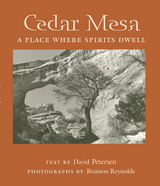 Cedar Mesa: A Place Where Spirits Dwell
Text by David Petersen; Photographs by Branson Reynolds
University of Arizona Press, 2002 High on the Colorado Plateau lies a uniquely magical desert place: a land of sandy mesas and slickrock escarpments, an elegant maze of vertical-walled, vertigo-inspiring canyons plunging to darkened depths. Cedar Mesa, Utah, is a place frozen in time. A land that can only be adequately explored on foot or horseback, Cedar Mesa offers adventurous visitors magnificent examples of all the topographic and geologic wonders that define "canyon country" throughout the Southwest: stone arches, natural bridges, and breath-sucking precipices, plus hidden springs, hanging gardens, and a treasure of pre-Columbian Indian ruins. Now a writer and a photographer who have roamed the Mesa for more than twenty years—and know many of its well-guarded secrets—offer an intimate look at a place where solitude and silence go hand in hand. Animated by towering "hoodoos"—sandstone formations eroded to resemble all manner of spooky beings—Cedar Mesa is, in David Petersen's words, "an undulating expanse of erosion-sculpted slickrock like petrified ocean swells." He and Branson Reynolds share insights into the natural and human history of the region; they provide a panoramic overview of the Mesa, then take readers on a personally guided descent into the canyons, where hikers can expect to encounter wildlife, prehistoric ruins, stone sculptures, and hidden pools. While providing details regarding much-visited locales, Petersen and Reynolds are more concerned with conveying an overall sense of the area's mystical beauty—capturing the spirit of ancestral Puebloan cliff dwellings but keeping their locations secret so that their magic will not be lost. With its relative lack of roads, campgrounds, and maintained trails, Cedar Mesa is an Eden for personal discovery and hands-on adventure. But "be it known," advises Petersen, "that this is not yet another hand-holding, give-it-all-away, chamber-of-commerce-style 'backcountry' guidebook, of which there are far too many already." He and Reynolds have instead fashioned a book to celebrate and interpret "one of the most palpably spiritual natural places remaining on the American continent"—and to instill in readers the importance of protecting it forever.
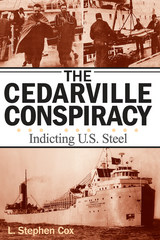 The Cedarville Conspiracy: Indicting U.S. Steel
L. Stephen Cox
University of Michigan Press, 2005 On the morning of May 7, 1965, the American freighter Cedarville collided with the Norwegian vessel Topdalsfjord in heavy fog in the Straits of Mackinac. Ultimately, ten crew members of the Cedarville died and a legal battle ensued implicating U.S. Steel---the company that owned the Cedarville---in the chain of events leading to the tragedy.
The Cedarville Conspiracy is the story of that doomed ship and its crew. It is also the first Great Lakes history to expose the heroism, villainy, courage, and confusion surrounding the Cedarville disaster.
In atmospheric, cinematic style, L. Stephen Cox's gripping page-turner dramatizes the events surrounding the collision between the Norwegian and American freighters. As the mortally wounded Cedarville began to list and sink, U.S. Steel refused to allow the crew to escape to safety, while the captain secretly donned his life jacket and abandoned the sinking ship. Ten seamen died in the frigid waters that morning as the captain and survivors swam to safety.
Researching the story, author L. Stephen Cox interviewed the surviving crew and their rescuers and attorneys, examined more than 20,000 pages of Coast Guard reports, and discovered deposition transcripts and other documentary evidence that detailed the deterioration of the ship, the captain's disregard of Great Lakes navigational rules, the company's participation in the decision to confine the men aboard the sinking vessel, and the subsequent efforts by U.S. Steel to manipulate the evidence.
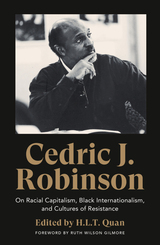 Cedric J. Robinson: On Racial Capitalism, Black Internationalism, and Cultures of Resistance
Cedric J. Robinson
Pluto Press, 2019 "Before the movement for black lives made black radicalism cool for millennials, Cedric Robinson did the work of excavating an intellectual history we rely upon today."—The Root
"Like W. E. B. Du Bois, Michel Foucault, Sylvia Wynter, and Edward Said, Robinson was that rare polymath capable of seeing the whole....He left behind a body of work to which we must return constantly and urgently"—Robin D. G. Kelley, author of Freedom Dreams
Cedric J. Robinson is one of the doyens of Black Studies and a pioneer in study of the Black Radical Tradition. His works have been essential texts, deconstructing racial capitalism and inspiring insurgent movements from Ferguson, Missouri to the West Bank. For the first time, Robinson's essays come together, spanning over four decades and reflective of his diverse interests in the interconnections between culture and politics, radical social theory, and classic and modern political philosophy.
Themes explored include Africa and Black internationalism, World politics, race and US Foreign Policy, representations of blackness in popular culture, and reflections on popular resistance to racial capitalism, white supremacy and more. Essays here include:
*The Black Detective and American Memory
*Slavery and the Platonic Origins of Anti-Democracy
*Africa: In Hock to History and the Banks
*Blaxploitation and the Misrepresentation of Liberalism
*The Mulatta on Film
*Race, Capitalism, and Anti-democracy
*The Killing in Ferguson
*And much more!
Accompanied by an introduction by H. L. T. Quan and a foreword by Ruth Wilson Gilmore, this collection, which includes previously unpublished materials, extends the many contributions by a giant in Black radical thought.
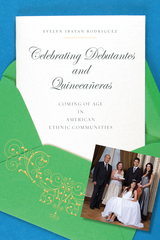 Celebrating Debutantes and Quinceañeras: Coming of Age in American Ethnic Communities
Evelyn Ibatan Rodriguez
Temple University Press, 2013 Looking beyond the satin gowns, opera-length gloves, and sparkling tiaras that signify Filipino debutantes and Mexican quinceañeras, Evelyn Ibatan Rodriguez examines the meaning of these coming-of-age rituals for immigrant American families. Celebrating Debutantes and Quinceañeras draws parallels between these communal ceremonies, as they each share a commonality in Spanish heritage and Catholicism and include a highly ritualized party. Rodriguez analyzes these rites and festivities to explain what they reveal about the individuals, families, and communities who organize and participate in them.
Drawing on over fifty in-depth interviews with members of these fast-growing American Asian and Latino populations, Rodriguez shows how these communal celebrations of daughters have been adapted by immigrant families to assert their cultural pride and affirm their American belonging. Celebrating Debutantes and Quinceañeras provides an intimate and compelling portrait of the various ways immigrants and their children are purposefully, strategically, and creatively employing Filipino American debutantes and Mexican American quinceañeras to simultaneously challenge and assimilate into U.S. culture and forge new understandings of what it means to be "Mexican," "Filipino," and "American."
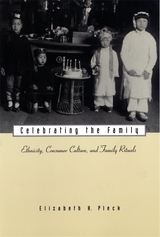 Celebrating the Family: Ethnicity, Consumer Culture, and Family Rituals
Elizabeth H. Pleck
Harvard University Press, 2000 Nostalgia for the imagined warm family gatherings of yesteryear has colored our understanding of family celebrations. Elizabeth Pleck examines family traditions over two centuries and finds a complicated process of change in the way Americans have celebrated holidays such as Christmas, Easter, Thanksgiving, Chinese New Year, and Passover as well as the life cycle rituals of birth, coming of age, marriage, and death. By the early nineteenth century carnivalesque celebrations outside the home were becoming sentimental occasions that used consumer culture and displays of status and wealth to celebrate the idea of home and family. The 1960s saw the full emergence of a postsentimental approach to holiday celebration, which takes place outside as often as inside the home, and recognizes changes in the family and women's roles, as well as the growth of ethnic group consciousness.
This multicultural, comparative history of American family celebration, rich in detail and spiced with telling anecdotes and illustrations and a keen sense of irony, offers insight into the significance of ethnicity and consumer culture in shaping what people regard as the most memorable moments of family life.
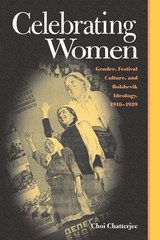 Celebrating Women: Gender Festival Culture & Bolshevik Ideology 1910-1939
Choi Chatterjee
University of Pittsburgh Press, 2002 The first International Women’s Day was celebrated in Copenhagen in 1910 and adopted by the Bolsheviks in 1913 as a means to popularize their political program among factory women in Russia. By 1918, Women’s Day had joined May Day and the anniversary of the October Revolution as the most important national holidays on the calendar.
Choi Chatterjee analyzes both Bolshevik attitudes towards women and invented state rituals surrounding Women’s Day in Russia and the early Soviet Union to demonstrate the ways in which these celebrations were a strategic form of cultural practice that marked the distinctiveness of Soviet civilization, legitimized the Soviet mission for women, and articulated the Soviet construction of gender. Unlike previous scholars who have criticized the Bolsheviks’ for repudiating their initial commitment to Marxist feminism, Chatterjee has discovered considerable continuity in the way that they imagined the ideal woman and her role in a communist society.
Through the years, Women’s Day celebrations temporarily empowered women as they sang revolutionary songs, acted as strong protagonists in plays, and marched in processions carrying slogans about gender equality. In speeches, state policies, reports, historical sketches, plays, cartoons, and short stories, the passive Russian woman was transformed into an iconic Soviet Woman, one who could survive, improvise, and prevail over the most challenging of circumstances.
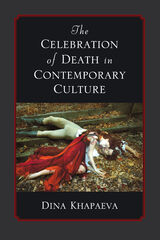 The Celebration of Death in Contemporary Culture
Dina Khapaeva
University of Michigan Press, 2017 The Celebration of Death in Contemporary Culture investigates the emergence and meaning of the cult of death. Over the last three decades, Halloween has grown to rival Christmas in its popularity. Dark tourism has emerged as a rapidly expanding industry. “Corpse chic” and “skull style” have entered mainstream fashion, while elements of gothic, horror, torture porn, and slasher movies have streamed into more conventional genres. Monsters have become pop culture heroes: vampires, zombies, and serial killers now appeal broadly to audiences of all ages. This book breaks new ground by viewing these phenomena as aspects of a single movement and documenting its development in contemporary Western culture.
This book links the mounting demand for images of violent death with dramatic changes in death-related social rituals. It offers a conceptual framework that connects observations of fictional worlds—including The Twilight Saga, The Vampire Diaries, and the Harry Potter series—with real-world sociocultural practices, analyzing the aesthetic, intellectual, and historical underpinnings of the cult of death. It also places the celebration of death in the context of a longstanding critique of humanism and investigates the role played by 20th-century French theory, posthumanism, transhumanism, and the animal rights movement in shaping the current antihumanist atmosphere.
This timely, thought-provoking book will appeal to scholars of culture, film, literature, anthropology, and American and Russian studies, as well as general readers seeking to understand a defining phenomenon of our age.
 A Celebration of John F. Nash Jr.
Harold W. Kuhn, Louis Nirenberg, and Peter Sarnak, editors
Duke University Press, 1996 This collection celebrates the pathbreaking work in game theory and mathematics of John F. Nash Jr., winner of the 1994 Nobel Prize in Economics. Nash’s analysis of equilibria in the theory of non-cooperative games has had a major impact on modern economic theory. This book, also published as volume 81 of the Duke Mathematical Journal, includes an important, but previously unpublished paper by Nash; the proceedings of the Nobel seminar held in Stockholm on December 8, 1994 in his honor; and papers by distinguished mathematicians and economists written in response to and in honor of Nash’s pioneering contributions to those fields. In 1950, when he was 22 years old, Nash presented his key idea—the Nash equilibrium—in the Ph.D. thesis he submitted to the Mathematics Department at Princeton University. In that paper, he defined a new concept of equilibrium and used methods from topology to prove the existence of an equilibrium point for n-person, finite, non-cooperative games, that is, for games in which the number of possible strategies are limited, no communication is allowed between the players, and n represents the number of players. The Nash equilibrium point is reached when none of the players can improve their position by changing strategies. By taking into account situations involving more than two players, specifically the general n-player game, Nash built significantly on the previous work of John Von Neumann and Oskar Morgenstern. Contributors. Abbas Bahri, Eric A. Carlen, Ennio De Giorgi, Charles Fefferman, Srihari Govidan, John C. Harsanyi, H. Hoffer, Carlos E. Kenig, S. Klainerman, Harold F. Kuhn, Michael Loss, William F. Lucas, M. Machedon, Roger B. Myerson, Raghavan Narasimhan, John F. Nash Jr., Louis Nirenberg, Jill Pipher, Zeév Rudnick, Peter Sarnak, Michael Shub, Steve Smale, Robert Wilson, K. Wysocki, E. Zehnder
Celebrities and Publics in the Internet Era
Sharon Marcus, special issue editor
Duke University Press The contributors to "Celebrities and Publics in the Internet Era" ask how new digital media platforms such as search engines, Twitter, Facebook, Instagram, and YouTube have qualitatively changed celebrity culture. Drawing on a wide range of examples, from the luxury selfies of micro-celebrities like Kane Lim to performance artist Marina Abramovic’s collaborations with Jay-Z and Lady Gaga, from the karaoke standard in shows like American Idol to Syrian singer Assala’s media battle with the Assad regime, from the "emotion economy" of reality TV to the influence of network entrepreneurs like Tim O’Reilly, the essays in this special issue identify core structural features that contribute to the development of a new theory of celebrity.
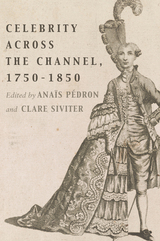 Celebrity Across the Channel, 1750–1850
Anaïs Pédron
University of Delaware Press, 2021 Celebrity Across the Channel, 1750-1850 is the first book to study and compare the concept of celebrity in France and Britain from 1750 to 1850 as the two countries transformed into the states we recognize today. It offers a transnational perspective by placing in dialogue the growing fields of celebrity studies in the two countries, especially by engaging with Antoine Lilti’s seminal work, The Invention of Celebrity, translated into English in 2017. With contributions from a diverse range of scholarly cultures, the volume has a firmly interdisciplinary scope over the time period 1750 to 1850, which was an era marked by social, political, and cultural upheaval. Bringing together the fields of history, politics, literature, theater studies, and musicology, the volume employs a firmly interdisciplinary scope to explore an era marked by social, political, and cultural upheaval. The organization of the collection allows for new readings of the similarities and differences in the understanding of celebrity in Britain and France. Consequently, the volume builds upon the questions that are currently at the heart of celebrity studies.
 Celebrity Activism and Philanthropy in Asia: Toward a Cosmopolitical Imaginary
Dorothy Lau
Amsterdam University Press, 2024 Recent years have witnessed the increasing visibility of Asian celebrities in activism, advocacy, diplomacy, philanthropy, and ambassadorship but this phenomenon is under-explored. This volume provides a critical intervention in celebrity activism and philanthropy by examining the civic imaginaries and mobilisations of Asian celebrities-turned-activists or philanthropists, alongside an array of significations and tensions involved. The analysis anchors on a roster of high-profile Asian icons including Bollywood star Aamir Khan, K-pop sensation BTS, Cantopop singer Denise Ho, and Chinese live-streamer Weiya, who exhibit universal morals while underscoring local or regional affiliations as propelled by expansive media networks. Adopting cosmopolitics as the methodological frame, this volume suggests “muliversal consciousness,” a staple to code the star-powered goodwill in times of disjuncture and rupture. To its critical ends, this book attempts to disrupt the Eurocentric tendency in the discursive construction of celebrity-cause dynamics, disentangling the complexities of Asian power, global citizenship, and techno-capitalist logics.
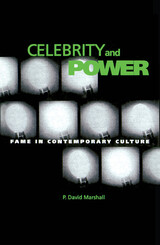 Celebrity And Power: Fame and Contemporary Culture
P. David Marshall
University of Minnesota Press, 1997 The celebrity is an ambiguous figure in contemporary culture. Simultaneously celebrated and denigrated, stars represent not only the embodiment of success, but also the ultimate construction of false value. They are a peculiar form of public subjectivity that negotiates the tension between a democratic culture of access and a consumer capitalist culture of excess. Celebrity and Power examines this dynamic, questioning the cultural forces behind our need to become endlessly embroiled with the construction and collapse of celebrities.Through detailed analysis of figures from Tom Cruise to Oprah Winfrey to the commercial pop music sensation New Kids on the Block, author and cultural critic P. David Marshall investigates the general public’s desire to associate with celebrity. He examines various kinds of stars, questioning the needs each type fulfills in our lives and relating these needs to particular entertainment media. Marshall asks why enigmatic, distant stars populate the silver screen while television constructs approachable “everyman” figures and popular music features audience-identified celebrity personalities. He looks at the significance of stars who amass cultlike followings as well as those who appear to prompt outright rejection.Celebrity and Power identifies the forces that have enveloped the development of democratic culture and their partial resolution through a redefined public sphere populated by celebrities. Marshall argues that the new concern with the masses that characterizes modern capitalism promotes figures who can be seen as part of the crowd but who are articulated as individuals. As such, they provide a model of self-differentiation that furthers an economy in which product consumption is thought to bestow individualism and personality.Bridging the fields of media studies, film studies, communications, and popular culture, Marshall’s volume is a unique resource for students and researchers in all of these disciplines as well as for the general reader.P. David Marshall is director of the Media and Cultural Studies Centre in the Department of English, University of Queensland in Australia.
 Celebrity Chefs of New Jersey: Their Stories, Recipes, and Secrets
Teresa Politano
Rutgers University Press, 2010 One demanding New Jersey chef once tied his cooks to the stove by their apron strings. Another was such a finicky eater as a child, he refused to allow his cereal to touch his milk. One was kissed by Fidel Castro, another played onstage with Todd Rundgren. Celebrity Chefs of New Jersey peeks into the kitchens and the lives of some of the most famous chefs in the Garden State, where foodies and other gourmands will discover passions, kitchen secrets, life lessons, and signature recipes.
Not so long ago, perhaps even just at the turn of this century, it was easy to lament the lack of sophisticated food in New Jersey. Oh sure, a few restaurants always sparkled, but, for the most part, New Jerseyans looked across at the bright lights of the big city, wistfully yearning for a table in glamorous Manhattan. Now, however, the most sought- after tables are right here and we have the best seats in the house, made even sweeter perhaps because they're our own little secret. We can dine frequently and dine well, with a smug sense that if only New Yorkers knew, they'd be looking across the river wishing they were us.
In Celebrity Chefs of New Jersey, Teresa Politano profiles Craig Shelton, the chef who crystallized New Jersey's place in culinary history with his legendary Ryland Inn, along with other chefs, telling their personal stories of both creativity and survival. Some of these men and women rose from humble or difficult childhoods to fame in the food world. Others were not only talented but lucky enough to be in the right place at the right time. Their stories are arranged into three categories: legends, stars, and chefs to watch, and then topped off with a sweet surprise finish. Politano includes photographs, cooking secrets, and some of their sought-after signature recipes that are sophisticated but manageable for the skilled home chef.
Celebrity Culture and the Entertainment Industry in Asia: Use of Celebrity and its Influence on Society, Culture and Communication
By Vivienne Leung, Kimmy Cheng, and Tommy Tse
Intellect Books, 2017 Offering rare insight into the world of celebrity and media in China and beyond, Celebrity Culture and the Entertainment Industry in Asia looks closely at the dynamics of stardom and celebrity endorsement in the region and examines its impact on marketing and media.
Through first-hand interviews with celebrities and entertainment industry practitioners, the authors discuss the social, cultural, and economic influences of celebrity. Dialogues with celebrities such as Kwok-Leung Kam, Bob Lam, Denise Ho, Hilary Tsui, and Francis Mak provide insider accounts of celebrity formation, management, and marketing in Hong Kong and Mainland China, as well as South Korea and Taiwan.
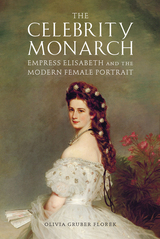 The Celebrity Monarch: Empress Elisabeth and the Modern Female Portrait
Olivia Gruber Florek
University of Delaware Press, 2023 Empress Elisabeth of Austria (1837-1898), wife of Habsburg Emperor Francis Joseph I, was celebrated as the most beautiful woman in Europe. Glamorous painted portraits by Franz Xaver Winterhalter and widely collected photographs spread news of her beauty, and the twentieth-century German-language film trilogy Sissi (1955-57) cemented this legacy. Despite the enduring fascination with the empress, art historians have never considered Elisabeth’s role in producing her public portraiture or the influence of her creation. The Celebrity Monarch reveals how portraits of Elisabeth transformed monarchs from divinely appointed sovereigns to public personalities whose daily lives were consumed by spectators. With resources ranging from the paintings of Gustav Klimt and Elisabeth’s private collection of celebrity photography to twenty-first century collages and films by T. J. Wilcox, this book positions Elisabeth herself as the primary engineer of her public image and argues for the widespread influence of her construction on both modern art and the emerging phenomenon of celebrity.
 The Celebrity Persona Pandemic
P. David Marshall
University of Minnesota Press, 2017 The Celebrity Persona Pandemic explores how the construction of a public persona is fetishized in contemporary culture. As social media has progressively led to a greater focus on the production of the self, so this book looks at the most visible versions of persona through figures such as Stephen Colbert, Cate Blachett, and Justin Bieber, as well as fictional characters like Spock and Harry Potter. Ultimately, P. David Marshall closely studies how persona culture shapes our notions of value and significance, and dramatically shifts cultural politics.
Forerunners is a thought-in-process series of breakthrough digital works. Written between fresh ideas and finished books, Forerunners draws on scholarly work initiated in notable blogs, social media, conference plenaries, journal articles, and the synergy of academic exchange. This is gray literature publishing: where intense thinking, change, and speculation take place in scholarship.
Celebrity Philanthropy
Edited by Elaine Jeffreys and Paul Allatson
Intellect Books, 2015 There’s no question that celebrities these days are some of the most prominent faces of philanthropic activity—yet their participation raises questions about efficacy, motivations, and activism overall. This book presents case studies of celebrity philanthropy from around the globe—including such figures as Shakira, Arundhati Roy, Zhang Ziyi, Bono, and Madonna—looking at the tensions between celebrity activism and ground-level work and the relationship between celebrity philanthropy and cultural citizenship.
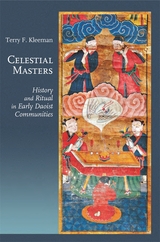 Celestial Masters: History and Ritual in Early Daoist Communities
Terry F. Kleeman
Harvard University Press In 142 CE, the divine Lord Lao descended to Mount Cranecall (Sichuan province) to establish a new covenant with humanity through a man named Zhang Ling, the first Celestial Master. Facing an impending apocalypse caused by centuries of sin, Zhang and his descendants forged a communal faith centering on a universal priesthood, strict codes of conduct, and healing through the confession of sins; this faith was based upon a new, bureaucratic relationship with incorruptible supernatural administrators. By the fourth century, Celestial Master Daoism had spread to all parts of China, and has since played a key role in China’s religious and intellectual history.
Celestial Masters is the first book in any Western language devoted solely to the founding of the world religion Daoism. It traces the movement from the mid-second century CE through the sixth century, examining all surviving primary documents in both secular and canonical sources to provide a comprehensive account of the development of this poorly understood religion. It also provides a detailed analysis of ritual life within the movement, covering the roles of common believer or Daoist citizen, novice, and priest or libationer.
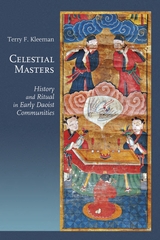 Celestial Masters: History and Ritual in Early Daoist Communities
Terry F. Kleeman
Harvard University Press, 2016 In 142 CE, the divine Lord Lao descended to Mount Cranecall (Sichuan province) to establish a new covenant with humanity through a man named Zhang Ling, the first Celestial Master. Facing an impending apocalypse caused by centuries of sin, Zhang and his descendants forged a communal faith centering on a universal priesthood, strict codes of conduct, and healing through the confession of sins; this faith was based upon a new, bureaucratic relationship with incorruptible supernatural administrators. By the fourth century, Celestial Master Daoism had spread to all parts of China, and has since played a key role in China’s religious and intellectual history.
Celestial Masters is the first book in any Western language devoted solely to the founding of the world religion Daoism. It traces the movement from the mid-second century CE through the sixth century, examining all surviving primary documents in both secular and canonical sources to provide a comprehensive account of the development of this poorly understood religion. It also provides a detailed analysis of ritual life within the movement, covering the roles of common believer or Daoist citizen, novice, and priest or libationer.
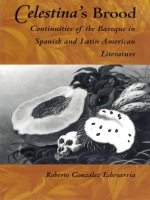 Celestina's Brood: Continuities of the Baroque in Spanish and Latin American Literature
Roberto González-Echevarría
Duke University Press, 1993 Published in 1499 and centered on the figure of a bawd and witch, Fernando de Rojas' dark and disturbing Celestina was destined to become the most suppressed classic in Spanish literary history. Routinely ignored in Spanish letters, the book nonetheless echoes through contemporary Spanish and Latin American literature. This is the phenomenon that Celestina's Brood explores.
Roberto González Echevarría, one of the most eminent and influential critics of Hispanic literature writing today, uses Rojas' text as his starting point to offer an exploration of modernity in the Hispanic literary tradition, and of the Baroque as an expression of the modern. His analysis of Celestina reveals the relentless probing of the limits of language and morality that mark the work as the beginning of literary modernity in Spanish, and the start of a tradition distinguished by a penchant for the excesses of the Baroque. González Echevarría pursues this tradition and its meaning through the works of major figures such as Cervantes, Lope de Vega, Calderón de la Barca, Alejo Carpentier, Carlos Fuentes, Gabriel García Márquez, Nicolás Guillén, and Severo Sarduy, as well as through the works of lesser-known authors.
By revealing continuities of the Baroque, Celestina's Brood cuts across conventional distinctions between Spanish and Latin American literary traditions to show their profound and previously unimagined affinity.
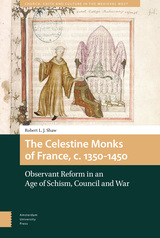 The Celestine Monks of France, c. 1350-1450: Observant Reform in an Age of Schism, Council and War
Robert L. J. Shaw
Amsterdam University Press, 2019 The Celestine monks of France represent one of the least studied monastic reform movements of the late Middle Ages, and yet also one of the most culturally impactful. Their order - an austere Italian Benedictine reform of the late thirteenth century, which came be known after the papal name of their founder, Celestine V (St Peter of Murrone) - arrived in France in 1300. After a period of marginal growth, they flourished in the region from the mid-fourteenth century, founding thirteen new houses over the next hundred years, taking their total to seventeen by 1450. Not only did the French Celestines expand, they gained a distinctive character that separated them from their Italian brothers. More urban, better connected with both aristocratic and bourgeois society, and yet still rigorous and reformist, they characterised themselves as the 'Observant' wing of their order, having gained self-government for their provincial congregation in 1380 following the arrival of the Great Western Schism (1378-1417). But, as Robert L.J. Shaw argues, their importance runs beyond monastic reform: the late medieval French Celestines are a mirror of the political, intellectual, and Christian reform culture of their age. Within a France torn by war and a Church divided by schism, the French Celestines represented hope for renewal, influencing royal presentation, lay religion, and some of the leading French intellectuals of the period, including Jean Gerson.
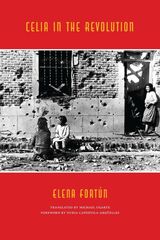 Celia in the Revolution
Elena Fortún
Swan Isle Press, 2023 The first major English translation of the final book in the expansive and essential “Celia” series by Elena Fortún.
Set during the Spanish Civil War (1936–39), Celia in the Revolution is the last in a series of young adult novels written by Encarnación Aragoneses, known by the pen name Elena Fortún, one of the most prolific and popular Spanish authors of the mid-twentieth century.
In a series of more than twenty novels, Fortún’s protagonist is Celia Gálvez de Montalbán, a precocious and rebellious girl from an affluent family who’s not afraid to question authority and dream, and that often gets her into trouble. Readers watch her grow from age seven through adolescence to the threshold of womanhood at seventeen, which is her age in this dark, inspiring novel about the war that changed Spain.
In this last narrative in the legendary series, Celia has an awakening that not even her lively imagination could have anticipated. The once carefree, innocent child prone to playful fantasies must suddenly confront a world that’s utterly changed, finding herself amid a bloody conflict, la Guerra Civil. Celia, now a madrecita, a little mother to her two younger sisters since the death of their mother, is forced into a life of hardship, a world of hunger, witness to violence, executions, bombing raids, and death. With Celia’s sorrows come her courageous and profound compassion, consoling and caring for virtually every war victim that crosses her path, no matter their political inclinations, and no matter all that Celia must contend with herself. Celia, despite all her travails, manages to survive with determination, defiance, and dignity.
Written immediately after the war, Celia in the Revolution was not published during Elena Fortún’s lifetime, until after the death of the dictator, Francisco Franco, due to censorship. This first major English translation by eminent scholar and Hispanist Michael Ugarte captures the narrative and nuances of Celia’s voice and others in this character-rich novel, and fellow eminent scholar and Hispanist Nuria Capdevila-Arguëlles’s preface brings powerful insights into this remarkable work by Elena Fortún that transcends young adult literature.
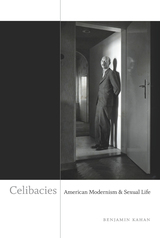 Celibacies: American Modernism and Sexual Life
Benjamin Kahan
Duke University Press, 2013 In this innovative study, Benjamin Kahan traces the elusive history of modern celibacy. Arguing that celibacy is a distinct sexuality with its own practices and pleasures, Kahan shows it to be much more than the renunciation of sex or a cover for homosexuality. Celibacies focuses on a diverse group of authors, social activists, and artists, spanning from the suffragettes to Henry James, and from the Harlem Renaissance's Father Divine to Andy Warhol. This array of figures reveals the many varieties of celibacy that have until now escaped scholars of literary modernism and sexuality. Ultimately, this book wrests the discussion of celibacy and sexual restraint away from social and religious conservatism, resituating celibacy within a history of political protest and artistic experimentation. Celibacies offers an entirely new perspective on this little-understood sexual identity and initiates a profound reconsideration of the nature and constitution of sexuality.
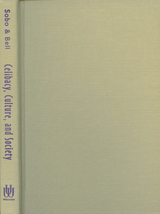 Celibacy, Culture, And Society: Anthropology Of Sexual Abstinence
Elisa J Sobo
University of Wisconsin Press, 2001 This is the first cross-cultural inquiry into the practice of celibacy around the world and through the ages, among groups as diverse as Kenyan villagers and U.S. prisoners, Mazatec Shamans and Buddhist nuns and monks, Shaker church members and anorexic women.
The examples of celibacy described here illustrate the complex relationship between human sexuality and its particular sociocultural context. Ideas about the body, gender, family, work, religion, health, and other dimensions of life come sharply into focus as the contributors examine the many practices and institutions surrounding sexual abstinence. They show that, though celibacy is certainly sometimes a punishment or a deliberate ritual abstinence, it also serves many other social and material functions and in some cases contributes to kin-group survival and well-being. Celibacy, Culture, and Society represents a significant step towards understanding the functions and meanings of sexuality.
Celinda, A Tragedy: A Bilingual Edition
Valeria Miani
Iter Press, 2010 Valeria Miani’s Celinda (1611), the only female-authored secular tragedy of early modern Italy, is here made available for the first time in a modern edition. Miani’s tale of the doomed love of the Lydian princess Celinda for the cross-dressed Persian prince Autilio/ Lucinia offers a striking example of the explorative attitude to gender identity that is such a marked characteristic of Italian drama in this period, both within the erudite and the commedia dell’arte tradition. Accompanied by Julia Kisacky’s sensitive translation, and with a valuable contextualizing introduction by Valeria Finucci, this edition of Celinda makes an important contribution to our understanding of women’s place within Italian literary culture in a period increasingly recognized as exceptional for the range and quality of femaleauthored writing it produced.
—Virginia Cox
Professor of Italian, New York University
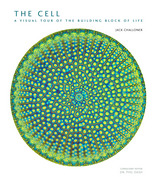 The Cell: A Visual Tour of the Building Block of Life
Jack Challoner
University of Chicago Press, 2015 The cell is the basic building block of life. In its 3.5 billion years on the planet, it has proven to be a powerhouse, spreading life first throughout the seas, then across land, developing the rich and complex diversity of life that populates the planet today.
With The Cell: A Visual Tour of the Building Block of Life, Jack Challoner treats readers to a visually stunning tour of these remarkable molecular machines. Most of the living things we’re familiar with—the plants in our gardens, the animals we eat—are composed of billions or trillions of cells. Most multicellular organisms consist of many different types of cells, each highly specialized to play a particular role—from building bones or producing the pigment in flower petals to fighting disease or sensing environmental cues. But the great majority of living things on our planet exist as single cell. These cellular singletons are every bit as successful and diverse as multicellular organisms, and our very existence relies on them.
The book is an authoritative yet accessible account of what goes on inside every living cell—from building proteins and producing energy to making identical copies of themselves—and the importance of these chemical reactions both on the familiar everyday scale and on the global scale. Along the way, Challoner sheds light on many of the most intriguing questions guiding current scientific research: What special properties make stem cells so promising in the treatment of injury and disease? How and when did single-celled organisms first come together to form multicellular ones? And how might scientists soon be prepared to build on the basic principles of cell biology to build similar living cells from scratch.
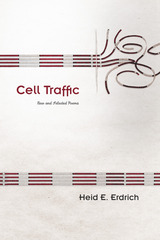 Cell Traffic: New and Selected Poems
Heid E. Erdrich
University of Arizona Press, 2012 Cell Traffic presents new poems and uncollected prose poetry along with selected work from award-winning poet Heid Erdrich's three previous poetry collections. Erdrich's new work reflects her continuing concerns with the tensions between science and tradition, between spirit and body. She finds surprising common ground while exploring indigenous experience in multifaceted ways: personal, familial, biological, and cultural. The title, Cell Traffic, suggests motion and Erdrich considers multiple movements-cellular transfer, the traffic of DNA through body parts and bones, "migration" through procreation, and the larger "movements" of indigenousness and ancestral inheritance. Erdrich's wry sensibility, sly wit, and keenly insightful mind have earned her a loyal following. Her point of view is always slightly off center, and this lends a particular freshness to her poetry. The debunking and debating of the science of origins is one of Erdrich's focal subjects. In this collection, she turns her observational eye to the search for a genetic mother of humanity, forensic anthropology's quest for the oldest known bones, and online offers of genetic testing. But her interests are not limited to science. She freely admits popular culture into her purview as well, referencing sci-fi television series and Internet pop-up ads.
 Celluloid Activist: The Life and Times of Vito Russo
Michael Schiavi
University of Wisconsin Press, 2011 Celluloid Activist is the biography of gay-rights giant Vito Russo, the man who wrote The Celluloid Closet: Homosexuality in the Movies, commonly regarded as the foundational text of gay and lesbian film studies and one of the first to be widely read. But Russo was much more than a pioneering journalist and author. A founding member of the Gay and Lesbian Alliance Against Defamation (GLAAD) and cofounder of the AIDS Coalition to Unleash Power (ACT UP), Russo lived at the center of the most important gay cultural turning points in the 1960s, 1970s, and 1980s. His life as a cultural Zelig intersects a crucial period of social change, and in some ways his story becomes the story of a developing gay revolution in America. A frequent participant at “zaps” and an organizer of Gay Activists Alliance (GAA) cabarets and dances—which gave the New York gay and lesbian community its first social alternative to Mafia-owned bars—Russo made his most enduring contribution to the GAA with his marshaling of “Movie Nights,” the forerunners to his worldwide Celluloid Closet lecture tours that gave gay audiences their first community forum for the dissection of gay imagery in mainstream film. Biographer Michael Schiavi unravels Vito Russo’s fascinating life story, from his childhood in East Harlem to his own heartbreaking experiences with HIV/AIDS. Drawing on archival materials, unpublished letters and journals, and more than two hundred interviews, including conversations with a range of Russo’s friends and family from brother Charlie Russo to comedian Lily Tomlin to pioneering activist and playwright Larry Kramer, Celluloid Activistprovides an unprecedented portrait of a man who defined gay-rights and AIDS activism.
“Schiavi tells a compelling story in this biography—from his re-creation of life on the streets of East Harlem and in Greenwich Village of the 1960s and 1970s to the way he conveys Russo’s excitement about his film research and popular education to his account of the AIDS years in New York City.”—John D’Emilio, Italian American Review
“In [Schiavi’s] hands Russo’s life is both fascinating in its own right and a window into a larger milieu of activism during two critical decades.”—Italian American Review Best Special Interest Books, selected by the American Association of School Librarians Best Books for General Audiences, selected by the Public Library Reviewers Finalist, Gay Memoir/Biography, Lambda Literary Awards Finalist, Over the Rainbow Selection, American Library Association
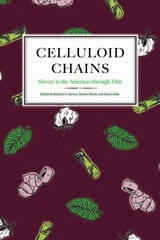 Celluloid Chains: Slavery in the Americas through Film
Rudyard Alcocer
University of Tennessee Press, 2018 Featuring a variety of disciplinary perspectives and analytical approaches, Celluloid Chains is the most comprehensive volume to date on films about slavery. This collection examines works from not only the United States but elsewhere in the Americas, and it attests to slavery’s continuing importance as a source of immense fascination for filmmakers and their audiences.
Each of the book’s fifteen original essays focuses on a particular film that directly treats the enslavement of Africans and their descendants in the New World. Beginning with an essay on the Cuban film El otro Francisco (1975), Sergio Giral’s reworking of a nineteenth-century abolitionist novel, the book proceeds to examine such works as the landmark miniseries Roots (1977), which sparked intense controversy over its authenticity; Werner Herzog’s Cobra Verde (1987), which raises questions about what constitutes a slavery film; Guy Deslauriers’s Passage du milieu (1999), a documentary-style reconstruction of what Africans experienced during the Middle Passage; and Steve McQueen’s Oscar-winning 12 Years a Slave (2013), which embodies the tensions between faithfully adapting a nineteenth-century slave narrative and bending it for modern purposes.
Films about slavery have shown a special power to portray the worst and best of humanity, and Celluloid Chains is an essential guide to this important genre.
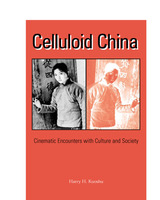 Celluloid China: Cinematic Encounters with Culture and Society
Harry H. Kuoshu
Southern Illinois University Press, 2002 Celluloid China: Cinematic Encounters with Culture and Society by Harry H. Kuoshu is a lucid introduction to the cinema of mainland China from the early 1930s to the early 1990s. Emphasizing both film contexts and film texts, this study invites film scholars and students to a broad cinematic analysis that includes investigations of cultural, cross-cultural, intellectual, social, ethnic, and political issues. Such a holistic evaluation allows for a better understanding of both the genesis of a special kind of film art from the People’s Republic of China and the culture exemplified in those films. The fifteen films include: Two Stage Sisters; Hibiscus Town; Farewell My Concubine; Street Angel; Three Women; Human, Woman, Demon; Judou; Girl from Hunan; Sacrificed Youth; Horse Thief; Yellow Earth; Old Well; Red Sorghum; Black Cannon Incident; and Good Morning, Beijing. Discussions of each film have an introduction, passages from the director’s own notes whenever available, and a scholarly article. Discussion questions are found in an appendix. Within its complete bibliography, the book also features a suggested reading list for Chinese film classes. Celluloid China is the first book to provide such an exhaustive study of the art and cultural context of Chinese cinema.
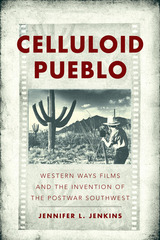 Celluloid Pueblo: Western Ways Films and the Invention of the Postwar Southwest
Jennifer L. Jenkins
University of Arizona Press, 2016 The five Cs of Arizona—copper, cattle, cotton, citrus, and climate—formed the basis of the state’s livelihood and a readymade roster of subjects for films. With an eye on the developing national appetite for all things western, Charles and Lucile Herbert founded Western Ways Features in 1936 to document the landscape, regional development, and diverse cultures of Arizona, the U.S. Southwest, and northern Mexico.
Celluloid Pueblo tells the story of Western Ways Features and its role in the invention of the Southwest of the imagination. Active during a thirty-year period of profound growth and transformation, the Herberts created a dynamic visual record of the region, and their archival films now serve as a time capsule of the Sunbelt in the mid-twentieth century. Drawing upon a ten-year career with Fox, Western Ways owner-operator Charles Herbert brought a newshound’s sensibility and acute skill at in-camera editing to his southwestern subjects. The Western Ways films provided counternarratives to Hollywood representations of the West and established the regional identity of Tucson and the borderlands.
Jennifer L. Jenkins’s broad-sweeping book examines the Herberts’ work on some of the first sound films in the Arizona borderlands and their ongoing promotion of the Southwest. The book covers the filmic representation of Native and Mexican lifeways, Anglo ranching and leisure, Mexican missions and tourism, and postwar borderlands prosperity and progressivism. The story of Western Ways closely follows the boom-and-bust arc of the midcentury Southwest and the constantly evolving representations of an exotic—but safe and domesticated—frontier.
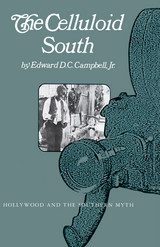 The Celluloid South: Hollywood and the Southern Myth
Edward D.C. Campbell
University of Tennessee Press, 2003 The “southern” – as much a Hollywood genre as the “western” – is the subject of The Celluloid South. For decades the film industry, to provide profit-making entertainment, offered the public movies that neither raised difficult issues nor offended a majority of the ticket-buyers. As a result, Hollywood romanticized the south, particularly the antebellum era, in hundreds of films like Uncle Tom’s Cabin, Gone With the Wind, Birth of a Nation, and Jezebel. During the 1920’s and especially the Depression, the “moonlight and magnolia” romances increased to such an extent that Hollywood has been struggling since the late forties to rid films of the traditional images of the “southern.”
In his exploration of the “southern,” Edward D.C. Campbell, Jr. examines the film plots and images – their social, literary, and historical origins, and their impact on the creation of a popular mythology of the south. The unrealistic but seemingly harmless characterizations of a planter society, and agricultural economy, and especially slavery have hindered the region’s self-assessment and warped the nation’s perspective on race.
Campbell looks beyond the productions themselves, however, to advertising techniques and the reactions of the viewers and reviewers in his examination of the “southern,” its popularity and its decline, and its influence of the public’s conception of history, contemporary conditions, and black/white relations.
The Celluloid South is not a study of film per se, but of film as a reflection of society and the ramifications inherent in popular entertainment. Readers interested in southern history, popular culture, or cinema studies, as well as movie fans, will find The Celluloid South a fascinating look at Hollywood’s development of the southern myth. Thirty-one film stills illustrate the text.
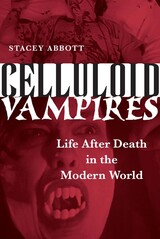 Celluloid Vampires: Life After Death in the Modern World
By Stacey Abbott
University of Texas Press, 2007 In 1896, French magician and filmmaker George Méliès brought forth the first celluloid vampire in his film Le manoir du diable. The vampire continues to be one of film's most popular gothic monsters and in fact, today more people become acquainted with the vampire through film than through literature, such as Bram Stoker's classic Dracula. How has this long legacy of celluloid vampires affected our understanding of vampire mythology? And how has the vampire morphed from its folkloric and literary origins? In this entertaining and absorbing work, Stacey Abbott challenges the conventional interpretation of vampire mythology and argues that the medium of film has completely reinvented the vampire archetype. Rather than representing the primitive and folkloric, the vampire has come to embody the very experience of modernity. No longer in a cape and coffin, today's vampire resides in major cities, listens to punk music, embraces technology, and adapts to any situation. Sometimes she's even female. With case studies of vampire classics such as Nosferatu, Martin, Blade, and Habit, the author traces the evolution of the American vampire film, arguing that vampires are more than just blood-drinking monsters; they reflect the cultural and social climate of the societies that produce them, especially during times of intense change and modernization. Abbott also explores how independent filmmaking techniques, special effects makeup, and the stunning and ultramodern computer-generated effects of recent films have affected the representation of the vampire in film.
Celluloid War Memorials: The British Instructional Films Company and the Memory of the Great War
Mark Connelly
University of Exeter Press, 2017 Creating Celluloid War Memorials for the British Empire looks at the British Instructional Film company and its production of war re-enactments and documentaries during the mid to late 1920s. It is both a work of cinema history and a study of the public’s memory of World War I. As Mark Connelly shows, these films, made in the decade following the end of the war, helped to shape the way in which that war was remembered, and may be understood as microhistories that reveal vital information about perceptions of the Great War, national and imperial identities, the role of cinema as a shaper of attitudes and identities, power relations between Britain and the United States, and the nature of popular culture.
Celtic Art
Ian M. Stead
Harvard University Press, 1996 The Celtic-speaking Britons who inhabited England, Wales, and part of Scotland in the five hundred years before the birth of Christ left no written history. However, archaeology has revealed some of their artistic achievements, and every year more objects are unearthed. Jewelry, weapons, armor, and the metal fittings of chariots and harnesses are magnificently decorated with fascinating and powerful abstract designs.
In this fully revised and updated edition of his highly praised study, Stead examines the Celtic craftsmen's techniques and describes a number of their surviving masterpieces, such as the Battersea shield and the Aylesford bucket.
Cement
Fyodor Vasilievich Gladkov
Northwestern University Press, 1994 A classic of socialist realism, Cement became a model for Soviet fiction in the decades following its publication in the early 1920s. Gleb, a soldier hero, returns from the revolution to a world in transition, as demonstrated by the reorganization of the local cement factory for the massive national effort. His wife, Dasha, is now a leader of the Women's Section of the Communist Pary, an activist in a society where women are suddenly men's equals. Gleb finds that he cannot easily pick up the threads of their old relationship or adjust to this new social order.
 Cement, Earthworms, and Cheese Factories: Religion and Community Development in Rural Ecuador
Jill DeTemple
University of Notre Dame Press, 2012 Cement, Earthworms, and Cheese Factories examines the ways in which religion and community development are closely intertwined in a rural part of contemporary Latin America. Using historical, documentary, and ethnographic data collected over more than a decade as an aid worker and as a researcher in central Ecuador, Jill DeTemple examines the forces that have led to this entanglement of religion and development and the ways in which rural Ecuadorians, as well as development and religious personnel, negotiate these complicated relationships.
Technical innovations have been connected to religious change since the time of the Inca conquest, and Ecuadorians have created defensive strategies for managing such connections. Although most analyses of development either tend to ignore the genuinely religious roots of development or conflate development with religion itself, these strategies are part of a larger negotiation of progress and its meaning in twenty-first-century Ecuador. DeTemple focuses on three development agencies—a liberationist Catholic women's group, a municipal unit dedicated to agriculture, and evangelical Protestant missionaries engaged in education and medical work—to demonstrate that in some instances Ecuadorians encourage a hybridity of religion and development, while in other cases they break up such hybridities into their component parts, often to the consternation of those with whom religious and development discourse originate. This management of hybrids reveals Ecuadorians as agents who produce and reform modernities in ways often unrecognized by development scholars, aid workers, or missionaries, and also reveals that an appreciation of religious belief is essential to a full understanding of diverse aspects of daily life.
"Cement, Earthworms, and Cheese Factories: Religion and Community Development in Rural Ecuador examines the relationship between development and religion and the ongoing negotiation of this relationship in Ecuador. Jill DeTemple argues for an important revision to previous work that portrays contemporary religious movements as resistant to modernity, showing instead that what is happening is a reformation of what modernity and development mean." —Barry Lyons, Wayne State University
"In this book, Jill DeTemple explores the origins of modern ideologies of progress and development and the deep, continuous interplay between religious concepts, practices, and communities and development activities in contemporary Ecuador. Only by focusing on this interplay can we understand the concrete dynamics of development. At the same time, DeTemple's innovative and nuanced work richly illuminates the broader cultural vitality and mobility of contemporary religion." —Randall Styers, University of North Carolina at Chapel Hill
"Jill DeTemple examines the ways in which people negotiate religious and development discourses, using ethnography as well as historical, religious, political, and economic analyses. She explores how ‘lived religion’ and local conceptions of development combine in ways that challenge both the hegemony of Western development discourses and the view that modernity is marked by increasing secularization. This book is a timely and valuable contribution to the growing field of studies in religions and development, and it will be of interest to scholars and students as well as development practitioners." —Emma Tomalin, University of Leeds
Cemeteries Gravemarkers
Richard Meyer
Utah State University Press, 1992 Cemeteries house the dead, but gravemarkers are fashioned by the living, who record on them not only their pleasures, sorrows, and hopes for an afterlife, but also more than they realize of their history, ethnicity, and culture. Richard Meyer has gathered twelve original essays examining burial grounds through the centuries and across the land to give a broad understanding of the history and cultural values of communities, regions, and American society at large.
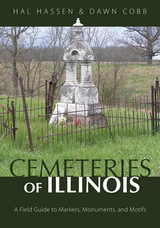 Cemeteries of Illinois: A Field Guide to Markers, Monuments, and Motifs
Hal Hassen
University of Illinois Press, 2017 Illinois is home to cemeteries and burial grounds dating back to the Native American era. Whether sprawling over thousands of acres or dotting remote woodlands, these treasure troves of local and state history reflect two centuries of social, economic, and technological change. This easy-to-use guidebook invites amateur genealogists, historians, and cemetery buffs to decipher the symbols and uncover the fascinating past awaiting them in Illinois 's resting places. Hal Hassen and Dawn Cobb have combined almost three hundred photographs with expert detail to showcase how cemeteries and burial grounds can teach us about archaeology, folklore, art, geology, and social behavior. Features include - the ways different materials used as gravestones and markers reflect historical trends;
- how to understanding the changes in the use of iconographic images;
- the story behind architectural features like fencing, roads, and gates;
- what enthusiasts can do to preserve local cemeteries for future generations.
Captivating and informed, Cemeteries of Illinois is the only guide you need to unlock the mysteries of our state 's final resting places.
Cemetery Ink: Poems
Mihaela Moscaliuc
University of Pittsburgh Press, 2021 In poems of compassion and social justice, Mihaela Moscaliuc probes borders and memory to work through, and further complicate, understandings of belonging—from places (including her native Romania) and histories, to ways of knowing, loving, and grieving. If the wounded populate these poems, so too do goats, black swans, centipedes, dismembered dolls, and wandering wombs. The ekphrastic sequence on Rousseau’s The Sleeping Gypsy honors stories of Roma people while addressing issues of (mis)representation and epistemic violence. As in previous collections, cemeteries become sites of power, holding the living accountable.
The Cemetery of Chua Village and Other Stories
Doan Le
Northwestern University Press, 2005 This seventh volume in the "Voices from Vietnam" series introduces U. S. readers to another major figure in modern Vietnamese letters: Doan Le. Noted for her versatility of style and her originality, she writes tales that are intensely human and universal, exploring such subjects as greed, marriage, divorce, aging and human rights. For the scholar, these stories give insight into Vietnamese culture after the "renovation". For the general reader, these are stories that explore all the subtle enigmas of the human heart.
As Wayne Karlin notes in his introduction, "[She] is a master of allegory and gently complex satire...her stories can often be fantastical—Sholom Aleichem's village of Helm channeled by Kafka through Our Town—or they can be deeply personal and realistic. In both cases they grow unabashedly from the real vicissitudes of her life."
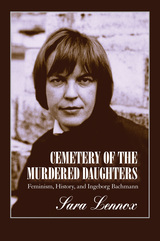 Cemetery of the Murdered Daughters: Feminism, History, and Ingeborg Bachmann
Sara Lennox
University of Massachusetts Press, 2006 Although Austrian writer Ingeborg Bachmann (1926–1973) is widely regarded as one of the most important twentieth-century authors writing in German, her novels and stories have sometimes been viewed narrowly as portraits of women as victims. In this innovative study, Sara Lennox provides a much broader perspective on Bachmann's work, at the same time undertaking an experiment in feminist methodology.Lennox examines Bachmann's poetry and prose in historical context, arguing that the varied feminist interpretations of her writings are the result of shifts in theoretical emphases over a period of more than three decades. Lennox then places her own essays on Bachmann in similar perspective, showing how each piece reflects the historical moment in which it was written. Making use of recent interdisciplinary approaches—Foucauldian theories of sexuality, post-colonial theory, materialist feminism—she explores the extent to which each of her earlier readings was shaped by the methods employed, the questions asked, and the political issues that seemed most germane at the time. Out of this analysis comes a new understanding of the significance of Bachmann's work and new insight into the theory and practice of feminist criticism.
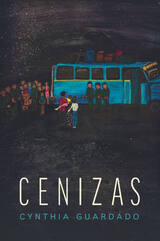 Cenizas: Poems
Cynthia Guardado
University of Arizona Press, 2022 Cenizas offers an arresting portrait of a Salvadoran family whose lives have been shaped by the upheavals of global politics. The speaker of these poems—the daughter of Salvadoran immigrants—questions the meaning of homeland as she navigates life in the United States while remaining tethered to El Salvador by the long shadows cast by personal and public history. Cynthia Guardado’s poems give voice to the grief of family trauma, while capturing moments of beauty and tenderness. Maternal figures preside over the verses, guiding the speaker as she searches the ashes of history to tell her family’s story. The spare, narrative style of the poems are filled with depth as the family’s layers come to light.
Guardado crafted the poems in Cenizas over a ten-year period, often traveling to El Salvador for research and to conduct interviews. The Salvadoran Civil War haunts the pages of this collection as it unflinchingly explores war, its aftermath, and the bittersweet legacies that are passed down from one generation to the next. The poems mourn those who were lost and honor the strength of the speaker’s ancestors. “All my people have been born from the ashes of volcanoes,” she writes, invoking a family lineage that has endured the atrocities committed against them. Even so, El Salvador keeps pulling the speaker back—and despite warnings of danger, she still manages to find beauty among the ruins.
Cenotaph: Poems
Brock Jones
University of Arkansas Press, 2016 Finalist, 2016 Miller Williams Poetry Prize, edited by Billy Collins Out of the contradiction, paradox, loss, and strange beauty of contemporary warfare, Brock Jones brings us Cenotaph, a collection of poems that have as their genesis Jones’s deployments to Iraq in 2002 and 2005, when he was in the US Army. These are war poems, but also love poems and hate poems, poems about dying and living, poems about hope and hopelessness. These are poems that beautifully reflect Jones’s resignation to and rejection of the impossibility of saying anything definitive or honest about war. These are poems that strive to do what poet Bruce Weigl described as the poet’s job: to find “some kind of miraculous way th at if you work hard enough to get the words right, that which you call horrific and wrong is defeated.” Cenotaph is a poet doing the poet’s work: trying, hoping to get the words right.
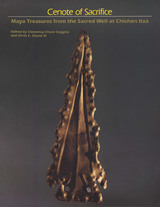 Cenote of Sacrifice: Maya Treasures from the Sacred Well at Chichen Itza
Clemency Chase Coggins
University of Texas Press, 1984 Chichén Itzá ("mouth of the well of the Itza") was one of the great centers of civilization in prehistoric America, serving between the eighth and twelfth centuries A.D. as a religious, economic, social, and political capital on the Yucatán Peninsula. Within the ancient city there were many natural wells or cenotes. One, within the ceremonial heart of the city, is an impressive natural feature with vertical limestone walls enclosing a deep pool of jade green water some eighty feet below ground level. This cenote, which gave the city its name, became a sacred shrine of Maya pilgrimage, described by one post-Conquest observer as similar to Jerusalem and Rome. Here, during the city's ascendancy and for centuries after its decline, the peoples of Yucatán consulted their gods and made ritual offerings of precious objects and living victims who were thought to receive prophecies. Although the well was described by Bishop Diego de Landa in the late sixteenth century, its contents were not known until the early 1900s when revealed by the work of Edward H. Thompson. Conducting excavations for the Peabody Museum of Harvard University, Thompson recovered almost thirty thousand artifacts, most ceremonially broken and many beautifully preserved by burial in the deep silt at the bottom of the well. The materials were sent to the Peabody Museum, where they remained, unexhibited, for over seventy years. In 1984, for the first time, nearly three hundred objects of gold, jade, copper, pottery, wood, copal, textile, and other materials from the collection were gathered into a traveling interpretive exhibition. No other archaeological exhibition had previously given this glimpse into Maya ritual life because no other collection had objects such as those found in the Sacred Cenote. Moreover, the objects from the Cenote come from throughout Mesoamerica and lower Central America, representing many artistic traditions. The exhibit and this, its accompanying catalog, marked the first time all of the different kinds of offerings have ever been displayed together, and the first time many have been published. Essays by Gordon R. Willey and Linnea H. Wren place the Cenote of Sacrifice and the great Maya city of Chichén Itzá within the larger context of Maya archaeology and history. The catalog entries, written by Clemency Chase Coggins, describe the objects displayed in the traveling exhibition. Some entries are brief descriptive statements; others develop short scholarly themes bearing on the function and interpretation of specific objects. Coggins' introductory essay describes how the objects were collected by Thompson and how the exhibition collection has been studied to reveal the periods of Cenote ritual and the changing practices of offering to the Sacred Cenote.
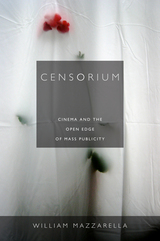 Censorium: Cinema and the Open Edge of Mass Publicity
William Mazzarella
Duke University Press, 2013 In the world of globalized media, provocative images trigger culture wars between traditionalists and cosmopolitans, between censors and defenders of free expression. But are images censored because of what they mean, what they do, or what they might become? And must audiences be protected because of what they understand, what they feel, or what they might imagine? At the intersection of anthropology, media studies, and critical theory, Censorium is a pathbreaking analysis of Indian film censorship. The book encompasses two moments of moral panic: the consolidation of the cinema in the 1910s and 1920s, and the global avalanche of images unleashed by liberalization since the early 1990s. Exploring breaks and continuities in film censorship across colonial and postcolonial moments, William Mazzarella argues that the censors' obsessive focus on the unacceptable content of certain images and the unruly behavior of particular audiences displaces a problem that they constantly confront yet cannot directly acknowledge: the volatile relation between mass affect and collective meaning. Grounded in a close analysis of cinema regulation in the world's largest democracy, Censorium ultimately brings light to the elusive foundations of political and cultural sovereignty in mass-mediated societies.
The Censors: A Bilingual Selection of Stories
Luisa Valenzuela
Northwestern University Press, 1995 The Censors is the only bilingual collection of fiction by Luisa Valenzuela, one of Latin America's best known and most widely translated authors. This selection of stories from Clara, Strange Things Happen Here, and Open Door, which delves into the personal and political realities under authoritarian rule, gives a rich representation of her literary talent.
Censorship and Interpretation
Annabel M. Patterson
University of Wisconsin Press, 1991 Annabel Patterson explores the effects of censorship on both writing and reading in early modern England, drawing analogies and connections with France during the same period.
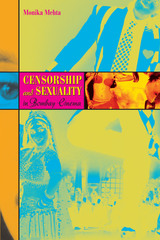 Censorship and Sexuality in Bombay Cinema
By Monika Mehta
University of Texas Press, 2011 India produces an impressive number of films each year in a variety of languages. Here, Monika Mehta breaks new ground by analyzing Hindi films and exploring the censorship of gender and heterosexuality in Bombay cinema. She studies how film censorship on various levels makes the female body and female sexuality pivotal in constructing national identity, not just through the films themselves but also through the heated debates that occur in newspapers and other periodicals. The standard claim is that the state dictates censorship and various prohibitions, but Mehta explores how relationships among the state, the film industry, and the public illuminate censorship's role in identity formation, while also examining how desire, profits, and corruption are generated through the act of censoring. Committed to extending a feminist critique of mass culture in the global south, Mehta situates the story of censorship in a broad social context and traces the intriguing ways in which the heated debates on sexuality in Bombay cinema actually produce the very forms of sexuality they claim to regulate. She imagines afresh the theoretical field of censorship by combining textual analysis, archival research, and qualitative fieldwork. Her analysis reveals how central concepts of film studies, such as stardom, spectacle, genre, and sound, are employed and (re)configured within the ambit of state censorship, thereby expanding the scope of their application and impact.
 Censorship in Romania
Lidia Vianu
Central European University Press, 1998 Through a series of interviews with prominent Romanian literary figures and a select presentation of their writings, Lidia Vianu asks how, under communism, did Romanian writers cope with constant ideological shifts and, in turn, respond to the censorship that so often accompanied such changes? Now that Romania has emerged from almost fifty years of Communist rule, what is the current status of censorship? These writers are important because, though working under the terror of communism, they dared to put their thoughts into writing, remaining true to their craft, and, in some instances, even arranging for publication. Vianu has chosen a series of subversive writings that not only indicted communism but were also widely embraced by the Romanian public. The author continues to argue that after the fall of communism and the disappearance of subversive literature, the Romanian public started to devour works of translation. A somewhat different form of censorship arose: state-sponsored censorship was replaced by what Vianu terms a crisis of native writing.
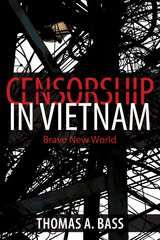 Censorship in Vietnam: Brave New World
Thomas A. Bass
University of Massachusetts Press, 2017 What does censorship do to a culture? How do censors justify their work? What are the mechanisms by which censorship—and self-censorship—alter people's sense of time and memory, truth and reality? Thomas Bass faced these questions when The Spy Who Loved Us, his account of the famous Time magazine journalist and double agent Pham Xuan An, was published in a Vietnamese edition. When the book finally appeared in 2014, after five years of negotiations with Vietnamese censors, more than four hundred passages had been altered or cut from the text.
After the book was published, Bass flew to Vietnam to meet his censors, at least the half dozen who would speak with him. In Censorship in Vietnam, he describes these meetings and examines how censorship works, both in Vietnam and elsewhere in the world. An exemplary piece of investigative reporting, Censorship in Vietnam opens a window into the country today and shows us the precarious nature of intellectual freedom in a world governed by suppression.
Centaur
Greg Wrenn
University of Wisconsin Press, 2013 Greg Wrenn's debut collection opens with a long poem in which a man undergoes surgery to become a centaur. Other poems speak in voices as varied as those of Robert Mapplethorpe, Hercules, and a Wise Man at the birth of Jesus. Centaur skitters along the blurred lines between compulsivity and following one's heart, stasis and self-realization, human and animal. Here, suffering and transcendence are restlessly conjoined.
Centaur, The
May Swenson
Utah State University Press, 2007 First published in 1956, May Swenson's "The Centaur" remains one of her most popular and most anthologized poems. This is its first appearance as a picture book for children. In images bright and brisk and nearly tangible, the poet re-creates the joy of riding a stick horse through a small-town summer. We find ourselves, with her, straddling "a long limber horse with . . . a few leaves for a tail," and pounding through the lovely dust along the path by the old canal. As her shape shifts from child to horse and back, we know exactly what she feels. Sherry Meidell's water-color illustrations perfectly convey the wit and wisdom of May Swenson's poem. These are playful, satisfying images full of vitality and imagination. Meidell handles the joy of poem's fantasy and the joy of its occasional naughtiness with equal success. Other books by and about May Swenson: Body My House, May Swenson, Dear Elizabeth, May Out West
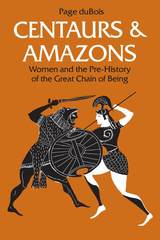 Centaurs and Amazons: Women and the Pre-History of the Great Chain of Being
Page duBois
University of Michigan Press, 1991 In Centaurs and Amazons, Page duBois offers a prehistory of hierarchy. Using structural anthropology, symbolic analysis, and recent literary theory, she demonstrates a shift in Greek thought from the fifth to the fourth century B.C. that had a profound influence upon subsequent Western culture and politics. Through an analysis of mythology, drama, sculpture, architecture, and Greek vase painting, duBois documents the transition from a system of thought that organized the experience of difference in terms of polarity and analogy to one based upon a relatively rigid hierarchical scheme. This was the beginning of "the great chain of being," the philosophical construct that all life was organized in minute gradations of superiority and inferiority. This scheme, in various guises, has continued to influence philosophical and political thought. The author's intelligent and discriminating use of scholarship from various fields makes Centaurs and Amazons an impressive interdisciplinary study of interest to classicists, feminist scholars, historians, art historians, anthropologists, and political scientists.
 CENTENARY ED WORKS NATHANIEL HAWTHO: VOL. I, THE SCARLET LETTER
NATHANIEL HAWTHORNE
Ohio State University Press, 1963 "Because it represents the first scholarly effort to establish texts as close as possible to the intentions of the author, this Centenary Edition makes obsolete all previous editions, notorious for their textual corruption. An eminent staff . . . has analyzed and synthesized the evidence of all MSS and worthwhile printed editions. Each volume includes a well documented introduction concerning such matters as circumstances leading to composition and history of publication as well as textual notes on alterations in the MSS, editorial emendations, etc." --Choice
"The Centenary Edition, which has been producing weighty volumes of definitively edited texts of Hawthorne for a full generation, is now the sine qua non of Hawthorne scholarship. As an example of editorial care and research thoroughness it has been a model for the profession and as a physical object a model for publishers. In addition to the immensely important achievement of producing fully accurate texts of the romances, tales, and sketches, the Centenary editors have made available, for the very first time, all of the various Notebooks and letters. For the letters, especially, the wait has been long but the result is gratifying. Reading straight through the Centenary's six volumes of letters is a self-indulgent pleasure that brings us markedly closer to the man than we can get in any other way." --American Literature
Representing decades of work, this is the definitive edition of Hawthorne's works. Each volume includes comprehensive notes and explanatory material.
I: The Scarlet Letter $62.95 cloth 0-8142-0059-1
II: The House of the Seven Gables $69.95 cloth 0-8142-0060-5
III: The Blithedale Romance and Fanshawe $72.95 cloth 0-8142-0061-3
IV: The Marble Faun $83.95 cloth 0-8142-0062-1
V: Our Old Home $72.95 cloth 0-8142-0002-8
VI: True Stories from History and Biography $72.95 cloth 0-8142-0157-1
VII: A Wonder Book and Tanglewood Tales $72.95 cloth 0-8142-0158-X
VIII: The American Notebooks $98.95 cloth 0-8142-0159-8
IX: Twice-told Tales $83.95 cloth 0-8142-0202-0
X: Mosses from an Old Manse $83.95 cloth 0-8142-0203-9
XI: The Snow Image and Uncollected Tales $72.95 cloth 0-8142-0204-7
XII: The American Claimant Manuscripts $83.95 cloth 0-8142-0251-9
XIII: The Elixir of Life Manuscripts $98.95 cloth 0-8142-0252-7
XIV: The French and Italian Notebooks $98.95 cloth 0-8142-0256-X
XV: The Letters, 1813-1843 $98.95 cloth 0-8142-0363-9
XVI: The Letters, 1843-1853 $98.95 cloth 0-8142-0364-7
XVII: The Letters, 1853-1856 $83.95 cloth 0-8142-0365-5
XVIII: The Letters, 1857-1864 $98.95 cloth 0-8142-0383-3
XIX: The Consular Letters, 1853-1855 $83.95 cloth 0-8142-0384-1
XX: The Consular Letters, 1856-1857 $83.95 cloth 0-8142-0462-7
XXI: The English Notebooks, 1853-1856 $98.95 cloth 0-8142-0670-0
XXII: The English Notebooks, 1856-1860 $98.95 cloth 0-8142-0671-9
XXIII: Miscellaneous Prose and Verse $98.95 cloth 0-8142-0644-1
 CENTENARY ED WORKS NATHANIEL HAWTHO: VOL. V, OUR OLD HOME
NATHANIEL HAWTHORNE
Ohio State University Press, 1970 "Because it represents the first scholarly effort to establish texts as close as possible to the intentions of the author, this Centenary Edition makes obsolete all previous editions, notorious for their textual corruption. An eminent staff . . . has analyzed and synthesized the evidence of all MSS and worthwhile printed editions. Each volume includes a well documented introduction concerning such matters as circumstances leading to composition and history of publication as well as textual notes on alterations in the MSS, editorial emendations, etc." --Choice
"The Centenary Edition, which has been producing weighty volumes of definitively edited texts of Hawthorne for a full generation, is now the sine qua non of Hawthorne scholarship. As an example of editorial care and research thoroughness it has been a model for the profession and as a physical object a model for publishers. In addition to the immensely important achievement of producing fully accurate texts of the romances, tales, and sketches, the Centenary editors have made available, for the very first time, all of the various Notebooks and letters. For the letters, especially, the wait has been long but the result is gratifying. Reading straight through the Centenary's six volumes of letters is a self-indulgent pleasure that brings us markedly closer to the man than we can get in any other way." --American Literature
Representing decades of work, this is the definitive edition of Hawthorne's works. Each volume includes comprehensive notes and explanatory material.
I: The Scarlet Letter $62.95 cloth 0-8142-0059-1
II: The House of the Seven Gables $69.95 cloth 0-8142-0060-5
III: The Blithedale Romance and Fanshawe $72.95 cloth 0-8142-0061-3
IV: The Marble Faun $83.95 cloth 0-8142-0062-1
V: Our Old Home $72.95 cloth 0-8142-0002-8
VI: True Stories from History and Biography $72.95 cloth 0-8142-0157-1
VII: A Wonder Book and Tanglewood Tales $72.95 cloth 0-8142-0158-X
VIII: The American Notebooks $98.95 cloth 0-8142-0159-8
IX: Twice-told Tales $83.95 cloth 0-8142-0202-0
X: Mosses from an Old Manse $83.95 cloth 0-8142-0203-9
XI: The Snow Image and Uncollected Tales $72.95 cloth 0-8142-0204-7
XII: The American Claimant Manuscripts $83.95 cloth 0-8142-0251-9
XIII: The Elixir of Life Manuscripts $98.95 cloth 0-8142-0252-7
XIV: The French and Italian Notebooks $98.95 cloth 0-8142-0256-X
XV: The Letters, 1813-1843 $98.95 cloth 0-8142-0363-9
XVI: The Letters, 1843-1853 $98.95 cloth 0-8142-0364-7
XVII: The Letters, 1853-1856 $83.95 cloth 0-8142-0365-5
XVIII: The Letters, 1857-1864 $98.95 cloth 0-8142-0383-3
XIX: The Consular Letters, 1853-1855 $83.95 cloth 0-8142-0384-1
XX: The Consular Letters, 1856-1857 $83.95 cloth 0-8142-0462-7
XXI: The English Notebooks, 1853-1856 $98.95 cloth 0-8142-0670-0
XXII: The English Notebooks, 1856-1860 $98.95 cloth 0-8142-0671-9
XXIII: Miscellaneous Prose and Verse $98.95 cloth 0-8142-0644-1
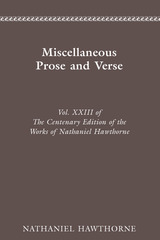 CENTENARY ED WORKS NATHANIEL HAWTHORNE: MISCELLANEOUS PROSE AND VERSE
NATHANIEL HAWTHORNE
Ohio State University Press, 1995 "Because it represents the first scholarly effort to establish texts as close as possible to the intentions of the author, this Centenary Edition makes obsolete all previous editions, notorious for their textual corruption. An eminent staff . . . has analyzed and synthesized the evidence of all MSS and worthwhile printed editions. Each volume includes a well documented introduction concerning such matters as circumstances leading to composition and history of publication as well as textual notes on alterations in the MSS, editorial emendations, etc." --Choice
"The Centenary Edition, which has been producing weighty volumes of definitively edited texts of Hawthorne for a full generation, is now the sine qua non of Hawthorne scholarship. As an example of editorial care and research thoroughness it has been a model for the profession and as a physical object a model for publishers. In addition to the immensely important achievement of producing fully accurate texts of the romances, tales, and sketches, the Centenary editors have made available, for the very first time, all of the various Notebooks and letters. For the letters, especially, the wait has been long but the result is gratifying. Reading straight through the Centenary's six volumes of letters is a self-indulgent pleasure that brings us markedly closer to the man than we can get in any other way." --American Literature
Representing decades of work, this is the definitive edition of Hawthorne's works. Each volume includes comprehensive notes and explanatory material.
I: The Scarlet Letter $62.95 cloth 0-8142-0059-1
II: The House of the Seven Gables $69.95 cloth 0-8142-0060-5
III: The Blithedale Romance and Fanshawe $72.95 cloth 0-8142-0061-3
IV: The Marble Faun $83.95 cloth 0-8142-0062-1
V: Our Old Home $72.95 cloth 0-8142-0002-8
VI: True Stories from History and Biography $72.95 cloth 0-8142-0157-1
VII: A Wonder Book and Tanglewood Tales $72.95 cloth 0-8142-0158-X
VIII: The American Notebooks $98.95 cloth 0-8142-0159-8
IX: Twice-told Tales $83.95 cloth 0-8142-0202-0
X: Mosses from an Old Manse $83.95 cloth 0-8142-0203-9
XI: The Snow Image and Uncollected Tales $72.95 cloth 0-8142-0204-7
XII: The American Claimant Manuscripts $83.95 cloth 0-8142-0251-9
XIII: The Elixir of Life Manuscripts $98.95 cloth 0-8142-0252-7
XIV: The French and Italian Notebooks $98.95 cloth 0-8142-0256-X
XV: The Letters, 1813-1843 $98.95 cloth 0-8142-0363-9
XVI: The Letters, 1843-1853 $98.95 cloth 0-8142-0364-7
XVII: The Letters, 1853-1856 $83.95 cloth 0-8142-0365-5
XVIII: The Letters, 1857-1864 $98.95 cloth 0-8142-0383-3
XIX: The Consular Letters, 1853-1855 $83.95 cloth 0-8142-0384-1
XX: The Consular Letters, 1856-1857 $83.95 cloth 0-8142-0462-7
XXI: The English Notebooks, 1853-1856 $98.95 cloth 0-8142-0670-0
XXII: The English Notebooks, 1856-1860 $98.95 cloth 0-8142-0671-9
XXIII: Miscellaneous Prose and Verse $98.95 cloth 0-8142-0644-1
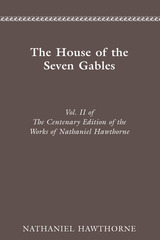 CENTENARY ED WORKS NATHANIEL HAWTHORNE: VOL. II, THE HOUSE OF THE SEVEN GABLES
NATHANIEL HAWTHORNE
Ohio State University Press, 1965 "Because it represents the first scholarly effort to establish texts as close as possible to the intentions of the author, this Centenary Edition makes obsolete all previous editions, notorious for their textual corruption. An eminent staff . . . has analyzed and synthesized the evidence of all MSS and worthwhile printed editions. Each volume includes a well documented introduction concerning such matters as circumstances leading to composition and history of publication as well as textual notes on alterations in the MSS, editorial emendations, etc." --Choice
"The Centenary Edition, which has been producing weighty volumes of definitively edited texts of Hawthorne for a full generation, is now the sine qua non of Hawthorne scholarship. As an example of editorial care and research thoroughness it has been a model for the profession and as a physical object a model for publishers. In addition to the immensely important achievement of producing fully accurate texts of the romances, tales, and sketches, the Centenary editors have made available, for the very first time, all of the various Notebooks and letters. For the letters, especially, the wait has been long but the result is gratifying. Reading straight through the Centenary's six volumes of letters is a self-indulgent pleasure that brings us markedly closer to the man than we can get in any other way." --American Literature
Representing decades of work, this is the definitive edition of Hawthorne's works. Each volume includes comprehensive notes and explanatory material.
I: The Scarlet Letter $62.95 cloth 0-8142-0059-1
II: The House of the Seven Gables $69.95 cloth 0-8142-0060-5
III: The Blithedale Romance and Fanshawe $72.95 cloth 0-8142-0061-3
IV: The Marble Faun $83.95 cloth 0-8142-0062-1
V: Our Old Home $72.95 cloth 0-8142-0002-8
VI: True Stories from History and Biography $72.95 cloth 0-8142-0157-1
VII: A Wonder Book and Tanglewood Tales $72.95 cloth 0-8142-0158-X
VIII: The American Notebooks $98.95 cloth 0-8142-0159-8
IX: Twice-told Tales $83.95 cloth 0-8142-0202-0
X: Mosses from an Old Manse $83.95 cloth 0-8142-0203-9
XI: The Snow Image and Uncollected Tales $72.95 cloth 0-8142-0204-7
XII: The American Claimant Manuscripts $83.95 cloth 0-8142-0251-9
XIII: The Elixir of Life Manuscripts $98.95 cloth 0-8142-0252-7
XIV: The French and Italian Notebooks $98.95 cloth 0-8142-0256-X
XV: The Letters, 1813-1843 $98.95 cloth 0-8142-0363-9
XVI: The Letters, 1843-1853 $98.95 cloth 0-8142-0364-7
XVII: The Letters, 1853-1856 $83.95 cloth 0-8142-0365-5
XVIII: The Letters, 1857-1864 $98.95 cloth 0-8142-0383-3
XIX: The Consular Letters, 1853-1855 $83.95 cloth 0-8142-0384-1
XX: The Consular Letters, 1856-1857 $83.95 cloth 0-8142-0462-7
XXI: The English Notebooks, 1853-1856 $98.95 cloth 0-8142-0670-0
XXII: The English Notebooks, 1856-1860 $98.95 cloth 0-8142-0671-9
XXIII: Miscellaneous Prose and Verse $98.95 cloth 0-8142-0644-1
 CENTENARY ED WORKS NATHANIEL HAWTHORNE: VOL. III, THE BLITHEDALE ROMANCE AND FAN
NATHANIEL HAWTHORNE
Ohio State University Press, 1965 "Because it represents the first scholarly effort to establish texts as close as possible to the intentions of the author, this Centenary Edition makes obsolete all previous editions, notorious for their textual corruption. An eminent staff . . . has analyzed and synthesized the evidence of all MSS and worthwhile printed editions. Each volume includes a well documented introduction concerning such matters as circumstances leading to composition and history of publication as well as textual notes on alterations in the MSS, editorial emendations, etc." --Choice
"The Centenary Edition, which has been producing weighty volumes of definitively edited texts of Hawthorne for a full generation, is now the sine qua non of Hawthorne scholarship. As an example of editorial care and research thoroughness it has been a model for the profession and as a physical object a model for publishers. In addition to the immensely important achievement of producing fully accurate texts of the romances, tales, and sketches, the Centenary editors have made available, for the very first time, all of the various Notebooks and letters. For the letters, especially, the wait has been long but the result is gratifying. Reading straight through the Centenary's six volumes of letters is a self-indulgent pleasure that brings us markedly closer to the man than we can get in any other way." --American Literature
Representing decades of work, this is the definitive edition of Hawthorne's works. Each volume includes comprehensive notes and explanatory material.
I: The Scarlet Letter $62.95 cloth 0-8142-0059-1
II: The House of the Seven Gables $69.95 cloth 0-8142-0060-5
III: The Blithedale Romance and Fanshawe $72.95 cloth 0-8142-0061-3
IV: The Marble Faun $83.95 cloth 0-8142-0062-1
V: Our Old Home $72.95 cloth 0-8142-0002-8
VI: True Stories from History and Biography $72.95 cloth 0-8142-0157-1
VII: A Wonder Book and Tanglewood Tales $72.95 cloth 0-8142-0158-X
VIII: The American Notebooks $98.95 cloth 0-8142-0159-8
IX: Twice-told Tales $83.95 cloth 0-8142-0202-0
X: Mosses from an Old Manse $83.95 cloth 0-8142-0203-9
XI: The Snow Image and Uncollected Tales $72.95 cloth 0-8142-0204-7
XII: The American Claimant Manuscripts $83.95 cloth 0-8142-0251-9
XIII: The Elixir of Life Manuscripts $98.95 cloth 0-8142-0252-7
XIV: The French and Italian Notebooks $98.95 cloth 0-8142-0256-X
XV: The Letters, 1813-1843 $98.95 cloth 0-8142-0363-9
XVI: The Letters, 1843-1853 $98.95 cloth 0-8142-0364-7
XVII: The Letters, 1853-1856 $83.95 cloth 0-8142-0365-5
XVIII: The Letters, 1857-1864 $98.95 cloth 0-8142-0383-3
XIX: The Consular Letters, 1853-1855 $83.95 cloth 0-8142-0384-1
XX: The Consular Letters, 1856-1857 $83.95 cloth 0-8142-0462-7
XXI: The English Notebooks, 1853-1856 $98.95 cloth 0-8142-0670-0
XXII: The English Notebooks, 1856-1860 $98.95 cloth 0-8142-0671-9
XXIII: Miscellaneous Prose and Verse $98.95 cloth 0-8142-0644-1
 CENTENARY ED WORKS NATHANIEL HAWTHORNE: VOL. IV, THE MARBLE FAUN
NATHANIEL HAWTHORNE
Ohio State University Press, 1969 "Because it represents the first scholarly effort to establish texts as close as possible to the intentions of the author, this Centenary Edition makes obsolete all previous editions, notorious for their textual corruption. An eminent staff . . . has analyzed and synthesized the evidence of all MSS and worthwhile printed editions. Each volume includes a well documented introduction concerning such matters as circumstances leading to composition and history of publication as well as textual notes on alterations in the MSS, editorial emendations, etc." --Choice
"The Centenary Edition, which has been producing weighty volumes of definitively edited texts of Hawthorne for a full generation, is now the sine qua non of Hawthorne scholarship. As an example of editorial care and research thoroughness it has been a model for the profession and as a physical object a model for publishers. In addition to the immensely important achievement of producing fully accurate texts of the romances, tales, and sketches, the Centenary editors have made available, for the very first time, all of the various Notebooks and letters. For the letters, especially, the wait has been long but the result is gratifying. Reading straight through the Centenary's six volumes of letters is a self-indulgent pleasure that brings us markedly closer to the man than we can get in any other way." --American Literature
Representing decades of work, this is the definitive edition of Hawthorne's works. Each volume includes comprehensive notes and explanatory material.
I: The Scarlet Letter $62.95 cloth 0-8142-0059-1
II: The House of the Seven Gables $69.95 cloth 0-8142-0060-5
III: The Blithedale Romance and Fanshawe $72.95 cloth 0-8142-0061-3
IV: The Marble Faun $83.95 cloth 0-8142-0062-1
V: Our Old Home $72.95 cloth 0-8142-0002-8
VI: True Stories from History and Biography $72.95 cloth 0-8142-0157-1
VII: A Wonder Book and Tanglewood Tales $72.95 cloth 0-8142-0158-X
VIII: The American Notebooks $98.95 cloth 0-8142-0159-8
IX: Twice-told Tales $83.95 cloth 0-8142-0202-0
X: Mosses from an Old Manse $83.95 cloth 0-8142-0203-9
XI: The Snow Image and Uncollected Tales $72.95 cloth 0-8142-0204-7
XII: The American Claimant Manuscripts $83.95 cloth 0-8142-0251-9
XIII: The Elixir of Life Manuscripts $98.95 cloth 0-8142-0252-7
XIV: The French and Italian Notebooks $98.95 cloth 0-8142-0256-X
XV: The Letters, 1813-1843 $98.95 cloth 0-8142-0363-9
XVI: The Letters, 1843-1853 $98.95 cloth 0-8142-0364-7
XVII: The Letters, 1853-1856 $83.95 cloth 0-8142-0365-5
XVIII: The Letters, 1857-1864 $98.95 cloth 0-8142-0383-3
XIX: The Consular Letters, 1853-1855 $83.95 cloth 0-8142-0384-1
XX: The Consular Letters, 1856-1857 $83.95 cloth 0-8142-0462-7
XXI: The English Notebooks, 1853-1856 $98.95 cloth 0-8142-0670-0
XXII: The English Notebooks, 1856-1860 $98.95 cloth 0-8142-0671-9
XXIII: Miscellaneous Prose and Verse $98.95 cloth 0-8142-0644-1
 CENTENARY ED WORKS NATHANIEL HAWTHORNE: VOL. IX, TWICE-TOLD TALES
NATHANIEL HAWTHORNE
Ohio State University Press, 1974 "Because it represents the first scholarly effort to establish texts as close as possible to the intentions of the author, this Centenary Edition makes obsolete all previous editions, notorious for their textual corruption. An eminent staff . . . has analyzed and synthesized the evidence of all MSS and worthwhile printed editions. Each volume includes a well documented introduction concerning such matters as circumstances leading to composition and history of publication as well as textual notes on alterations in the MSS, editorial emendations, etc." --Choice
"The Centenary Edition, which has been producing weighty volumes of definitively edited texts of Hawthorne for a full generation, is now the sine qua non of Hawthorne scholarship. As an example of editorial care and research thoroughness it has been a model for the profession and as a physical object a model for publishers. In addition to the immensely important achievement of producing fully accurate texts of the romances, tales, and sketches, the Centenary editors have made available, for the very first time, all of the various Notebooks and letters. For the letters, especially, the wait has been long but the result is gratifying. Reading straight through the Centenary's six volumes of letters is a self-indulgent pleasure that brings us markedly closer to the man than we can get in any other way." --American Literature
Representing decades of work, this is the definitive edition of Hawthorne's works. Each volume includes comprehensive notes and explanatory material.
I: The Scarlet Letter $62.95 cloth 0-8142-0059-1
II: The House of the Seven Gables $69.95 cloth 0-8142-0060-5
III: The Blithedale Romance and Fanshawe $72.95 cloth 0-8142-0061-3
IV: The Marble Faun $83.95 cloth 0-8142-0062-1
V: Our Old Home $72.95 cloth 0-8142-0002-8
VI: True Stories from History and Biography $72.95 cloth 0-8142-0157-1
VII: A Wonder Book and Tanglewood Tales $72.95 cloth 0-8142-0158-X
VIII: The American Notebooks $98.95 cloth 0-8142-0159-8
IX: Twice-told Tales $83.95 cloth 0-8142-0202-0
X: Mosses from an Old Manse $83.95 cloth 0-8142-0203-9
XI: The Snow Image and Uncollected Tales $72.95 cloth 0-8142-0204-7
XII: The American Claimant Manuscripts $83.95 cloth 0-8142-0251-9
XIII: The Elixir of Life Manuscripts $98.95 cloth 0-8142-0252-7
XIV: The French and Italian Notebooks $98.95 cloth 0-8142-0256-X
XV: The Letters, 1813-1843 $98.95 cloth 0-8142-0363-9
XVI: The Letters, 1843-1853 $98.95 cloth 0-8142-0364-7
XVII: The Letters, 1853-1856 $83.95 cloth 0-8142-0365-5
XVIII: The Letters, 1857-1864 $98.95 cloth 0-8142-0383-3
XIX: The Consular Letters, 1853-1855 $83.95 cloth 0-8142-0384-1
XX: The Consular Letters, 1856-1857 $83.95 cloth 0-8142-0462-7
XXI: The English Notebooks, 1853-1856 $98.95 cloth 0-8142-0670-0
XXII: The English Notebooks, 1856-1860 $98.95 cloth 0-8142-0671-9
XXIII: Miscellaneous Prose and Verse $98.95 cloth 0-8142-0644-1
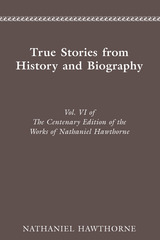 CENTENARY ED WORKS NATHANIEL HAWTHORNE: VOL. VI, TRUE STORIES FROM HISTORY AND B
NATHANIEL HAWTHORNE
Ohio State University Press, 1972 "Because it represents the first scholarly effort to establish texts as close as possible to the intentions of the author, this Centenary Edition makes obsolete all previous editions, notorious for their textual corruption. An eminent staff . . . has analyzed and synthesized the evidence of all MSS and worthwhile printed editions. Each volume includes a well documented introduction concerning such matters as circumstances leading to composition and history of publication as well as textual notes on alterations in the MSS, editorial emendations, etc." --Choice
"The Centenary Edition, which has been producing weighty volumes of definitively edited texts of Hawthorne for a full generation, is now the sine qua non of Hawthorne scholarship. As an example of editorial care and research thoroughness it has been a model for the profession and as a physical object a model for publishers. In addition to the immensely important achievement of producing fully accurate texts of the romances, tales, and sketches, the Centenary editors have made available, for the very first time, all of the various Notebooks and letters. For the letters, especially, the wait has been long but the result is gratifying. Reading straight through the Centenary's six volumes of letters is a self-indulgent pleasure that brings us markedly closer to the man than we can get in any other way." --American Literature
Representing decades of work, this is the definitive edition of Hawthorne's works. Each volume includes comprehensive notes and explanatory material.
I: The Scarlet Letter $62.95 cloth 0-8142-0059-1
II: The House of the Seven Gables $69.95 cloth 0-8142-0060-5
III: The Blithedale Romance and Fanshawe $72.95 cloth 0-8142-0061-3
IV: The Marble Faun $83.95 cloth 0-8142-0062-1
V: Our Old Home $72.95 cloth 0-8142-0002-8
VI: True Stories from History and Biography $72.95 cloth 0-8142-0157-1
VII: A Wonder Book and Tanglewood Tales $72.95 cloth 0-8142-0158-X
VIII: The American Notebooks $98.95 cloth 0-8142-0159-8
IX: Twice-told Tales $83.95 cloth 0-8142-0202-0
X: Mosses from an Old Manse $83.95 cloth 0-8142-0203-9
XI: The Snow Image and Uncollected Tales $72.95 cloth 0-8142-0204-7
XII: The American Claimant Manuscripts $83.95 cloth 0-8142-0251-9
XIII: The Elixir of Life Manuscripts $98.95 cloth 0-8142-0252-7
XIV: The French and Italian Notebooks $98.95 cloth 0-8142-0256-X
XV: The Letters, 1813-1843 $98.95 cloth 0-8142-0363-9
XVI: The Letters, 1843-1853 $98.95 cloth 0-8142-0364-7
XVII: The Letters, 1853-1856 $83.95 cloth 0-8142-0365-5
XVIII: The Letters, 1857-1864 $98.95 cloth 0-8142-0383-3
XIX: The Consular Letters, 1853-1855 $83.95 cloth 0-8142-0384-1
XX: The Consular Letters, 1856-1857 $83.95 cloth 0-8142-0462-7
XXI: The English Notebooks, 1853-1856 $98.95 cloth 0-8142-0670-0
XXII: The English Notebooks, 1856-1860 $98.95 cloth 0-8142-0671-9
XXIII: Miscellaneous Prose and Verse $98.95 cloth 0-8142-0644-1
 CENTENARY ED WORKS NATHANIEL HAWTHORNE: VOL. VII, A WONDER BOOK AND TANGLEWOOD T
NATHANIEL HAWTHORNE
Ohio State University Press, 1972 "Because it represents the first scholarly effort to establish texts as close as possible to the intentions of the author, this Centenary Edition makes obsolete all previous editions, notorious for their textual corruption. An eminent staff . . . has analyzed and synthesized the evidence of all MSS and worthwhile printed editions. Each volume includes a well documented introduction concerning such matters as circumstances leading to composition and history of publication as well as textual notes on alterations in the MSS, editorial emendations, etc." --Choice
"The Centenary Edition, which has been producing weighty volumes of definitively edited texts of Hawthorne for a full generation, is now the sine qua non of Hawthorne scholarship. As an example of editorial care and research thoroughness it has been a model for the profession and as a physical object a model for publishers. In addition to the immensely important achievement of producing fully accurate texts of the romances, tales, and sketches, the Centenary editors have made available, for the very first time, all of the various Notebooks and letters. For the letters, especially, the wait has been long but the result is gratifying. Reading straight through the Centenary's six volumes of letters is a self-indulgent pleasure that brings us markedly closer to the man than we can get in any other way." --American Literature
Representing decades of work, this is the definitive edition of Hawthorne's works. Each volume includes comprehensive notes and explanatory material.
I: The Scarlet Letter $62.95 cloth 0-8142-0059-1
II: The House of the Seven Gables $69.95 cloth 0-8142-0060-5
III: The Blithedale Romance and Fanshawe $72.95 cloth 0-8142-0061-3
IV: The Marble Faun $83.95 cloth 0-8142-0062-1
V: Our Old Home $72.95 cloth 0-8142-0002-8
VI: True Stories from History and Biography $72.95 cloth 0-8142-0157-1
VII: A Wonder Book and Tanglewood Tales $72.95 cloth 0-8142-0158-X
VIII: The American Notebooks $98.95 cloth 0-8142-0159-8
IX: Twice-told Tales $83.95 cloth 0-8142-0202-0
X: Mosses from an Old Manse $83.95 cloth 0-8142-0203-9
XI: The Snow Image and Uncollected Tales $72.95 cloth 0-8142-0204-7
XII: The American Claimant Manuscripts $83.95 cloth 0-8142-0251-9
XIII: The Elixir of Life Manuscripts $98.95 cloth 0-8142-0252-7
XIV: The French and Italian Notebooks $98.95 cloth 0-8142-0256-X
XV: The Letters, 1813-1843 $98.95 cloth 0-8142-0363-9
XVI: The Letters, 1843-1853 $98.95 cloth 0-8142-0364-7
XVII: The Letters, 1853-1856 $83.95 cloth 0-8142-0365-5
XVIII: The Letters, 1857-1864 $98.95 cloth 0-8142-0383-3
XIX: The Consular Letters, 1853-1855 $83.95 cloth 0-8142-0384-1
XX: The Consular Letters, 1856-1857 $83.95 cloth 0-8142-0462-7
XXI: The English Notebooks, 1853-1856 $98.95 cloth 0-8142-0670-0
XXII: The English Notebooks, 1856-1860 $98.95 cloth 0-8142-0671-9
XXIII: Miscellaneous Prose and Verse $98.95 cloth 0-8142-0644-1
 CENTENARY ED WORKS NATHANIEL HAWTHORNE: VOL. X, MOSSES FROM AN OLD MANSE
NATHANIEL HAWTHORNE
Ohio State University Press, 1974 "Because it represents the first scholarly effort to establish texts as close as possible to the intentions of the author, this Centenary Edition makes obsolete all previous editions, notorious for their textual corruption. An eminent staff . . . has analyzed and synthesized the evidence of all MSS and worthwhile printed editions. Each volume includes a well documented introduction concerning such matters as circumstances leading to composition and history of publication as well as textual notes on alterations in the MSS, editorial emendations, etc." --Choice
"The Centenary Edition, which has been producing weighty volumes of definitively edited texts of Hawthorne for a full generation, is now the sine qua non of Hawthorne scholarship. As an example of editorial care and research thoroughness it has been a model for the profession and as a physical object a model for publishers. In addition to the immensely important achievement of producing fully accurate texts of the romances, tales, and sketches, the Centenary editors have made available, for the very first time, all of the various Notebooks and letters. For the letters, especially, the wait has been long but the result is gratifying. Reading straight through the Centenary's six volumes of letters is a self-indulgent pleasure that brings us markedly closer to the man than we can get in any other way." --American Literature
Representing decades of work, this is the definitive edition of Hawthorne's works. Each volume includes comprehensive notes and explanatory material.
I: The Scarlet Letter $62.95 cloth 0-8142-0059-1
II: The House of the Seven Gables $69.95 cloth 0-8142-0060-5
III: The Blithedale Romance and Fanshawe $72.95 cloth 0-8142-0061-3
IV: The Marble Faun $83.95 cloth 0-8142-0062-1
V: Our Old Home $72.95 cloth 0-8142-0002-8
VI: True Stories from History and Biography $72.95 cloth 0-8142-0157-1
VII: A Wonder Book and Tanglewood Tales $72.95 cloth 0-8142-0158-X
VIII: The American Notebooks $98.95 cloth 0-8142-0159-8
IX: Twice-told Tales $83.95 cloth 0-8142-0202-0
X: Mosses from an Old Manse $83.95 cloth 0-8142-0203-9
XI: The Snow Image and Uncollected Tales $72.95 cloth 0-8142-0204-7
XII: The American Claimant Manuscripts $83.95 cloth 0-8142-0251-9
XIII: The Elixir of Life Manuscripts $98.95 cloth 0-8142-0252-7
XIV: The French and Italian Notebooks $98.95 cloth 0-8142-0256-X
XV: The Letters, 1813-1843 $98.95 cloth 0-8142-0363-9
XVI: The Letters, 1843-1853 $98.95 cloth 0-8142-0364-7
XVII: The Letters, 1853-1856 $83.95 cloth 0-8142-0365-5
XVIII: The Letters, 1857-1864 $98.95 cloth 0-8142-0383-3
XIX: The Consular Letters, 1853-1855 $83.95 cloth 0-8142-0384-1
XX: The Consular Letters, 1856-1857 $83.95 cloth 0-8142-0462-7
XXI: The English Notebooks, 1853-1856 $98.95 cloth 0-8142-0670-0
XXII: The English Notebooks, 1856-1860 $98.95 cloth 0-8142-0671-9
XXIII: Miscellaneous Prose and Verse $98.95 cloth 0-8142-0644-1
 CENTENARY ED WORKS NATHANIEL HAWTHORNE: VOL. XI, THE SNOW IMAGE AND UNCOLLECTED
NATHANIEL HAWTHORNE
Ohio State University Press, 1974 "Because it represents the first scholarly effort to establish texts as close as possible to the intentions of the author, this Centenary Edition makes obsolete all previous editions, notorious for their textual corruption. An eminent staff . . . has analyzed and synthesized the evidence of all MSS and worthwhile printed editions. Each volume includes a well documented introduction concerning such matters as circumstances leading to composition and history of publication as well as textual notes on alterations in the MSS, editorial emendations, etc." --Choice
"The Centenary Edition, which has been producing weighty volumes of definitively edited texts of Hawthorne for a full generation, is now the sine qua non of Hawthorne scholarship. As an example of editorial care and research thoroughness it has been a model for the profession and as a physical object a model for publishers. In addition to the immensely important achievement of producing fully accurate texts of the romances, tales, and sketches, the Centenary editors have made available, for the very first time, all of the various Notebooks and letters. For the letters, especially, the wait has been long but the result is gratifying. Reading straight through the Centenary's six volumes of letters is a self-indulgent pleasure that brings us markedly closer to the man than we can get in any other way." --American Literature
Representing decades of work, this is the definitive edition of Hawthorne's works. Each volume includes comprehensive notes and explanatory material.
I: The Scarlet Letter $62.95 cloth 0-8142-0059-1
II: The House of the Seven Gables $69.95 cloth 0-8142-0060-5
III: The Blithedale Romance and Fanshawe $72.95 cloth 0-8142-0061-3
IV: The Marble Faun $83.95 cloth 0-8142-0062-1
V: Our Old Home $72.95 cloth 0-8142-0002-8
VI: True Stories from History and Biography $72.95 cloth 0-8142-0157-1
VII: A Wonder Book and Tanglewood Tales $72.95 cloth 0-8142-0158-X
VIII: The American Notebooks $98.95 cloth 0-8142-0159-8
IX: Twice-told Tales $83.95 cloth 0-8142-0202-0
X: Mosses from an Old Manse $83.95 cloth 0-8142-0203-9
XI: The Snow Image and Uncollected Tales $72.95 cloth 0-8142-0204-7
XII: The American Claimant Manuscripts $83.95 cloth 0-8142-0251-9
XIII: The Elixir of Life Manuscripts $98.95 cloth 0-8142-0252-7
XIV: The French and Italian Notebooks $98.95 cloth 0-8142-0256-X
XV: The Letters, 1813-1843 $98.95 cloth 0-8142-0363-9
XVI: The Letters, 1843-1853 $98.95 cloth 0-8142-0364-7
XVII: The Letters, 1853-1856 $83.95 cloth 0-8142-0365-5
XVIII: The Letters, 1857-1864 $98.95 cloth 0-8142-0383-3
XIX: The Consular Letters, 1853-1855 $83.95 cloth 0-8142-0384-1
XX: The Consular Letters, 1856-1857 $83.95 cloth 0-8142-0462-7
XXI: The English Notebooks, 1853-1856 $98.95 cloth 0-8142-0670-0
XXII: The English Notebooks, 1856-1860 $98.95 cloth 0-8142-0671-9
XXIII: Miscellaneous Prose and Verse $98.95 cloth 0-8142-0644-1
 CENTENARY ED WORKS NATHANIEL HAWTHORNE: VOL. XIV, THE FRENCH AND ITALIAN NOTEBOO
NATHANIEL HAWTHORNE
Ohio State University Press, 1980 "Because it represents the first scholarly effort to establish texts as close as possible to the intentions of the author, this Centenary Edition makes obsolete all previous editions, notorious for their textual corruption. An eminent staff . . . has analyzed and synthesized the evidence of all MSS and worthwhile printed editions. Each volume includes a well documented introduction concerning such matters as circumstances leading to composition and history of publication as well as textual notes on alterations in the MSS, editorial emendations, etc." --Choice
"The Centenary Edition, which has been producing weighty volumes of definitively edited texts of Hawthorne for a full generation, is now the sine qua non of Hawthorne scholarship. As an example of editorial care and research thoroughness it has been a model for the profession and as a physical object a model for publishers. In addition to the immensely important achievement of producing fully accurate texts of the romances, tales, and sketches, the Centenary editors have made available, for the very first time, all of the various Notebooks and letters. For the letters, especially, the wait has been long but the result is gratifying. Reading straight through the Centenary's six volumes of letters is a self-indulgent pleasure that brings us markedly closer to the man than we can get in any other way." --American Literature
Representing decades of work, this is the definitive edition of Hawthorne's works. Each volume includes comprehensive notes and explanatory material.
I: The Scarlet Letter $62.95 cloth 0-8142-0059-1
II: The House of the Seven Gables $69.95 cloth 0-8142-0060-5
III: The Blithedale Romance and Fanshawe $72.95 cloth 0-8142-0061-3
IV: The Marble Faun $83.95 cloth 0-8142-0062-1
V: Our Old Home $72.95 cloth 0-8142-0002-8
VI: True Stories from History and Biography $72.95 cloth 0-8142-0157-1
VII: A Wonder Book and Tanglewood Tales $72.95 cloth 0-8142-0158-X
VIII: The American Notebooks $98.95 cloth 0-8142-0159-8
IX: Twice-told Tales $83.95 cloth 0-8142-0202-0
X: Mosses from an Old Manse $83.95 cloth 0-8142-0203-9
XI: The Snow Image and Uncollected Tales $72.95 cloth 0-8142-0204-7
XII: The American Claimant Manuscripts $83.95 cloth 0-8142-0251-9
XIII: The Elixir of Life Manuscripts $98.95 cloth 0-8142-0252-7
XIV: The French and Italian Notebooks $98.95 cloth 0-8142-0256-X
XV: The Letters, 1813-1843 $98.95 cloth 0-8142-0363-9
XVI: The Letters, 1843-1853 $98.95 cloth 0-8142-0364-7
XVII: The Letters, 1853-1856 $83.95 cloth 0-8142-0365-5
XVIII: The Letters, 1857-1864 $98.95 cloth 0-8142-0383-3
XIX: The Consular Letters, 1853-1855 $83.95 cloth 0-8142-0384-1
XX: The Consular Letters, 1856-1857 $83.95 cloth 0-8142-0462-7
XXI: The English Notebooks, 1853-1856 $98.95 cloth 0-8142-0670-0
XXII: The English Notebooks, 1856-1860 $98.95 cloth 0-8142-0671-9
XXIII: Miscellaneous Prose and Verse $98.95 cloth 0-8142-0644-1
 CENTENARY ED WORKS NATHANIEL HAWTHORNE: VOL. XIX, THE CONSULAR LETTERS, 18531855
NATHANIEL HAWTHORNE
Ohio State University Press, 1988 "Because it represents the first scholarly effort to establish texts as close as possible to the intentions of the author, this Centenary Edition makes obsolete all previous editions, notorious for their textual corruption. An eminent staff . . . has analyzed and synthesized the evidence of all MSS and worthwhile printed editions. Each volume includes a well documented introduction concerning such matters as circumstances leading to composition and history of publication as well as textual notes on alterations in the MSS, editorial emendations, etc." --Choice
"The Centenary Edition, which has been producing weighty volumes of definitively edited texts of Hawthorne for a full generation, is now the sine qua non of Hawthorne scholarship. As an example of editorial care and research thoroughness it has been a model for the profession and as a physical object a model for publishers. In addition to the immensely important achievement of producing fully accurate texts of the romances, tales, and sketches, the Centenary editors have made available, for the very first time, all of the various Notebooks and letters. For the letters, especially, the wait has been long but the result is gratifying. Reading straight through the Centenary's six volumes of letters is a self-indulgent pleasure that brings us markedly closer to the man than we can get in any other way." --American Literature
Representing decades of work, this is the definitive edition of Hawthorne's works. Each volume includes comprehensive notes and explanatory material.
I: The Scarlet Letter $62.95 cloth 0-8142-0059-1
II: The House of the Seven Gables $69.95 cloth 0-8142-0060-5
III: The Blithedale Romance and Fanshawe $72.95 cloth 0-8142-0061-3
IV: The Marble Faun $83.95 cloth 0-8142-0062-1
V: Our Old Home $72.95 cloth 0-8142-0002-8
VI: True Stories from History and Biography $72.95 cloth 0-8142-0157-1
VII: A Wonder Book and Tanglewood Tales $72.95 cloth 0-8142-0158-X
VIII: The American Notebooks $98.95 cloth 0-8142-0159-8
IX: Twice-told Tales $83.95 cloth 0-8142-0202-0
X: Mosses from an Old Manse $83.95 cloth 0-8142-0203-9
XI: The Snow Image and Uncollected Tales $72.95 cloth 0-8142-0204-7
XII: The American Claimant Manuscripts $83.95 cloth 0-8142-0251-9
XIII: The Elixir of Life Manuscripts $98.95 cloth 0-8142-0252-7
XIV: The French and Italian Notebooks $98.95 cloth 0-8142-0256-X
XV: The Letters, 1813-1843 $98.95 cloth 0-8142-0363-9
XVI: The Letters, 1843-1853 $98.95 cloth 0-8142-0364-7
XVII: The Letters, 1853-1856 $83.95 cloth 0-8142-0365-5
XVIII: The Letters, 1857-1864 $98.95 cloth 0-8142-0383-3
XIX: The Consular Letters, 1853-1855 $83.95 cloth 0-8142-0384-1
XX: The Consular Letters, 1856-1857 $83.95 cloth 0-8142-0462-7
XXI: The English Notebooks, 1853-1856 $98.95 cloth 0-8142-0670-0
XXII: The English Notebooks, 1856-1860 $98.95 cloth 0-8142-0671-9
XXIII: Miscellaneous Prose and Verse $98.95 cloth 0-8142-0644-1
 CENTENARY ED WORKS NATHANIEL HAWTHORNE: VOL. XV, THE LETTERS, 18131843
NATHANIEL HAWTHORNE
Ohio State University Press, 1985 "Because it represents the first scholarly effort to establish texts as close as possible to the intentions of the author, this Centenary Edition makes obsolete all previous editions, notorious for their textual corruption. An eminent staff . . . has analyzed and synthesized the evidence of all MSS and worthwhile printed editions. Each volume includes a well documented introduction concerning such matters as circumstances leading to composition and history of publication as well as textual notes on alterations in the MSS, editorial emendations, etc." --Choice
"The Centenary Edition, which has been producing weighty volumes of definitively edited texts of Hawthorne for a full generation, is now the sine qua non of Hawthorne scholarship. As an example of editorial care and research thoroughness it has been a model for the profession and as a physical object a model for publishers. In addition to the immensely important achievement of producing fully accurate texts of the romances, tales, and sketches, the Centenary editors have made available, for the very first time, all of the various Notebooks and letters. For the letters, especially, the wait has been long but the result is gratifying. Reading straight through the Centenary's six volumes of letters is a self-indulgent pleasure that brings us markedly closer to the man than we can get in any other way." --American Literature
Representing decades of work, this is the definitive edition of Hawthorne's works. Each volume includes comprehensive notes and explanatory material.
I: The Scarlet Letter $62.95 cloth 0-8142-0059-1
II: The House of the Seven Gables $69.95 cloth 0-8142-0060-5
III: The Blithedale Romance and Fanshawe $72.95 cloth 0-8142-0061-3
IV: The Marble Faun $83.95 cloth 0-8142-0062-1
V: Our Old Home $72.95 cloth 0-8142-0002-8
VI: True Stories from History and Biography $72.95 cloth 0-8142-0157-1
VII: A Wonder Book and Tanglewood Tales $72.95 cloth 0-8142-0158-X
VIII: The American Notebooks $98.95 cloth 0-8142-0159-8
IX: Twice-told Tales $83.95 cloth 0-8142-0202-0
X: Mosses from an Old Manse $83.95 cloth 0-8142-0203-9
XI: The Snow Image and Uncollected Tales $72.95 cloth 0-8142-0204-7
XII: The American Claimant Manuscripts $83.95 cloth 0-8142-0251-9
XIII: The Elixir of Life Manuscripts $98.95 cloth 0-8142-0252-7
XIV: The French and Italian Notebooks $98.95 cloth 0-8142-0256-X
XV: The Letters, 1813-1843 $98.95 cloth 0-8142-0363-9
XVI: The Letters, 1843-1853 $98.95 cloth 0-8142-0364-7
XVII: The Letters, 1853-1856 $83.95 cloth 0-8142-0365-5
XVIII: The Letters, 1857-1864 $98.95 cloth 0-8142-0383-3
XIX: The Consular Letters, 1853-1855 $83.95 cloth 0-8142-0384-1
XX: The Consular Letters, 1856-1857 $83.95 cloth 0-8142-0462-7
XXI: The English Notebooks, 1853-1856 $98.95 cloth 0-8142-0670-0
XXII: The English Notebooks, 1856-1860 $98.95 cloth 0-8142-0671-9
XXIII: Miscellaneous Prose and Verse $98.95 cloth 0-8142-0644-1
 CENTENARY ED WORKS NATHANIEL HAWTHORNE: VOL. XVI, THE LETTERS, 18431853
NATHANIEL HAWTHORNE
Ohio State University Press, 1985 "Because it represents the first scholarly effort to establish texts as close as possible to the intentions of the author, this Centenary Edition makes obsolete all previous editions, notorious for their textual corruption. An eminent staff . . . has analyzed and synthesized the evidence of all MSS and worthwhile printed editions. Each volume includes a well documented introduction concerning such matters as circumstances leading to composition and history of publication as well as textual notes on alterations in the MSS, editorial emendations, etc." --Choice
"The Centenary Edition, which has been producing weighty volumes of definitively edited texts of Hawthorne for a full generation, is now the sine qua non of Hawthorne scholarship. As an example of editorial care and research thoroughness it has been a model for the profession and as a physical object a model for publishers. In addition to the immensely important achievement of producing fully accurate texts of the romances, tales, and sketches, the Centenary editors have made available, for the very first time, all of the various Notebooks and letters. For the letters, especially, the wait has been long but the result is gratifying. Reading straight through the Centenary's six volumes of letters is a self-indulgent pleasure that brings us markedly closer to the man than we can get in any other way." --American Literature
Representing decades of work, this is the definitive edition of Hawthorne's works. Each volume includes comprehensive notes and explanatory material.
I: The Scarlet Letter $62.95 cloth 0-8142-0059-1
II: The House of the Seven Gables $69.95 cloth 0-8142-0060-5
III: The Blithedale Romance and Fanshawe $72.95 cloth 0-8142-0061-3
IV: The Marble Faun $83.95 cloth 0-8142-0062-1
V: Our Old Home $72.95 cloth 0-8142-0002-8
VI: True Stories from History and Biography $72.95 cloth 0-8142-0157-1
VII: A Wonder Book and Tanglewood Tales $72.95 cloth 0-8142-0158-X
VIII: The American Notebooks $98.95 cloth 0-8142-0159-8
IX: Twice-told Tales $83.95 cloth 0-8142-0202-0
X: Mosses from an Old Manse $83.95 cloth 0-8142-0203-9
XI: The Snow Image and Uncollected Tales $72.95 cloth 0-8142-0204-7
XII: The American Claimant Manuscripts $83.95 cloth 0-8142-0251-9
XIII: The Elixir of Life Manuscripts $98.95 cloth 0-8142-0252-7
XIV: The French and Italian Notebooks $98.95 cloth 0-8142-0256-X
XV: The Letters, 1813-1843 $98.95 cloth 0-8142-0363-9
XVI: The Letters, 1843-1853 $98.95 cloth 0-8142-0364-7
XVII: The Letters, 1853-1856 $83.95 cloth 0-8142-0365-5
XVIII: The Letters, 1857-1864 $98.95 cloth 0-8142-0383-3
XIX: The Consular Letters, 1853-1855 $83.95 cloth 0-8142-0384-1
XX: The Consular Letters, 1856-1857 $83.95 cloth 0-8142-0462-7
XXI: The English Notebooks, 1853-1856 $98.95 cloth 0-8142-0670-0
XXII: The English Notebooks, 1856-1860 $98.95 cloth 0-8142-0671-9
XXIII: Miscellaneous Prose and Verse $98.95 cloth 0-8142-0644-1
 CENTENARY ED WORKS NATHANIEL HAWTHORNE: VOL. XVII, THE LETTERS, 18531856
NATHANIEL HAWTHORNE
Ohio State University Press, 1988 "Because it represents the first scholarly effort to establish texts as close as possible to the intentions of the author, this Centenary Edition makes obsolete all previous editions, notorious for their textual corruption. An eminent staff . . . has analyzed and synthesized the evidence of all MSS and worthwhile printed editions. Each volume includes a well documented introduction concerning such matters as circumstances leading to composition and history of publication as well as textual notes on alterations in the MSS, editorial emendations, etc." --Choice
"The Centenary Edition, which has been producing weighty volumes of definitively edited texts of Hawthorne for a full generation, is now the sine qua non of Hawthorne scholarship. As an example of editorial care and research thoroughness it has been a model for the profession and as a physical object a model for publishers. In addition to the immensely important achievement of producing fully accurate texts of the romances, tales, and sketches, the Centenary editors have made available, for the very first time, all of the various Notebooks and letters. For the letters, especially, the wait has been long but the result is gratifying. Reading straight through the Centenary's six volumes of letters is a self-indulgent pleasure that brings us markedly closer to the man than we can get in any other way." --American Literature
Representing decades of work, this is the definitive edition of Hawthorne's works. Each volume includes comprehensive notes and explanatory material.
I: The Scarlet Letter $62.95 cloth 0-8142-0059-1
II: The House of the Seven Gables $69.95 cloth 0-8142-0060-5
III: The Blithedale Romance and Fanshawe $72.95 cloth 0-8142-0061-3
IV: The Marble Faun $83.95 cloth 0-8142-0062-1
V: Our Old Home $72.95 cloth 0-8142-0002-8
VI: True Stories from History and Biography $72.95 cloth 0-8142-0157-1
VII: A Wonder Book and Tanglewood Tales $72.95 cloth 0-8142-0158-X
VIII: The American Notebooks $98.95 cloth 0-8142-0159-8
IX: Twice-told Tales $83.95 cloth 0-8142-0202-0
X: Mosses from an Old Manse $83.95 cloth 0-8142-0203-9
XI: The Snow Image and Uncollected Tales $72.95 cloth 0-8142-0204-7
XII: The American Claimant Manuscripts $83.95 cloth 0-8142-0251-9
XIII: The Elixir of Life Manuscripts $98.95 cloth 0-8142-0252-7
XIV: The French and Italian Notebooks $98.95 cloth 0-8142-0256-X
XV: The Letters, 1813-1843 $98.95 cloth 0-8142-0363-9
XVI: The Letters, 1843-1853 $98.95 cloth 0-8142-0364-7
XVII: The Letters, 1853-1856 $83.95 cloth 0-8142-0365-5
XVIII: The Letters, 1857-1864 $98.95 cloth 0-8142-0383-3
XIX: The Consular Letters, 1853-1855 $83.95 cloth 0-8142-0384-1
XX: The Consular Letters, 1856-1857 $83.95 cloth 0-8142-0462-7
XXI: The English Notebooks, 1853-1856 $98.95 cloth 0-8142-0670-0
XXII: The English Notebooks, 1856-1860 $98.95 cloth 0-8142-0671-9
XXIII: Miscellaneous Prose and Verse $98.95 cloth 0-8142-0644-1
 CENTENARY ED WORKS NATHANIEL HAWTHORNE: VOL. XVIII, THE LETTERS, 18571864
NATHANIEL HAWTHORNE
Ohio State University Press, 1987 "Because it represents the first scholarly effort to establish texts as close as possible to the intentions of the author, this Centenary Edition makes obsolete all previous editions, notorious for their textual corruption. An eminent staff . . . has analyzed and synthesized the evidence of all MSS and worthwhile printed editions. Each volume includes a well documented introduction concerning such matters as circumstances leading to composition and history of publication as well as textual notes on alterations in the MSS, editorial emendations, etc." --Choice
"The Centenary Edition, which has been producing weighty volumes of definitively edited texts of Hawthorne for a full generation, is now the sine qua non of Hawthorne scholarship. As an example of editorial care and research thoroughness it has been a model for the profession and as a physical object a model for publishers. In addition to the immensely important achievement of producing fully accurate texts of the romances, tales, and sketches, the Centenary editors have made available, for the very first time, all of the various Notebooks and letters. For the letters, especially, the wait has been long but the result is gratifying. Reading straight through the Centenary's six volumes of letters is a self-indulgent pleasure that brings us markedly closer to the man than we can get in any other way." --American Literature
Representing decades of work, this is the definitive edition of Hawthorne's works. Each volume includes comprehensive notes and explanatory material.
I: The Scarlet Letter $62.95 cloth 0-8142-0059-1
II: The House of the Seven Gables $69.95 cloth 0-8142-0060-5
III: The Blithedale Romance and Fanshawe $72.95 cloth 0-8142-0061-3
IV: The Marble Faun $83.95 cloth 0-8142-0062-1
V: Our Old Home $72.95 cloth 0-8142-0002-8
VI: True Stories from History and Biography $72.95 cloth 0-8142-0157-1
VII: A Wonder Book and Tanglewood Tales $72.95 cloth 0-8142-0158-X
VIII: The American Notebooks $98.95 cloth 0-8142-0159-8
IX: Twice-told Tales $83.95 cloth 0-8142-0202-0
X: Mosses from an Old Manse $83.95 cloth 0-8142-0203-9
XI: The Snow Image and Uncollected Tales $72.95 cloth 0-8142-0204-7
XII: The American Claimant Manuscripts $83.95 cloth 0-8142-0251-9
XIII: The Elixir of Life Manuscripts $98.95 cloth 0-8142-0252-7
XIV: The French and Italian Notebooks $98.95 cloth 0-8142-0256-X
XV: The Letters, 1813-1843 $98.95 cloth 0-8142-0363-9
XVI: The Letters, 1843-1853 $98.95 cloth 0-8142-0364-7
XVII: The Letters, 1853-1856 $83.95 cloth 0-8142-0365-5
XVIII: The Letters, 1857-1864 $98.95 cloth 0-8142-0383-3
XIX: The Consular Letters, 1853-1855 $83.95 cloth 0-8142-0384-1
XX: The Consular Letters, 1856-1857 $83.95 cloth 0-8142-0462-7
XXI: The English Notebooks, 1853-1856 $98.95 cloth 0-8142-0670-0
XXII: The English Notebooks, 1856-1860 $98.95 cloth 0-8142-0671-9
XXIII: Miscellaneous Prose and Verse $98.95 cloth 0-8142-0644-1
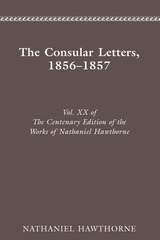 CENTENARY ED WORKS NATHANIEL HAWTHORNE: VOL. XX, THE CONSULAR LETTERS, 18561857
NATHANIEL HAWTHORNE
Ohio State University Press, 1988 "Because it represents the first scholarly effort to establish texts as close as possible to the intentions of the author, this Centenary Edition makes obsolete all previous editions, notorious for their textual corruption. An eminent staff . . . has analyzed and synthesized the evidence of all MSS and worthwhile printed editions. Each volume includes a well documented introduction concerning such matters as circumstances leading to composition and history of publication as well as textual notes on alterations in the MSS, editorial emendations, etc." --Choice
"The Centenary Edition, which has been producing weighty volumes of definitively edited texts of Hawthorne for a full generation, is now the sine qua non of Hawthorne scholarship. As an example of editorial care and research thoroughness it has been a model for the profession and as a physical object a model for publishers. In addition to the immensely important achievement of producing fully accurate texts of the romances, tales, and sketches, the Centenary editors have made available, for the very first time, all of the various Notebooks and letters. For the letters, especially, the wait has been long but the result is gratifying. Reading straight through the Centenary's six volumes of letters is a self-indulgent pleasure that brings us markedly closer to the man than we can get in any other way." --American Literature
Representing decades of work, this is the definitive edition of Hawthorne's works. Each volume includes comprehensive notes and explanatory material.
I: The Scarlet Letter $62.95 cloth 0-8142-0059-1
II: The House of the Seven Gables $69.95 cloth 0-8142-0060-5
III: The Blithedale Romance and Fanshawe $72.95 cloth 0-8142-0061-3
IV: The Marble Faun $83.95 cloth 0-8142-0062-1
V: Our Old Home $72.95 cloth 0-8142-0002-8
VI: True Stories from History and Biography $72.95 cloth 0-8142-0157-1
VII: A Wonder Book and Tanglewood Tales $72.95 cloth 0-8142-0158-X
VIII: The American Notebooks $98.95 cloth 0-8142-0159-8
IX: Twice-told Tales $83.95 cloth 0-8142-0202-0
X: Mosses from an Old Manse $83.95 cloth 0-8142-0203-9
XI: The Snow Image and Uncollected Tales $72.95 cloth 0-8142-0204-7
XII: The American Claimant Manuscripts $83.95 cloth 0-8142-0251-9
XIII: The Elixir of Life Manuscripts $98.95 cloth 0-8142-0252-7
XIV: The French and Italian Notebooks $98.95 cloth 0-8142-0256-X
XV: The Letters, 1813-1843 $98.95 cloth 0-8142-0363-9
XVI: The Letters, 1843-1853 $98.95 cloth 0-8142-0364-7
XVII: The Letters, 1853-1856 $83.95 cloth 0-8142-0365-5
XVIII: The Letters, 1857-1864 $98.95 cloth 0-8142-0383-3
XIX: The Consular Letters, 1853-1855 $83.95 cloth 0-8142-0384-1
XX: The Consular Letters, 1856-1857 $83.95 cloth 0-8142-0462-7
XXI: The English Notebooks, 1853-1856 $98.95 cloth 0-8142-0670-0
XXII: The English Notebooks, 1856-1860 $98.95 cloth 0-8142-0671-9
XXIII: Miscellaneous Prose and Verse $98.95 cloth 0-8142-0644-1
 CENTENARY ED WORKS NATHANIEL HAWTHORNE: VOL. XXI, THE ENGLISH NOTEBOOKS, 1853185
NATHANIEL HAWTHORNE
Ohio State University Press, 1997 "Because it represents the first scholarly effort to establish texts as close as possible to the intentions of the author, this Centenary Edition makes obsolete all previous editions, notorious for their textual corruption. An eminent staff . . . has analyzed and synthesized the evidence of all MSS and worthwhile printed editions. Each volume includes a well documented introduction concerning such matters as circumstances leading to composition and history of publication as well as textual notes on alterations in the MSS, editorial emendations, etc." --Choice
"The Centenary Edition, which has been producing weighty volumes of definitively edited texts of Hawthorne for a full generation, is now the sine qua non of Hawthorne scholarship. As an example of editorial care and research thoroughness it has been a model for the profession and as a physical object a model for publishers. In addition to the immensely important achievement of producing fully accurate texts of the romances, tales, and sketches, the Centenary editors have made available, for the very first time, all of the various Notebooks and letters. For the letters, especially, the wait has been long but the result is gratifying. Reading straight through the Centenary's six volumes of letters is a self-indulgent pleasure that brings us markedly closer to the man than we can get in any other way." --American Literature
Representing decades of work, this is the definitive edition of Hawthorne's works. Each volume includes comprehensive notes and explanatory material.
I: The Scarlet Letter $62.95 cloth 0-8142-0059-1
II: The House of the Seven Gables $69.95 cloth 0-8142-0060-5
III: The Blithedale Romance and Fanshawe $72.95 cloth 0-8142-0061-3
IV: The Marble Faun $83.95 cloth 0-8142-0062-1
V: Our Old Home $72.95 cloth 0-8142-0002-8
VI: True Stories from History and Biography $72.95 cloth 0-8142-0157-1
VII: A Wonder Book and Tanglewood Tales $72.95 cloth 0-8142-0158-X
VIII: The American Notebooks $98.95 cloth 0-8142-0159-8
IX: Twice-told Tales $83.95 cloth 0-8142-0202-0
X: Mosses from an Old Manse $83.95 cloth 0-8142-0203-9
XI: The Snow Image and Uncollected Tales $72.95 cloth 0-8142-0204-7
XII: The American Claimant Manuscripts $83.95 cloth 0-8142-0251-9
XIII: The Elixir of Life Manuscripts $98.95 cloth 0-8142-0252-7
XIV: The French and Italian Notebooks $98.95 cloth 0-8142-0256-X
XV: The Letters, 1813-1843 $98.95 cloth 0-8142-0363-9
XVI: The Letters, 1843-1853 $98.95 cloth 0-8142-0364-7
XVII: The Letters, 1853-1856 $83.95 cloth 0-8142-0365-5
XVIII: The Letters, 1857-1864 $98.95 cloth 0-8142-0383-3
XIX: The Consular Letters, 1853-1855 $83.95 cloth 0-8142-0384-1
XX: The Consular Letters, 1856-1857 $83.95 cloth 0-8142-0462-7
XXI: The English Notebooks, 1853-1856 $98.95 cloth 0-8142-0670-0
XXII: The English Notebooks, 1856-1860 $98.95 cloth 0-8142-0671-9
XXIII: Miscellaneous Prose and Verse $98.95 cloth 0-8142-0644-1
 CENTENARY ED WORKS NATHANIEL HAWTHORNE: VOL. XXII, THE ENGLISH NOTEBOOKS, 185618
NATHANIEL HAWTHORNE
Ohio State University Press, 1997 "Because it represents the first scholarly effort to establish texts as close as possible to the intentions of the author, this Centenary Edition makes obsolete all previous editions, notorious for their textual corruption. An eminent staff . . . has analyzed and synthesized the evidence of all MSS and worthwhile printed editions. Each volume includes a well documented introduction concerning such matters as circumstances leading to composition and history of publication as well as textual notes on alterations in the MSS, editorial emendations, etc." --Choice
"The Centenary Edition, which has been producing weighty volumes of definitively edited texts of Hawthorne for a full generation, is now the sine qua non of Hawthorne scholarship. As an example of editorial care and research thoroughness it has been a model for the profession and as a physical object a model for publishers. In addition to the immensely important achievement of producing fully accurate texts of the romances, tales, and sketches, the Centenary editors have made available, for the very first time, all of the various Notebooks and letters. For the letters, especially, the wait has been long but the result is gratifying. Reading straight through the Centenary's six volumes of letters is a self-indulgent pleasure that brings us markedly closer to the man than we can get in any other way." --American Literature
Representing decades of work, this is the definitive edition of Hawthorne's works. Each volume includes comprehensive notes and explanatory material.
I: The Scarlet Letter $62.95 cloth 0-8142-0059-1
II: The House of the Seven Gables $69.95 cloth 0-8142-0060-5
III: The Blithedale Romance and Fanshawe $72.95 cloth 0-8142-0061-3
IV: The Marble Faun $83.95 cloth 0-8142-0062-1
V: Our Old Home $72.95 cloth 0-8142-0002-8
VI: True Stories from History and Biography $72.95 cloth 0-8142-0157-1
VII: A Wonder Book and Tanglewood Tales $72.95 cloth 0-8142-0158-X
VIII: The American Notebooks $98.95 cloth 0-8142-0159-8
IX: Twice-told Tales $83.95 cloth 0-8142-0202-0
X: Mosses from an Old Manse $83.95 cloth 0-8142-0203-9
XI: The Snow Image and Uncollected Tales $72.95 cloth 0-8142-0204-7
XII: The American Claimant Manuscripts $83.95 cloth 0-8142-0251-9
XIII: The Elixir of Life Manuscripts $98.95 cloth 0-8142-0252-7
XIV: The French and Italian Notebooks $98.95 cloth 0-8142-0256-X
XV: The Letters, 1813-1843 $98.95 cloth 0-8142-0363-9
XVI: The Letters, 1843-1853 $98.95 cloth 0-8142-0364-7
XVII: The Letters, 1853-1856 $83.95 cloth 0-8142-0365-5
XVIII: The Letters, 1857-1864 $98.95 cloth 0-8142-0383-3
XIX: The Consular Letters, 1853-1855 $83.95 cloth 0-8142-0384-1
XX: The Consular Letters, 1856-1857 $83.95 cloth 0-8142-0462-7
XXI: The English Notebooks, 1853-1856 $98.95 cloth 0-8142-0670-0
XXII: The English Notebooks, 1856-1860 $98.95 cloth 0-8142-0671-9
XXIII: Miscellaneous Prose and Verse $98.95 cloth 0-8142-0644-1
 CENTENARY ED WORKS NATHANIEL: VOL. XII, THE AMERICAN CLAIMANT MANUSCRI
NATHANIEL HAWTHORNE
Ohio State University Press, 1977 "Because it represents the first scholarly effort to establish texts as close as possible to the intentions of the author, this Centenary Edition makes obsolete all previous editions, notorious for their textual corruption. An eminent staff . . . has analyzed and synthesized the evidence of all MSS and worthwhile printed editions. Each volume includes a well documented introduction concerning such matters as circumstances leading to composition and history of publication as well as textual notes on alterations in the MSS, editorial emendations, etc." --Choice
"The Centenary Edition, which has been producing weighty volumes of definitively edited texts of Hawthorne for a full generation, is now the sine qua non of Hawthorne scholarship. As an example of editorial care and research thoroughness it has been a model for the profession and as a physical object a model for publishers. In addition to the immensely important achievement of producing fully accurate texts of the romances, tales, and sketches, the Centenary editors have made available, for the very first time, all of the various Notebooks and letters. For the letters, especially, the wait has been long but the result is gratifying. Reading straight through the Centenary's six volumes of letters is a self-indulgent pleasure that brings us markedly closer to the man than we can get in any other way." --American Literature
Representing decades of work, this is the definitive edition of Hawthorne's works. Each volume includes comprehensive notes and explanatory material.
I: The Scarlet Letter $62.95 cloth 0-8142-0059-1
II: The House of the Seven Gables $69.95 cloth 0-8142-0060-5
III: The Blithedale Romance and Fanshawe $72.95 cloth 0-8142-0061-3
IV: The Marble Faun $83.95 cloth 0-8142-0062-1
V: Our Old Home $72.95 cloth 0-8142-0002-8
VI: True Stories from History and Biography $72.95 cloth 0-8142-0157-1
VII: A Wonder Book and Tanglewood Tales $72.95 cloth 0-8142-0158-X
VIII: The American Notebooks $98.95 cloth 0-8142-0159-8
IX: Twice-told Tales $83.95 cloth 0-8142-0202-0
X: Mosses from an Old Manse $83.95 cloth 0-8142-0203-9
XI: The Snow Image and Uncollected Tales $72.95 cloth 0-8142-0204-7
XII: The American Claimant Manuscripts $83.95 cloth 0-8142-0251-9
XIII: The Elixir of Life Manuscripts $98.95 cloth 0-8142-0252-7
XIV: The French and Italian Notebooks $98.95 cloth 0-8142-0256-X
XV: The Letters, 1813-1843 $98.95 cloth 0-8142-0363-9
XVI: The Letters, 1843-1853 $98.95 cloth 0-8142-0364-7
XVII: The Letters, 1853-1856 $83.95 cloth 0-8142-0365-5
XVIII: The Letters, 1857-1864 $98.95 cloth 0-8142-0383-3
XIX: The Consular Letters, 1853-1855 $83.95 cloth 0-8142-0384-1
XX: The Consular Letters, 1856-1857 $83.95 cloth 0-8142-0462-7
XXI: The English Notebooks, 1853-1856 $98.95 cloth 0-8142-0670-0
XXII: The English Notebooks, 1856-1860 $98.95 cloth 0-8142-0671-9
XXIII: Miscellaneous Prose and Verse $98.95 cloth 0-8142-0644-1
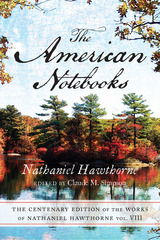 The Centenary Edition of the Works of Nathaniel Hawthorne: VOL. VIII, THE AMERICAN NOTEBOOKS
Nathaniel Hawthorne
Ohio State University Press, 1972 "Because it represents the first scholarly effort to establish texts as close as possible to the intentions of the author, this Centenary Edition makes obsolete all previous editions, notorious for their textual corruption. An eminent staff . . . has analyzed and synthesized the evidence of all MSS and worthwhile printed editions. Each volume includes a well documented introduction concerning such matters as circumstances leading to composition and history of publication as well as textual notes on alterations in the MSS, editorial emendations, etc." --Choice
"The Centenary Edition, which has been producing weighty volumes of definitively edited texts of Hawthorne for a full generation, is now the sine qua non of Hawthorne scholarship. As an example of editorial care and research thoroughness it has been a model for the profession and as a physical object a model for publishers. In addition to the immensely important achievement of producing fully accurate texts of the romances, tales, and sketches, the Centenary editors have made available, for the very first time, all of the various Notebooks and letters. For the letters, especially, the wait has been long but the result is gratifying. Reading straight through the Centenary's six volumes of letters is a self-indulgent pleasure that brings us markedly closer to the man than we can get in any other way." --American Literature
Representing decades of work, this is the definitive edition of Hawthorne's works. Each volume includes comprehensive notes and explanatory material.
I: The Scarlet Letter $62.95 cloth 0-8142-0059-1
II: The House of the Seven Gables $69.95 cloth 0-8142-0060-5
III: The Blithedale Romance and Fanshawe $72.95 cloth 0-8142-0061-3
IV: The Marble Faun $83.95 cloth 0-8142-0062-1
V: Our Old Home $72.95 cloth 0-8142-0002-8
VI: True Stories from History and Biography $72.95 cloth 0-8142-0157-1
VII: A Wonder Book and Tanglewood Tales $72.95 cloth 0-8142-0158-X
VIII: The American Notebooks $98.95 cloth 0-8142-0159-8
IX: Twice-told Tales $83.95 cloth 0-8142-0202-0
X: Mosses from an Old Manse $83.95 cloth 0-8142-0203-9
XI: The Snow Image and Uncollected Tales $72.95 cloth 0-8142-0204-7
XII: The American Claimant Manuscripts $83.95 cloth 0-8142-0251-9
XIII: The Elixir of Life Manuscripts $98.95 cloth 0-8142-0252-7
XIV: The French and Italian Notebooks $98.95 cloth 0-8142-0256-X
XV: The Letters, 1813-1843 $98.95 cloth 0-8142-0363-9
XVI: The Letters, 1843-1853 $98.95 cloth 0-8142-0364-7
XVII: The Letters, 1853-1856 $83.95 cloth 0-8142-0365-5
XVIII: The Letters, 1857-1864 $98.95 cloth 0-8142-0383-3
XIX: The Consular Letters, 1853-1855 $83.95 cloth 0-8142-0384-1
XX: The Consular Letters, 1856-1857 $83.95 cloth 0-8142-0462-7
XXI: The English Notebooks, 1853-1856 $98.95 cloth 0-8142-0670-0
XXII: The English Notebooks, 1856-1860 $98.95 cloth 0-8142-0671-9
XXIII: Miscellaneous Prose and Verse $98.95 cloth 0-8142-0644-1
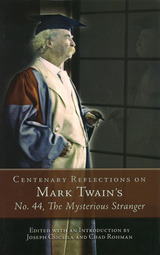 Centenary Reflections on Mark Twain's No. 44, The Mysterious Stranger
Edited with an introduction by Joseph Csicsila and Chad Rohman
University of Missouri Press, 2009 In this first book on No. 44 in thirty years, thirteen especially commissioned essays by some of today’s most accomplished Twain scholars cover an array of topics, from domesticity and transnationalism to race and religion, and reflect a variety of scholarly and theoretical approaches to the work. This far-reaching collection considers the status of No. 44 within Twain’s oeuvre as they offer cogent insights into such broad topics as cross-culturalism, pain and redemption, philosophical paradox, and comparative studies of the “Mysterious Stranger” manuscripts. All of these essays attest to the importance of this late work in Twain’s canon, whether considering how Twain’s efforts at truth-telling are premeditated and shaped by his own experiences, tracing the biblical and religious influences that resonate in No. 44, or exploring the text’s psychological dimensions. Several address its importance as a culminating work in which Twain’s seemingly disjointed story lines coalesce in meaningful, albeit not always satisfactory, ways. An afterword by Alan Gribben traces the critical history of the “Mysterious Stranger” manuscripts and the contributions of previous critics. A wide-ranging critical introduction and a comprehensive bibliography on the last century of scholarship bracket the contributions. Close inspection of this multidimensional novel shows how Twain evolved as a self-conscious thinker and humorist—and that he was a more conscious artist throughout his career than has been previously thought. Centenary Reflections deepens our understanding of one of Twain’s most misunderstood texts, confirming that the author of No. 44 was a pursuer of an elusive truth that was often as mysterious a stranger as Twain himself.
 Centenary Subjects: Race, Reason, and Rupture in the Americas
Shawn McDaniel
Vanderbilt University Press, 2021 Centenary Subjects examines the ideological debates and didactic exercises in subject formation during the centenary era of independence (the decade of the 1910s)—the peak of arielismo—and proposes a new reading of the arielista archive that brings into focus the racial anxieties, epistemological and spiritual fissures, and iconoclastic agendas that structure, and at times smother, the ethos of that era.
Arielismo takes its name from José Enrique Rodó’s foundational essay Ariel (1900), a wide‑ranging gospel dedicated to Latin American youth that incited a cultural awakening under the banner of the spirit throughout the Americas at an ominous juncture—when the US co-opted the Cuban War of Independence in 1898, effectively rebranding it as the Spanish‑American War. Rodó’s optimistic message of transcendence as an antidote to the encroaching empire quickly became one of the most pervasive and malleable paradigms of regional empowerment, reverberating throughout a range of Latin Americanist projects in the twentieth and twenty‑first centuries.
Centenary Subjects recovers a series of important but understudied essays penned by arielista writers, radicals, pedagogues, prophets, and politicians of diverse stripes in the early twentieth century, and analyzes how, under the auspices of the arielista platform, young people emerged as historical subjects invested with unprecedented cultural capital, increasing political power, and an urgent mandate to break with the past and transform the sociopolitical and cultural landscape of their countries. But their respective designs harbor racial, epistemological, aesthetic, and anarchistic strains that bring into sharper relief the conflicting signals that the centenary subject had to parse with respect to race, reason, and rupture.
Centennial Essays for Pushkin
Samuel H. Cross
Harvard University Press CONTENTS: Pushkin, "Monument," translated by Robert Hillyer; A Biographical Study of Pushkin, by Ernest J. Simmons; Pushkin and the Decembrists, by George V. Vernadsky; Pushkin and Mickiewicz, by Arthur P. Coleman; Pushkin's Sense of Measure, by Alexander Kaun; Pushkin's Prose Writings, by George Z. Patrick; The Folk Tales of Pushkin, by Victor de Gerard; "Eugene Onegin" Read Today, by Dorothea Prall Radin; Pushkin in World Literature, by George Rapall Noyes; Pushkin as an Historian, by Michael Karpovich; Pushkin in Soviet Criticism, by Samuel H. Cross; Lermontov, "The Poet's Death," translated by Robert Hillyer.
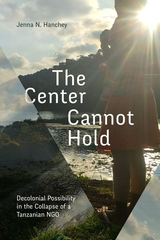 The Center Cannot Hold: Decolonial Possibility in the Collapse of a Tanzanian NGO
Jenna N. Hanchey
Duke University Press, 2023 In The Center Cannot Hold Jenna N. Hanchey examines the decolonial potential emerging from processes of ruination and collapse. Drawing on ethnographic fieldwork in rural Tanzania at an internationally funded NGO as it underwent dissolution, Hanchey traces the conflicts between local leadership and Western paternalism as well as the unstable subjectivity of Western volunteers—including the author—who are unable to withstand the contradictions of playing the dual roles of decolonializing ally and white savior. She argues that Western institutional and mental structures must be allowed to fall apart to make possible the emergence of decolonial justice. Hanchey shows how, through ruination, privileged subjects come to critical awareness through repeated encounters with their own complicity, providing an opportunity to delink from and oppose epistemologies of coloniality. After things fall apart, Hanchey posits, the creation of decolonial futures depends on the labor required to imagine impossible futures into being.
 The Center Cannot Hold: The 1960 Presidential Election and the Rise of Modern Conservatism
Laura Jane Gifford
Northern Illinois University Press, 2009
Most historians agree that, by the end of the 1960s, the conservative branch of the Republican Party had largely taken control of party direction. The “Reagan Revolution” of 1980 secured the GOP for conservatives, and while the events of the 2008 election may prompt considerable soulsearching, the party of Lincoln has maintained an undeniably conservative ideological orientation for almost 30 years. Too often, scholars have regarded the process of conservative transformation as a foregone conclusion. Historian Laura Gifford offers an innovative examination of the 1960 presidential election that restores an essential sense of contingency to the process.
In the years prior to 1960, the GOP could have taken its agenda from a number of sources and pursued a number of directions. By the end of the 1960 campaign, however, Republican liberals had lost the battle over the party’s future, and thereafter conservatives would take the lead in formulating GOP policy. The initial establishment of control over the party’s future direction marked the first step toward the culmination of modern conservatism in Reagan’s election. While liberals and conservatives were equally optimistic about their futures in the Republican Party in January 1960, by December a fundamental shift in power had taken place.
The Center Cannot Hold provides an analysis of interactions between three key party leaders—liberal Nelson Rockefeller, conservative Barry Goldwater, and moderate Richard Nixon—and six key constituencies: liberals, African Americans, conservative intellectuals, youth, Southerners, and ethnic Americans. Gifford’s study of these interactions demonstrates that conservatives successfully used grassroots organizations to develop networks that could push the Republican Party in a rightward direction. Furthermore, conservative leaders responded to their supporters more effectively than did liberal and moderate leaders. Ultimately, individuals and groups possessed the means to alter the shape of the American party system.
 Center: Ideas and Institutions
Edited by Liah Greenfeld and Michel Martin
University of Chicago Press, 1988 There are several concepts within the social sciences that refer to the fundamental realities on which the various disciplines focus their attention. The concept of the "center," as defined by Edward Shils, has such a status in sociology, for it deals with and attempts to provide an answer to the central question of the discipline—the question of the constitution of society.
"Center" is a commonly used term with a variety of meanings. According to editors Liah Greenfeld and Michel Martin, "center" carries a twofold meaning when used as a concept. In its first sense, it is a synonym for "central value system," referring to irreducible values and beliefs that establish the identity of individuals and bind them into a common universe. In its second sense, "center" refers to "central institutional system," the authoritative institutions and persons who often express or embody the central value system. Both meanings imply a corresponding idea of "periphery," referring both to the elements of society that need to be integrated and to institutions and persons who lack authority.
The original essays compiled in this volume examine and apply the concept of the center in different contexts. The contributors come from a broad range of disciplines—classics, religion, philosophy, history, literary criticism, anthropology, political science, and sociology—which serves to underscore the far-reaching significance of the Shilsean theory of society. The interrelated subsets of the "center-periphery" theme addressed here include: symbolic systems, intellectuals, the expansion of the center into the periphery, parallel concepts in the work of other scholars besides Shils, and the paths of research inspired by these concepts. The volume features an introspective essay by Shils himself, in which he reexamines his central ideas in the light of new experiences and the ideas of others, some of them contained in this volume.
By drawing together such diverse scholars around a unified idea, this collection achieves a cohesion that makes it an exciting contribution to the comparative analysis of social and cultural systems. A collective effort in social theory, Center: Ideas and Institutions is a testimony to the breadth and complexity of one of man's ideas.
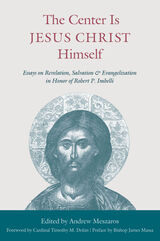 The Center is Jesus Christ Himself: Essays on Revelation, Salvation, and Evangelization in Honor of Robert P. Imbelli
Andrew Meszaros
Catholic University of America Press, 2021 The polarization in the Church today can be traced back to a more fundamental crisis in theology, one which has failed to connect our mundane experiences and the mysteries of the Christian faith with the person of Jesus Christ. Ecclesial discourse on the so-called ‘hot- button issues’ of the day too often take place without considering the foundation and goal of the Church. And this is unfortunately due to a similar tendency in the academic theology that informs that ecclesial discourse. In short, much of post-conciliar Catholic theology is adrift, floating aimlessly away from the center of the Christian faith, who is Christ.
The Center is Jesus Christ Himself is a collection of essays which anchor theological reflection in Jesus Christ. These diverse essays share a unified focal point, but engage with a variety of theological subdisciplines (e.g., dogmatic, moral, Biblical, etc.), areas (e.g., Christology, Pneumatology, missiology, etc.), and periods (e.g., patristic, medieval, and modern). Given the different combinations of sub-disciplines, areas, and periods, theology is susceptible to fragmentation when it is not held together by some principle of unity. A theology in which the person of Jesus Christ serves as that principle of unity is a Christocentric theology. Together, the essays illustrate not only what Christocentric theology looks like, but also what the consequences are when Christ is dislodged from the center, whether by a conspicuous silence on, or by a relativization of, his unique salvific mission.
The volume is published in honor of Emeritus Professor of Systematic Theology at Boston College, Rev. Dr. Robert P. Imbelli, who dedicated his teaching and writing to bringing Christ back to the center of Catholic theological discourse.
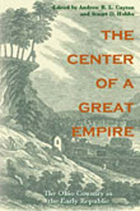 The Center of a Great Empire: The Ohio Country in the Early Republic
Andrew R. L. Cayton
Ohio University Press, 2005 “The people who lived in what became the seventeenth state in the American Union in 1803 were not only at the center of a great empire, they were at the center of the most important historical developments in the revolutionary Atlantic World.”
—From the introduction Nowhere did the revolutions in politics, commerce, and society in the late eighteenth and early nineteenth centuries occur more quickly or more thoroughly than in the Ohio country. A forested borderland dominated by American Indians in 1780, Ohio was a landscape of farms and towns inhabited by people from all over the world by 1830. The Center of a Great Empire: The Ohio Country in the Early Republic chronicles this dramatic and all-encompassing change. Andrew R. L. Cayton and Stuart D. Hobbs have assembled an impressive collection of articles by established and rising scholars. They address the conquest of Native Americans, the emergence of a democratic political culture, the origins of capitalism, the formation of public culture, the growth of evangelical Protestantism, the ambiguous status of African Americans, and social life in a place that most regarded as the cutting edge of human history. For The Center of a Great Empire, distinguished historians of the American nation in its first decades question conventional wisdom. They emphasize contingency rather than inevitability and contention rather than progress. Downplaying the frontier character of Ohio, they offer new interpretations and open new paths of inquiry through investigations of race, education, politics, religion, family, commerce, colonialism, and conquest. As it underscores key themes in the history of the United States, The Center of a Great Empire pursues issues that have fascinated people for two centuries.
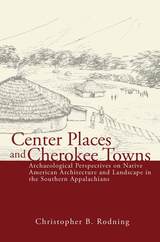 Center Places and Cherokee Towns: Archaeological Perspectives on Native American Architecture and Landscape in the Southern Appalachians
Christopher B. Rodning
University of Alabama Press, 2015 Examines how architecture and other aspects of the built environment, such as hearths, burials, and earthen mounds, formed center places within the Cherokee cultural landscape
In Center Places and Cherokee Towns, Christopher B. Rodning opens a panoramic vista onto protohistoric Cherokee culture. He posits that Cherokee households and towns were anchored within their cultural and natural landscapes by built features that acted as “center places.”
Rodning investigates the period from just before the first Spanish contact with sixteenth-century Native American chiefdoms in La Florida through the development of formal trade relations between Native American societies and English and French colonial provinces in the American South during the late 1600s and 1700s. Rodning focuses particularly on the Coweeta Creek archaeological site in the upper Little Tennessee Valley in southwestern North Carolina and describes the ways in which elements of the built environment were manifestations of Cherokee senses of place.
Drawing on archaeological data, delving into primary documentary sources dating from the eighteenth century, and considering Cherokee myths and legends remembered and recorded during the nineteenth century, Rodning shows how the arrangement of public structures and household dwellings in Cherokee towns both shaped and were shaped by Cherokee culture. Center places at different scales served as points of attachment between Cherokee individuals and their communities as well as between their present and past. Rodning explores the ways in which Cherokee architecture and the built environment were sources of cultural stability in the aftermath of European contact, and how the course of European contact altered the landscape of Cherokee towns in the long run.
In this multi-faceted consideration of archaeology, ethnohistory, and recorded oral tradition, Rodning adeptly demonstrates the distinct ways that Cherokee identity was constructed through architecture and other material forms. Center Places and Cherokee Towns will have a broad appeal to students and scholars of southeastern archaeology, anthropology, Native American studies, prehistoric and protohistoric Cherokee culture, landscape archaeology, and ethnohistory.
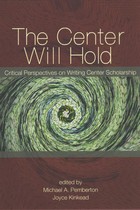 Center Will Hold
edited by Michael A. Pemberton & Joyce Kinkead
Utah State University Press, 2003 In The Center Will Hold, Pemberton and Kinkead have compiled a major volume of essays on the signal issues of scholarship that have established the writing center field and that the field must successfully address in the coming decade. The new century opens with new institutional, demographic, and financial challenges, and writing centers, in order to hold and extend their contribution to research, teaching, and service, must continuously engage those challenges. Appropriately, the editors offer the work of Muriel Harris as a key pivot point in the emergence of writing centers as sites of pedagogy and research. The volume develops themes that Harris first brought to the field, and contributors here offer explicit recognition of the role that Harris has played in the development of writing center theory and practice. But they also use her work as a springboard from which to provide reflective, descriptive, and predictive looks at the field.
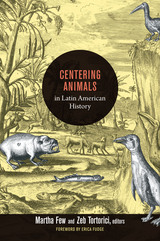 Centering Animals in Latin American History
Martha Few and Zeb Tortorici, eds.
Duke University Press, 2013 Centering Animals in Latin American History writes animals back into the history of colonial and postcolonial Latin America. This collection reveals how interactions between humans and other animals have significantly shaped narratives of Latin American histories and cultures. The contributors work through the methodological implications of centering animals within historical narratives, seeking to include nonhuman animals as social actors in the histories of Mexico, Guatemala, the Dominican Republic, Puerto Rico, Cuba, Chile, Brazil, Peru, and Argentina. The essays discuss topics ranging from canine baptisms, weddings, and funerals in Bourbon Mexico to imported monkeys used in medical experimentation in Puerto Rico. Some contributors examine the role of animals in colonization efforts. Others explore the relationship between animals, medicine, and health. Finally, essays on the postcolonial period focus on the politics of hunting, the commodification of animals and animal parts, the protection of animals and the environment, and political symbolism. Contributors. Neel Ahuja, Lauren Derby, Regina Horta Duarte, Martha Few, Erica Fudge, León García Garagarza, Reinaldo Funes Monzote, Heather L. McCrea, John Soluri, Zeb Tortorici, Adam Warren, Neil L. Whitehead
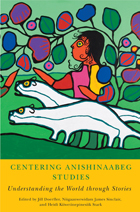 Centering Anishinaabeg Studies: Understanding the World through Stories
Jill Doerfler
Michigan State University Press, 2013 For the Anishinaabeg people, who span a vast geographic region from the Great Lakes to the Plains and beyond, stories are vessels of knowledge. They are bagijiganan, offerings of the possibilities within Anishinaabeg life. Existing along a broad narrative spectrum, from aadizookaanag (traditional or sacred narratives) to dibaajimowinan (histories and news)—as well as everything in between—storytelling is one of the central practices and methods of individual and community existence. Stories create and understand, survive and endure, revitalize and persist. They honor the past, recognize the present, and provide visions of the future. In remembering, (re)making, and (re)writing stories, Anishinaabeg storytellers have forged a well-traveled path of agency, resistance, and resurgence. Respecting this tradition, this groundbreaking anthology features twenty-four contributors who utilize creative and critical approaches to propose that this people’s stories carry dynamic answers to questions posed within Anishinaabeg communities, nations, and the world at large. Examining a range of stories and storytellers across time and space, each contributor explores how narratives form a cultural, political, and historical foundation for Anishinaabeg Studies. Written by Anishinaabeg and non-Anishinaabeg scholars, storytellers, and activists, these essays draw upon the power of cultural expression to illustrate active and ongoing senses of Anishinaabeg life. They are new and dynamic bagijiganan, revealing a viable and sustainable center for Anishinaabeg Studies, what it has been, what it is, what it can be.
Centerville
Karen Osborn
West Virginia University Press, 2012 Karen Osborn is the author of three previous novels, Patchwork (a New York Times Notable Book of the Year), Between Earth and Sky, and The River Road. She lives in Amherst, Massachusetts with her husband and teaches fiction writing at Mt. Holyoke College and Fairfield University. While growing up in the Midwest, she witnessed a bombing and the resulting conflagration in her small town.
Learn more about Karen Osborn at www.karenosborn.net.
Central Air: Poems
Mike Puican
Northwestern University Press, 2020 Set in the urban Chicago landscape, Central Air explores the human challenge of living with strong desires, limited knowledge, and no saving direction. The voices in this mix of elegies and soft litanies negotiate lives within the strangeness and unpredictability of each moment. In every case, language is a swift prayer, ode, and lyric. Chicago is an intensely experienced, blue-collar homeplace where injustice is a given. The poems are stern, compressed, and unsentimental. But they are also empathic to human shortcomings and doubts, scored in unobtrusive consistency in both voice and language.
Puican’s focus on the city, its people and underbellied spaces, pays homage in the tradition of the great Chicago masters: Carl Sandburg, Gwendolyn Brooks, and Campbell McGrath. This contemporary Chicago son finds his own place with lyrical integrity.
Central Air: Poems
George Bilgere
University of Pittsburgh Press, 2022 With humor and compassion, George Bilgere continues his explorations of the human predicament. The settings of these poems range from Cleveland to Berlin, from childhood to old age. Bilgere’s subject, in the largest sense, is America, in all its craziness, its haunted past, its imperiled future. But what really centers this book is the English language itself, which these poems endeavor to renew, reinvent, and reinvigorate.
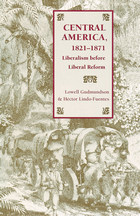 Central America, 1821-1871: Liberalism before Liberal Reform
Lowell Gudmundson
University of Alabama Press, 1995 Two interrelated essays dealing with the economic, social, and political changes that took place in Central America
Central America and its ill-fated federation (1824-1839) are often viewed as the archetype of the “anarchy” of early independent Spanish America. This book consists of two interralted essays dealing with the economic, social, and political changes that took place in Central America, changes that let to both Liberal regime consolidation and export agricultural development after the middle of the last century. The authors provide a challenging reinterpretation of Central American history and the most detailed analysis available in English of this most heterogeneous and obscure of societies. It avoids the dichotomous (Costa Rica versus the rest of Central America) and the centralist (Guatemala as the standard or model) treatments dominant in the existing literature and is required reading for anyone with an interest in 19th century Latin America.
Central America and the Treaty of Versailles
Michael Streeter
Haus Publishing, 2010 They were in the United States' backyard, and in some cases under her direct protection. So in many ways it was little surprise when Cuba, Haiti, Nicaragua, Guatemala, Panama and Honduras joined the war on the Allied side in 1917 and 1918. Their involvement in the war was minimal, indeed scarcely noticeable, but it was enough. It earned these small relatively powerless nations—in Haiti's case barely a functioning state—an invitation to sit alongside the Great Powers at the Paris Peace Conference of 1919 and sign the Treaty of Versailles.
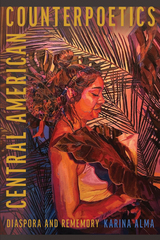 Central American Counterpoetics: Diaspora and Rememory
Karina Alma
University of Arizona Press, 2024 Connecting past and present, Central American Counterpoetics proposes the concepts of rememory and counterpoetics as decolonial tools for studying the art, popular culture, literature music, and healing practices of Central America and the diaspora in the United States.
Author Karina Alma offers a systemic method and artistic mode for unpacking social and political memory formation that resists dominant histories. Central American Counterpoetics responds to political repression through acts of creativity that prioritize the well-being of anticolonial communities. Building on Toni Morrison’s theory of rememory, the volume examines the concept as an embodied experience of a sensory place and time lived in the here and now. By employing primary sources of image and word, interviews of creatives, and a critical self-reflection as a Salvadoran immigrant woman in academia, Alma’s research breaks ground in subject matter and methods by considering cultural and historical ties across countries, regions, and traditions. The diverse creatives included explore critical perspectives on topics such as immigration, forced assimilation, maternal love, gender violence, community arts, and decolonization.
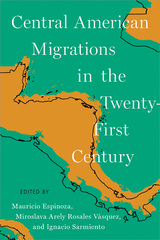 Central American Migrations in the Twenty-First Century
Edited by Mauricio Espinoza, Miroslava Arely Rosales Vásquez, and Ignacio Sarmiento
University of Arizona Press, 2023 The reality of Central American migrations is broad, diverse, multidirectional, and uncertain. It also offers hope, resistance, affection, solidarity, and a sense of community for a region that has one of the highest rates of human displacement in the world.
Central American Migrations in the Twenty-First Century tackles head-on the way Central America has been portrayed as a region profoundly marked by the migration of its people. Through an intersectional approach, this volume demonstrates how the migration experience is complex and affected by gender, age, language, ethnicity, social class, migratory status, and other variables. Contributors carefully examine a broad range of topics, including forced migration, deportation and outsourcing, intraregional displacements, the role of social media, and the representations of human mobility in performance, film, and literature. The volume establishes a productive dialogue between humanities and social sciences scholars, and it paves the way for fruitful future discussions on the region’s complex migratory processes.
Contributors
Guillermo Acuña
Andrew Bentley
Fiore Bran-Aragón
Tiffanie Clark
Mauricio Espinoza
Hilary Goodfriend
Leda Carolina Lozier
Judith Martínez
Alicia V. Nuñez
Miroslava Arely Rosales Vásquez
Manuel Sánchez Cabrera
Ignacio Sarmiento
Gracia Silva
Carolina Simbaña González
María Victoria Véliz
Central American Recovery and Development
William L. Ascher and Ann Hubbard, eds.
Duke University Press, 1989 The International Commission for Central American Recovery and Development was created in 1987 to analyze development in the region and to make recommendations to the region’s governments and to the international community. The essays in this volume were written by experts in Central American development, economics, politics, and administration who were asked by the commission to synthesize existing knowledge on Central America’s prospects for aid, trade, and institutional reform, and to propose creative approaches to the problems facing the region. The Center for International Development Research at Duke University was chosen to perform the editorial and support tasks for the commission.
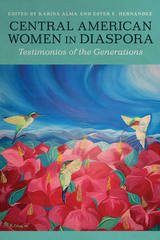 Central American Women in Diaspora: Testimonios of the Generations
Edited by Karina Alma and Ester E. Hernández
University of Arizona Press, 2026 This collection centers Central American women’s voices within the growing narrative of the Central American diaspora. It provides a tapestry of testimonios—from grandmothers, mothers, daughters, and sisters—who explore what it means to be Central American women in the United States.
Through the practice of testimonio, contributors create intergenerational dialogues between mothers and daughters, engage with Indigenous oral traditions, and reflect on the violent histories of war in Guatemala, El Salvador, Honduras, and Nicaragua. The volume is organized around five themes: political histories, migration, gender and sexuality, navigating institutions, and healing. Within each theme contributors tackle a range of issues, including Central American political histories, healing, grief, Indigenous knowledge, memory, trauma, post-traumatic growth, organizing, creativity, and agency.
This anthology spans genres such as poetry, essay, and visual art to present diverse perspectives, including Indigenous, Afro-Indigenous, queer, and working-class voices. An intervention that centers gendered experiences and challenges oppressive structures, this volume celebrates the solidarity, cultural memory, and healing found within transnational ties.
Contributors
Leisy J. Abrego
Margoth Abrego
Bella
Juanita Cabrera
Jennifer A. Cárcamo
Sandra Castro
Karla Cativo
Kency Cornejo
Gabriela Corona Valencia
Jessica Delgado
Carolina Rivera Escamilla
Rafael Escamilla
Mildred Fuentes-Chung
Diana Gamez
Joanna Beltrán Girón
Ruth Girón
Victoria Gonzalez-Rivera
Claudia D. Hernández
Jessica Hernandez
Leticia Hernández-Linares
Leigh-Anna Hidalgo
Andrea Nikté Juarez Mendoza
Amanda Macal
Carla Macal
Patricia Veliz Macal
Kiara Aileen Machado
Beatriz Maldonado
Jacqueline Munguía
Johanna Perez
Rossana Pérez
Claudia A. Portillo
Suyapa Portillo Villeda
Nalya Rodriguez
Mélida Turcios Lima
Andrea Zelaya
Central Asia: Contexts for Understanding
David Montgomery
University of Pittsburgh Press, 2021 Honorable Mention, 2023 CESS Outreach Award
Central Asia is a diverse and complex region of the world often characterized in the West as being difficult to access. Central Asia: Contexts for Understanding offers the most comprehensive introduction to the region available. Combining thematic chapters with case studies, readers will learn to appreciate the interconnected aspects of life in Central Asia. These wide-ranging, easy-to-understand contributions from some of the leading scholars in the field provide the context needed to understand Central Asia and presents a launching-off point for further research.
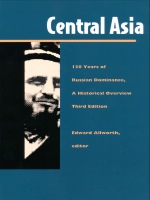 Central Asia: One Hundred Thirty Years of Russian Dominance, A Historical Overview
Edward A. Allworth, ed.
Duke University Press, 1994 For centuries, Central Asia has been a leading civilization, an Islamic heartland, and a geographical link between West and East. After a long traditional history, it is now in a state of change. With the breakup of the Soviet Union in 1991, five newborn Central Asian states have emerged in place of the former Soviet Central Asia and Afghanistan. Central Asia provides the most comprehensive survey of the history of the impact of Russian rule upon the political, economic, social, intellectual, and cultural life of this diverse region. Together, these essays convey a sense of the region’s community as well as the divisive policies that have affected it for so long.
Now in its third edition (it was first published in 1967 and revised in 1989), this new edition of Central Asia has been updated to include a new preface, a revised and updated bibliography, and a final chapter that brings the book up to 1994 in considering the crucial problems that stem from a deprivation of sovereign, indigenous leadership over the past 130 years. This volume provides a broad and essential background for understanding what has led up to the late twentieth-century configuration of Central Asia.
 The Central Asian Arabs of Afghanistan: Pastoral Nomadism in Transition
By Thomas J. Barfield
University of Texas Press, 1981 The Soviet invasion of Afghanistan in 1979 focused international attention on this country for the first time in nearly a century. The need for reliable information has only become been greater. Because of their traditional xenophobia toward the West, successive Afghan governments have restricted the number of scholars permitted to undertake extensive fieldwork. For this reason Thomas Barfield's study of the Central Asian Arabs of Afghanistan is a welcome addition to the literature, a literature which is not likely to grow in the coming years as war, domestic unrest and restrictive travel policies continue to make the research environment in Afghanistan unfavorable. The Central Asian Arabs are a little-known people of northeastern Afghanistan. This book is an account of the changes that have taken place in their way of life over the twentieth century as they switched from a form of subsistence pastoralism to a cash economy. Barfield's research constitutes a substantial revision of the standard hypothesis on the economic and social status of nomadic pastoralists, as originally posited by Fredrik Barth. One of Barfield's main purposes is to provide a case study that illustrates the wide-ranging complexity of pastoral nomadism, its integration into a regional economy, and how structural changes have occurred within the pastoral economy itself.
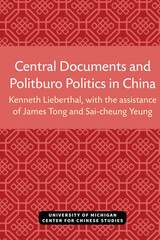 Central Documents and Politburo Politics in China
Kenneth Lieberthal, with the assistance of James Tong and Sai-cheung Yeung
University of Michigan Press, 1978 Virtually every analysis of Chinese politics views the Politburo as the nerve center of the system, but questions abound as to how this center governs itself and how it interacts with the system around it. Specifically, how much consultation occurs during the drafting of major Politburo documents, and who is brought into this process? How is information channeled up to this body, and what are the rules that govern the access of the Politburo members themselves to data generated by the bureaucracies? How are the political strategies of individual leaders and political factions attuned to this system of information channeling? What types of decisions are reached by the Politburo? To whom are they communicated? How rigidly must they be followed? How institutionalized is this entire decision making system, and has it become more—or less—institutionalized over the years? How has the factional legacy of the Cultural Revolution affected its mode of operations? Indeed, in the wake of the Cultural Revolution, how much in control of the system has the Politburo itself been? Central Documents in Politburo Politics in China seeks to better understand these questions by analyzing a particular stream of largely bureaucratic communications in the Chinese system: the so-called “Central Documents” (CDs). This is a series of documents through which the top Party leadership directly communicates with the rest of the political system. [1]
The Central Intelligence Agency: History and Documents
William M. Leary
University of Alabama Press, 1984 Provides for the first time a complete and dispassionate history of the most discussed and least known agency in the history of the American Republic
In late 1974 the U.S. Senate Select Committee on the CIA, headed by Frank Church of Idaho, began collecting documents and materials to buttress the committee hearings on the CIA’s role and activities that were to begin in the fall of 1975. Among the materials prepared for the Church Committee is History of the Central Intelligence Agency, which was written by committee staff member Anne Karalekas.
This book reproduces the History, with an introduction by Leary that establishes the historical framework for the Church Committee hearings, and also includes ten relevant documents covering events from 1944 to 1981.
 Central Pain: A Neurosurgical Survey
Valentino Cassinari and Carlo A. Pagni
Harvard University Press The problem of central pain—the phenomenon that can arise from a lesion of the central nervous system—has gradually become a subject of deeper and more systematic investigation. Close observation of examples of central pain, combined with an increased knowledge of its conduction, transmission, and conscious integration, now allow the whole topic to be approached from a much broader point of view. In their reconstruction of the entire problem of central pain, the authors present a valuable synthesis of the widely scattered literature on the subject. They bring together and appraise almost all the case studies that have been previously published and include some new case material in the appendix. Original synthetic diagrams illustrate the anatomical and functional substrate of pain conduction. The authors also present problems of clinical significance from their own experience: problems which prompted them to write this study in order to provide practical information immediately useful to all who must deal with this specialized treatment situation.
Central Peripheries: Nationhood in Central Asia
Marlene Laruelle
University College London, 2021 A comprehensive study of nation-building in post-Soviet Central Asia.
Committed to internationalism, Kazakhstan and other central Asian states nevertheless embrace classically nationalist conceptions of the nation-state. Their unabashed celebration of borders and citizenship challenges Western views of nationalism as a dying ideology transcended by cosmopolitanism. Drawing on twenty years of fieldwork, Central Peripheries reveals the origin of central Asian national consciousness in imaginary and ritualized efforts to grapple with the Soviet past.
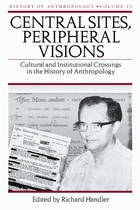 Central Sites, Peripheral Visions: Cultural and Institutional Crossings in the History of Anthropology
Edited by Richard Handler
University of Wisconsin Press, 2006 The terms "center" and "periphery" are particularly relevant to anthropologists, since traditionally they look outward from institutional "centers"-universities, museums, government bureaus-to learn about people on the "peripheries." Yet anthropology itself, as compared with economics, politics, or history, occupies a space somewhat on the margins of academe. Still, anthropologists, who control esoteric knowledge about the vast range of human variation, often find themselves in a theoretically central position, able to critique the "universal" truths promoted by other disciplines.
Central Sites, Peripheral Visions presents five case studies that explore the dilemmas, moral as well as political, that emerge out of this unique position. From David Koester's analysis of how ethnographic descriptions of Iceland marginalized that country's population, to Kath Weston's account of an offshore penal colony where officials mixed prison work with ethnographic pursuits; from Brad Evans's reflections on the "bohemianism" of both the Harlem vogue and American anthropology, to Arthur J. Ray's study of anthropologists who serve as expert witnesses in legal cases, the essays in the eleventh volume of the History of Anthropology Series reflect on anthropology's always problematic status as centrally peripheral, or peripherally central.
Finally, George W. Stocking, Jr., in a contribution that is almost a book in its own right, traces the professional trajectory of American anthropologist Robert Gelston Armstrong, who was unceremoniously expelled from his place of privilege because of his communist sympathies in the 1950s. By taking up Armstrong's unfinished business decades later, Stocking engages in an extended meditation on the relationship between center and periphery and offers "a kind of posthumous reparation," a page in the history of the discipline for a distant colleague who might otherwise have remained in the footnotes.
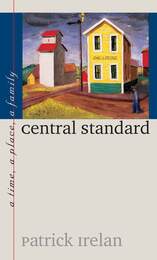 Central Standard: A Time, a Place, a Family
Patrick Irelan
University of Iowa Press, 2002 Not so long ago, the Rock Island Railroad was a household name, the Great Depression was a recent memory, and family farms dotted the landscape. Today, the great railroads have nearly disappeared, the Depression is a chapter in history books, and family farms are hard to come by. Yet this time is not forgotten. In Central Standard: A Time, a Place, a Family, Patrick Irelan vividly recaptures a remarkable era in midwestern history in twenty-four beautifully crafted and often witty essays. Beginning with his parents’ marriage in 1932 and continuing into the present, Irelan relates the many wonderful stories and experiences of his Davis County, Iowa, family. In “Country Living,” he describes his parents’ disheartening life as farmers during the worst years of the Depression. “The CB&Q” then relates the happiest years of his family’s life when his parents lived and worked in the Burlington Railroad depots of rural Nebraska. Irelan’s tales of hard times and harder work, family meals and talkative relatives, depots and farmsteads paint a brilliant yet deceptively simple portrait of one rural, working-class family. At its heart, Central Standard carries a greater message: it reminds us of the enduring strength of the American family.
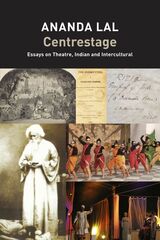 Centrestage: Essays on Theatre, Indian and Intercultural
Ananda Lal
Seagull Books, 2026 An authoritative perspective on the evolution and politics of theater performance in and beyond India.
In Centrestage, theater scholar Ananda Lal presents a compelling collection of essays encompassing over thirty years of research, reflection, and firsthand engagement with performance. From the emergence of Indian drama in English in the mid-nineteenth century to the diverse and sometimes contentious plays of the twenty-first century, Lal explores a two-hundred-year trajectory of Indian and intercultural theater with clarity and insight. The first part of the volume examines Indian theater history, proceeding from the colonial era to the contemporary scene in Kolkata and current theater pedagogy in India. The second part delves into the provocative world of intercultural theater, interrogating global academic representations of Indian performance and the work of such celebrated directors as Peter Brook and Tim Supple.
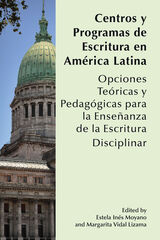 Centros y Programas de Escritura en América Latina: Opciones teóricas y pedagógicas para la enseñanza de la escritura disciplinar
Estela Inés Moyano
University Press of Colorado, 2023 Emerging from more than two decades of work in Latin America, this edited collection explores the implementation of reading and writing programs and centers in Central and South America. Reflecting the multiplicity of theories and gazes that underlies research and practice in teaching and learning to read and write in academic contexts, the contributors to this volume consider how these theoretical and methodological alternatives have contributed to the design and implementation of teaching and learning strategies that address the needs of students, faculty, and institutions while also working with (and around) the resources available in each institutional setting. Centros y Programas de Escritura en América Latina offers insights for those concerned with contributing to students’ education to improve their academic reading and writing, and, ultimately, to a more equitable university experience for all.
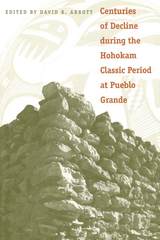 Centuries of Decline during the Hohokam Classic Period at Pueblo Grande
Edited by David R. Abbott
University of Arizona Press, 2003 In the prehispanic Southwest, Pueblo Grande was the site of the largest platform mound in the Phoenix basin and the most politically prominent village in the region. It has long been held to represent the apex of Hohokam culture that designates the Classic period.
New data from major excavations in Phoenix, however, suggest that little was "classic" about the Classic period at Pueblo Grande. These findings challenge views of Hohokam society that prevailed for most of the twentieth century, suggesting that for Pueblo Grande it was a time of decline rather than prosperity, a time marked by overpopulation, environmental degradation, resource shortage, poor health, and social disintegration. During this period, the Hohokam in the lower Salt River Valley began a precipitous slide toward the eventual abandonment of a homeland that they had occupied for more than one thousand years.
This volume is a long-awaited summary of one of the most important data-recovery projects in Southwest archaeology, synthesizing thousands of pages of data and text published in seven volumes of contract reports. The authors—all leading authorities in Hohokam archaeology who played primary roles in this revolution of understanding—here craft a compelling argument for the eventual collapse of Hohokam society in the late fourteenth century as seen from one of the largest and seemingly most influential irrigation communities along the lower Salt River.
Drawing on extremely large and well-preserved collections, the book reveals startling evidence of a society in decline as reflected in catchment analysis, archaeofaunal assemblage composition, skeletal studies, burial assemblages, artifact exchange, and ceramic production. The volume also includes a valuable new summary of the archival reconstruction of the architectural sequence for the Pueblo Grande platform mound.
With its wealth of data, interpretation, and synthesis, Centuries of Decline represents a milestone in our understanding of Hohokam culture. It is a key reference for Southwest archaeologists who seek to understand the Hohokam collapse and a benchmark for anyone interested in the prehistory of Arizona.
 A Century of Brazilian Documentary Film: From Nationalism to Protest
Darlene J. Sadlier
University of Texas Press, 2022 Since the late nineteenth century, Brazilians have turned to documentaries to explain their country to themselves and to the world. In a magisterial history covering one hundred years of cinema, Darlene J. Sadlier identifies Brazilians’ unique contributions to a diverse genre while exploring how that genre has, in turn, contributed to the making and remaking of Brazil. A Century of Brazilian Documentary Film is a comprehensive tour of feature and short films that have charted the social and political story of modern Brazil. The Amazon appears repeatedly and vividly. Sometimes—as in a prize-winning 1922 feature—the rainforest is a galvanizing site of national pride; at other times, the Amazon has been a focus for land-reform and Indigenous-rights activists. Other key documentary themes include Brazil’s swings from democracy to dictatorship, tensions between cosmopolitanism and rurality, and shifting attitudes toward race and gender. Sadlier also provides critical perspectives on aesthetics and media technology, exploring how documentaries inspired dramatic depictions of poverty and migration in the country’s Northeast and examining Brazilians’ participation in streaming platforms that have suddenly democratized filmmaking.
 A Century of Church History: The Legacy of Philip Schaff
Edited by Henry Warner Bowden. Foreword by Jaroslav Pelikan
Southern Illinois University Press, 1988
In commemoration of the hundredth anniversary of the American Society of Church History, this monumental compilation of historiographical scholarship calls on 10 eminent specialists to review significant achievements that over the past century have shaped current understanding of the multifaceted church.
The book inevitably honors the memory of Philip Schaff, the great 19th century church historian who laid the foundations of the discipline in America and in 1888 founded the ASCH. In examining the major subfields of church history, many of which Schaff pioneered himself in the U.S., the essayists explore such topics as early Christianity, the medieval church, the Reformation, American religious liberty, creeds and liturgies, and ecumenism.
The anthology includes David W. Lotz, "Philip Schaff and the Idea of Church History"; Robert M. Kingdon, "Reformation Studies"; John F. Wilson, "Civil Authority and Religious Freedom in America: Philip Schaff on the United States as a Christian Nation"; and Aidan Kavanagh, "Liturgical and Credal Studies"; Henry W. Bowden, "The First Century: Institutional Development and Ideas about the Profession"; Glenn F. Chesnut, "A Century of Patristic Studies, 1888–1988"; Bernard McGinn, "The Gold of Catholicity": Reflections on a Century of American Study of Medieval Church History"; Jay P. Dolan, "Immigration and American Christianity: A History of Their Histories"; Gerald H. Anderson, "To the Ends of the Earth: American Protestants in Pursuit of Mission"; and John T. Ford, "Ecumenical Studies."
The topics addressed in this book are the major concerns of church history today. The essays provide a critical survey of major developments in the different fields over the past century, discussing the scholars and publications that brought new information to light or changed the general understanding of church history by contributing fresh interpretations. In bringing readers up to date in church history by surveying benchmark contributions in each of the special areas surveyed, the contributors seek to orient historians and stimulate colleagues toward further investigation of a common past.
A common thread running through all of these essays, Bowden notes, "is the recognition that we are heirs to a major change in historical self-understanding. Over the course of a century we have moved from views where history taught lessons of exclusivist rectitude to an appreciation of shared heritage and mutual development." Two appendixes provide extensive historical data about the society itself.
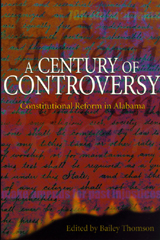 A Century of Controversy: Constitutional Reform in Alabama
H. Bailey Thomson
University of Alabama Press, 2002 A timely examination of Alabama’s severely criticized state constitution Alabama’s present constitution, adopted in 1901, is widely viewed as the source of many, if not most, of the state’s historic difficulties and inequities. Chief among these is a poorly funded school system, an imbalanced tax system that favors special business interests, legislated racism, and unchecked urban sprawl. Many citizens believe that, after 100 years of overburdening amendments and confusing addendums, the constitution urgently needs rewriting. With this book, Bailey Thomson has assembled the best scholarship on the constitution, its history, and its implications for the future. Historian Harvey H. Jackson III details the degree to which the 1901 document was drafted as a legal tool to ensure white supremacy at the expense of poor whites and blacks, while Joe A. Sumners illustrates how the constitution ties the hands of elected civic leaders by handing authority for local decisions to state government in Montgomery. James W. Williams Jr. explores the impact of the state constitution on the beleaguered tax system and the three principal “revenue crises” it has engendered. Thomson’s own contribution explains how, in contrast to the previous failed attempts for constitutional change by past governors who appealed to their fellow power brokers, the current reform movement arose from the grassroots level. As citizens and politicians in Alabama review the 1901 constitution for revision, as they navigate the pitfalls and opportunities inherent in change, it is incumbent that they inform themselves adequately on the controversies that have swirled around the constitution since its adoption. The future of Alabama’s government will depend upon it, as will the fortunes of Alabama’s business interests and the well-being of every citizen in the state for years to come.
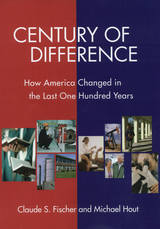 Century of Difference: How America Changed in the Last One Hundred Years
Claude S. Fischer
Russell Sage Foundation, 1976 In every generation, Americans have worried about the solidarity of the nation. Since the days of the Mayflower, those already settled here have wondered how newcomers with different cultures, values, and (frequently) skin color would influence America. Would the new groups create polarization and disharmony? Thus far, the United States has a remarkable track record of incorporating new people into American society, but acceptance and assimilation have never meant equality. In Century of Difference, Claude Fischer and Michael Hout provide a compelling—and often surprising—new take on the divisions and commonalities among the American public over the tumultuous course of the twentieth century. Using a hundred years worth of census and opinion poll data, Century of Difference shows how the social, cultural, and economic fault lines in American life shifted in the last century. It demonstrates how distinctions that once loomed large later dissipated, only to be replaced by new ones. Fischer and Hout find that differences among groups by education, age, and income expanded, while those by gender, region, national origin, and, even in some ways, race narrowed. As the twentieth century opened, a person's national origin was of paramount importance, with hostilities running high against Africans, Chinese, and southern and eastern Europeans. Today, diverse ancestries are celebrated with parades. More important than ancestry for today's Americans is their level of schooling. Americans with advanced degrees are increasingly putting distance between themselves and the rest of society—in both a literal and a figurative sense. Differences in educational attainment are tied to expanding inequalities in earnings, job quality, and neighborhoods. Still, there is much that ties all Americans together. Century of Difference knocks down myths about a growing culture war. Using seventy years of survey data, Fischer and Hout show that Americans did not become more fragmented over values in the late-twentieth century, but rather were united over shared ideals of self-reliance, family, and even religion. As public debate has flared up over such matters as immigration restrictions, the role of government in redistributing resources to the poor, and the role of religion in public life, it is important to take stock of the divisions and linkages that have typified the U.S. population over time. Century of Difference lucidly profiles the evolution of American social and cultural differences over the last century, examining the shifting importance of education, marital status, race, ancestry, gender, and other factors on the lives of Americans past and present. A Volume in the Russell Sage Foundation Census Series
 A Century of International Crisis Behavior
Jonathan Wilkenfeld
University of Michigan Press, 2026 Perhaps more than ever, we need to invest in the study of the causes and consequences of crises. Since its founding in 1975, the International Crisis Behavior (ICB) Project has aimed to better equip academics, policymakers and the next generation of engaged citizens to make sense of why crises arise and how they can be more effectively managed and prevented. The ICB Project’s data holdings consist of full-length qualitative case studies, along with an expanding range of quantitative datasets that include information regarding the characteristics of the states in crisis, crisis behavior, attempts at third-party crisis management, the role of nonstate actors, and the system-level context.
A Century of International Crisis Behavior summarizes the evolving patterns of international crisis behavior in the nearly 500 cases cataloged since 1918, provides an accounting of the state of the scholarship to make sense of the patterns, and presents new findings that advance our understanding. Chapters are grouped according to their level of analysis: studies of systems, dyads, and states. The authors highlight what we have learned and what we have yet to learn regarding the prevention, escalation, and de-escalation of international crises.
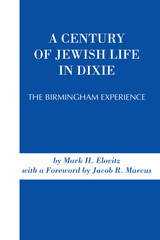 A Century of Jewish Life In Dixie: The Birmingham Experience
Mark H. Elovitz
University of Alabama Press, 2003 Exploring the resilience, identity, and contributions of Southern Jews in the heart of Alabama.
This is the first substantial history of the Jews in any inland town or city of the industrial South. A Century of Jewish Life in Dixie offers a vivid and deeply researched portrait of Birmingham, Alabama’s Jewish community. Mark H. Elovitz traces the community’s evolution from its immigrant roots in the late 19th century through its growth into a vibrant and influential part of Southern society. Drawing on archival records, oral histories, and cultural analysis, Elovitz explores how Southern Jews balanced tradition and assimilation, navigated racial and religious tensions, and contributed to civic and economic life in a region undergoing dramatic transformation. This book provides a rare and nuanced look at Jewish identity in the American South, making it an essential resource for scholars of Jewish studies, Southern history, and American cultural life.
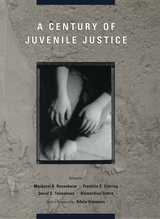 A Century of Juvenile Justice
Edited by Margaret K. Rosenheim, Franklin E. Zimring, David S. Tanenhaus, and Be
University of Chicago Press, 2002 Since its inception in Illinois in 1899, the juvenile court has become a remarkable legal and social institution all over the developed world, one that plays a singular role in modern government. At its founding, the juvenile court was intended to reverse longstanding legal traditions, and place the child's interests first in areas of law ranging from dependency to delinquency. Yet in recent years legal responses to youths' offences have undergone striking changes, as more juveniles are being transferred to adult courts and serving adult sentences.
A Century of Juvenile Justice is the first standard, comprehensive and comparative reference work to span the history and current state of juvenile justice. An extraordinary assemblage of leading authorities have produced a accessible, illustrated document, designed as a reference for everyone from probation personnel and police to students, educators, lawyers, and social workers.
Editors' introductions place into context each of the book's five sections, which consider the history of the ideas around which the system was organized and the institutions and practices that resulted; the ways in which this set of institutions and practices interacts with other aspects of government policy toward children in the U.S. and in other nations; and also the ways in which changing social and legal meanings of childhood and youth have continued to influence juvenile justice. The doctrine and institutions of juvenile justice in Europe, Japan, England, and Scotland are profiled in depth to show the range of modern responses to youth crime and child endangerment. This comparative material provides a fresh basis for judging the direction of policy in the U.S.
Margaret K. Rosenheim is the Helen Ross professor Emerita in the School of Social Service Administration of the University of Chicago. Franklin Zimring is Professor of Law and Director of the Earl Warren Legal Institute at the University of California, Berkeley. David S. Tanenhaus is Assistant Professor of History at the University of Nevada, Las Vegas. Bernardine Dohrn is Director of the Children and Family Justice Center of Northwestern University Law School.
Contributors:
Anthony Bottoms
Jaap Doek
Bernardine Dohrn
Peter Edelman
John Eekelaar
David Farrington
Frank Furstenberg
Michael Grossberg
John Laub
Paul Lerman
Rolf Loeber
Akira Morita
Margaret K. Rosenheim
Elizabeth Scott
David S. Tanenhaus
Lee Teitelbaum
Mark Testa
Franklin E. Zimring
 A Century of Music Under the Stars: A History of the Mann Center for the Performing Arts and Robin Hood Dell
McCarthy, Jack, and The Mann Center for the Performing Arts
Temple University Press, 2025 Everyone has a memorable story about attending a performance at the Mann Center for the Performing Arts or the Robin Hood Dell—“the Mann” and “the Dell” to their many patrons. Lavishly illustrated with more than 200 images, meticulously researched, and engagingly written by historian Jack McCarthy, A Century of Music Under the Stars reveals the fascinating inside story of Philadelphia’s premier outdoor concert venues on the eve of the Mann’s 50th Anniversary.
The Dell, which opened in 1930, and the Mann, which opened in 1976, were initially built as summer homes for The Philadelphia Orchestra. As McCarthy deftly recounts, the Mann Center evolved to host the world’s top artists across many musical genres. Contemporary audiences have gathered on the Great Lawn for concerts by performers including James Taylor, The Roots, Phish, Diana Ross, John Legend, and others.
The venues, however, are more than just the music; they are about the beautiful natural setting, communal atmosphere, and spectacular view of the Philadelphia skyline. A Century of Music Under the Stars is a revealing and celebratory look back at beloved Philadelphia cultural icons. This informative and illuminating history will provide happy memories for generations of music lovers.
|
|


